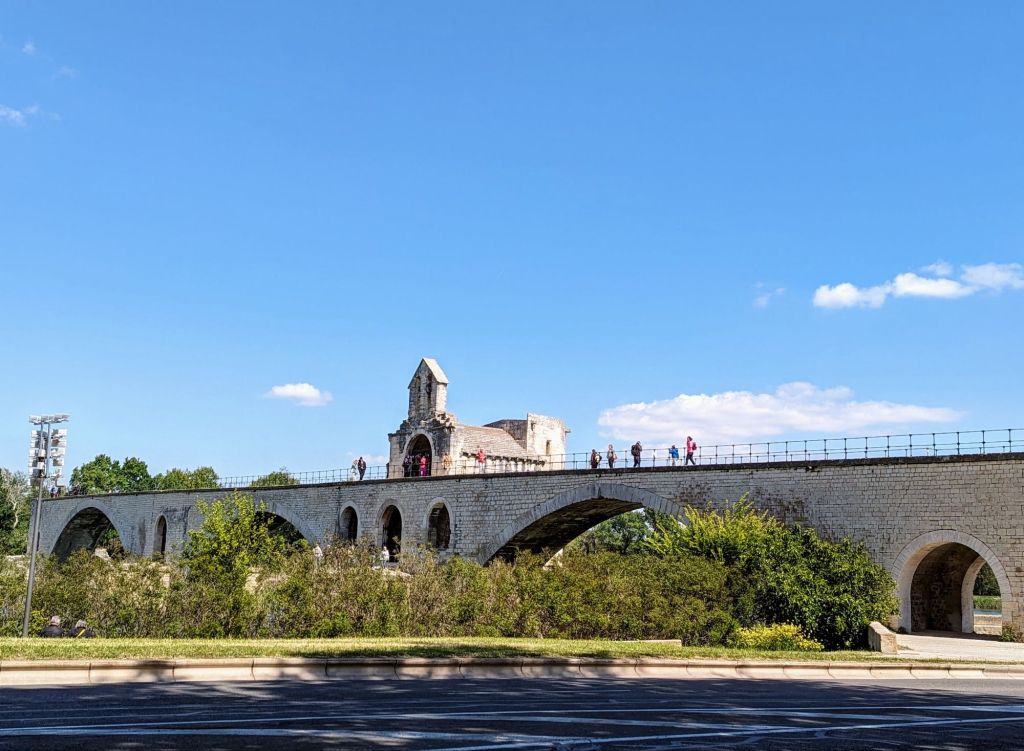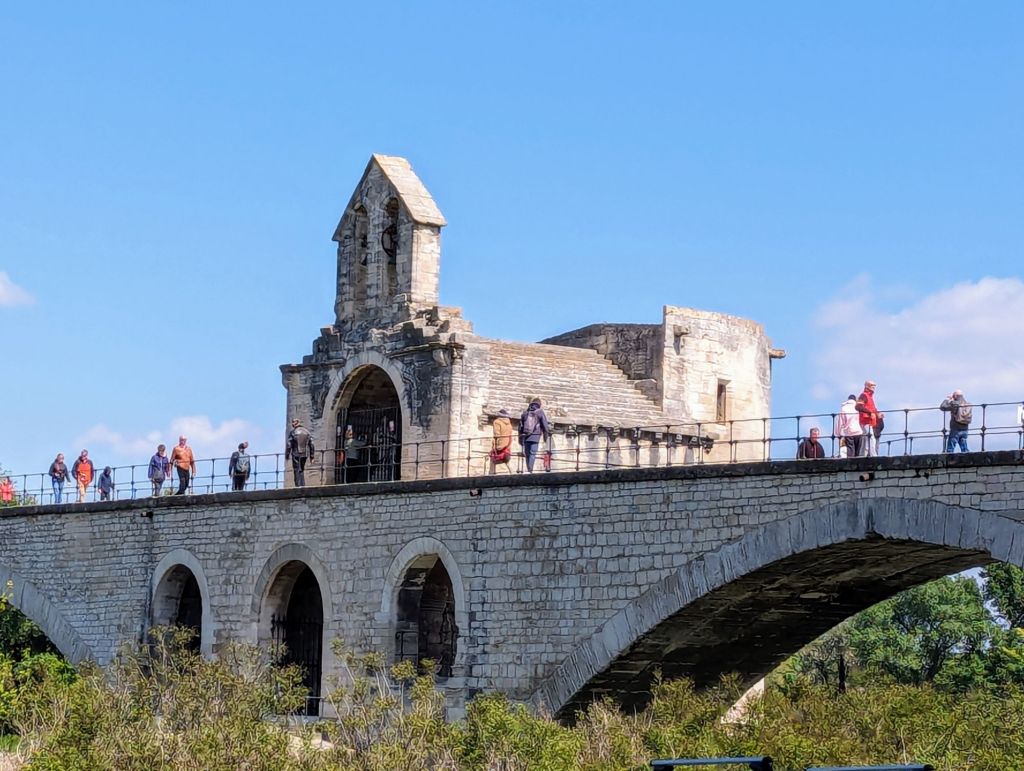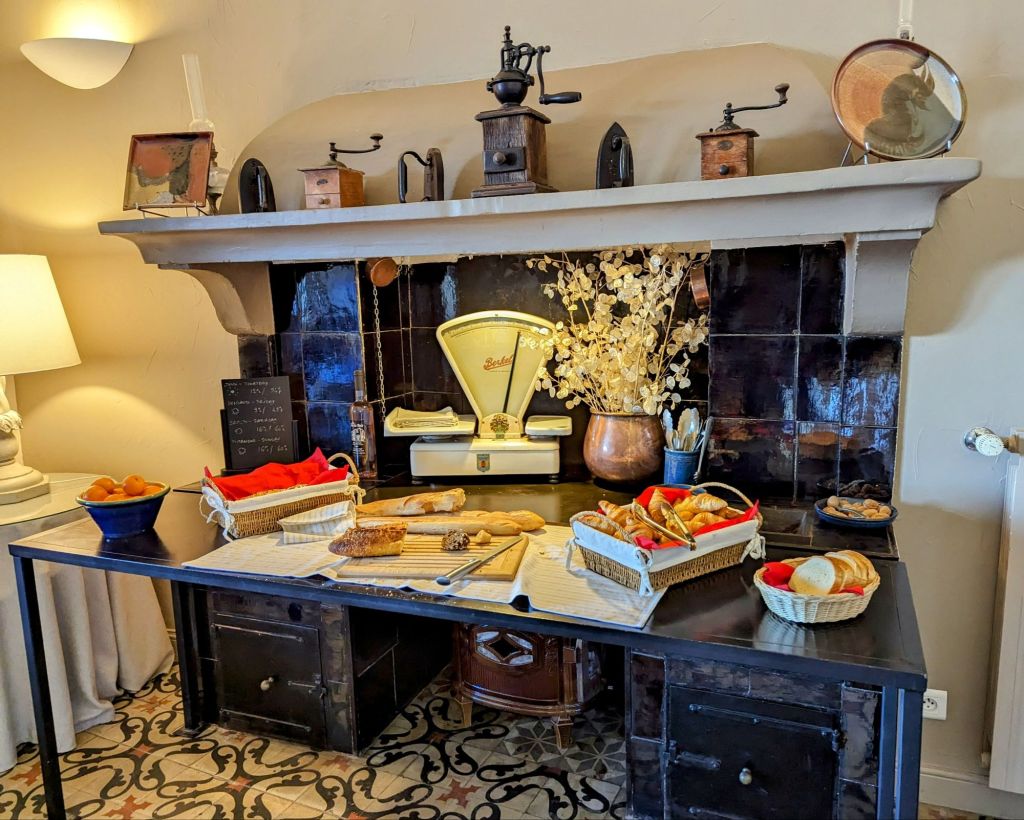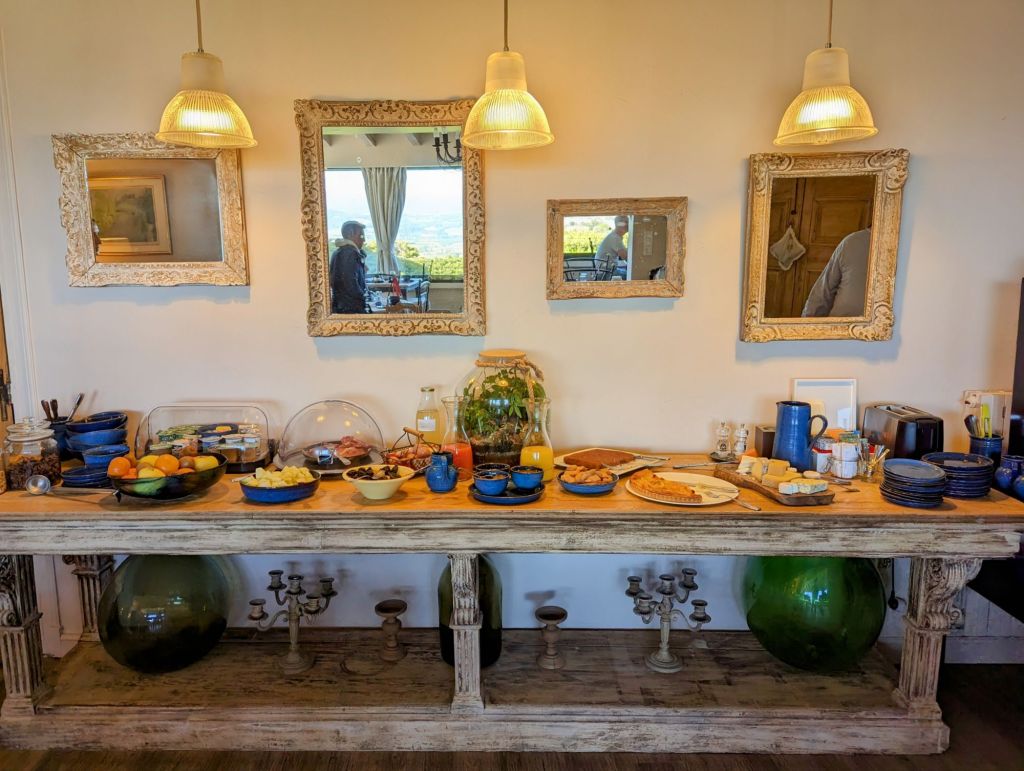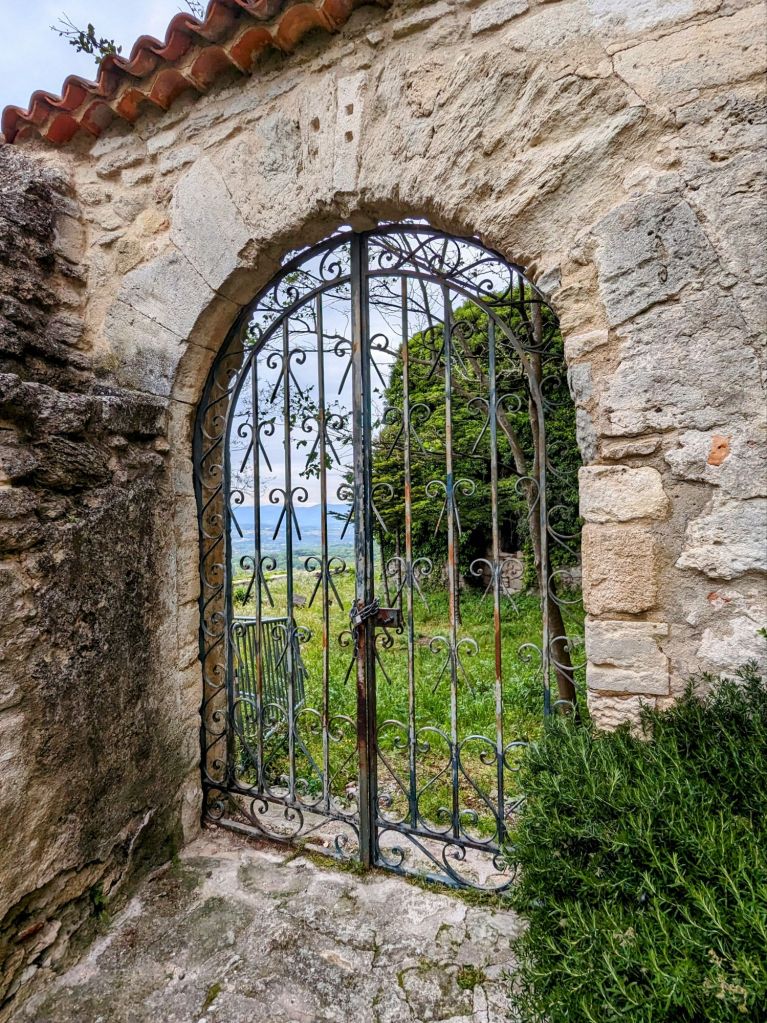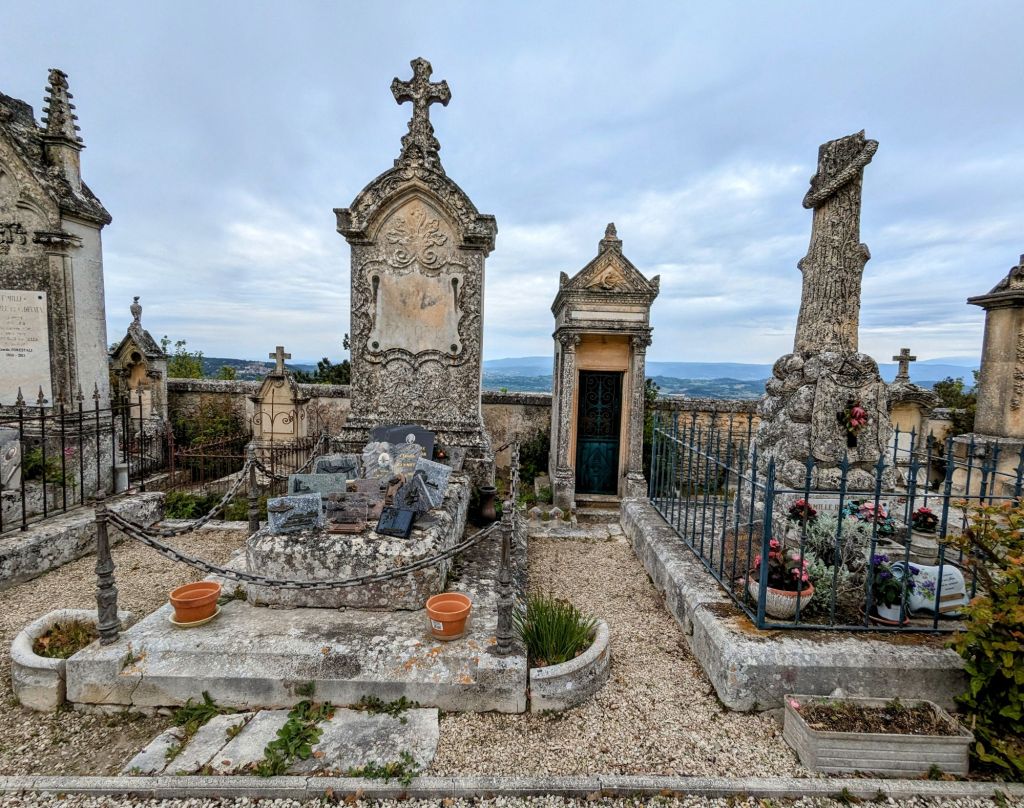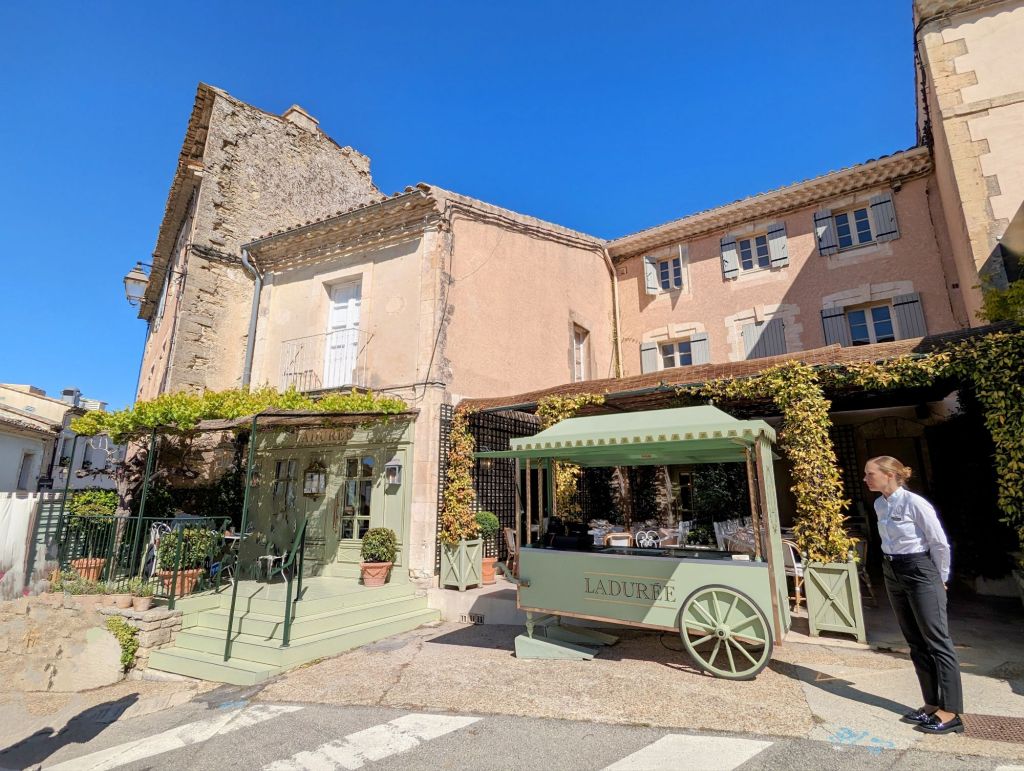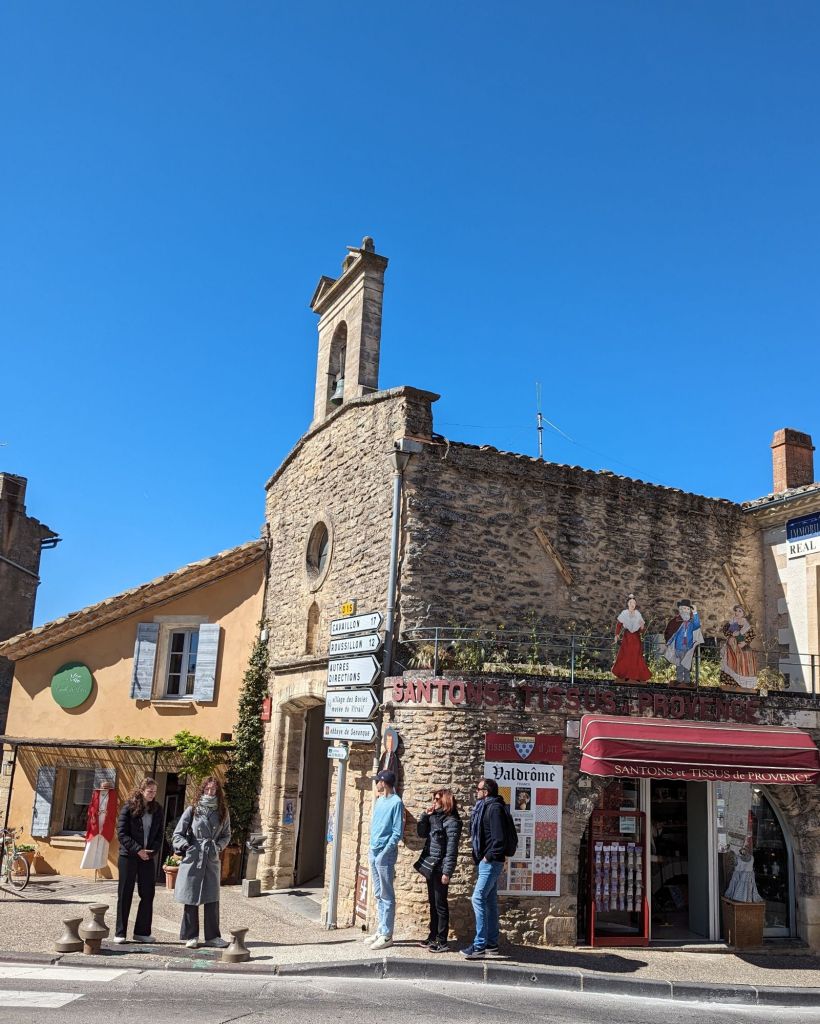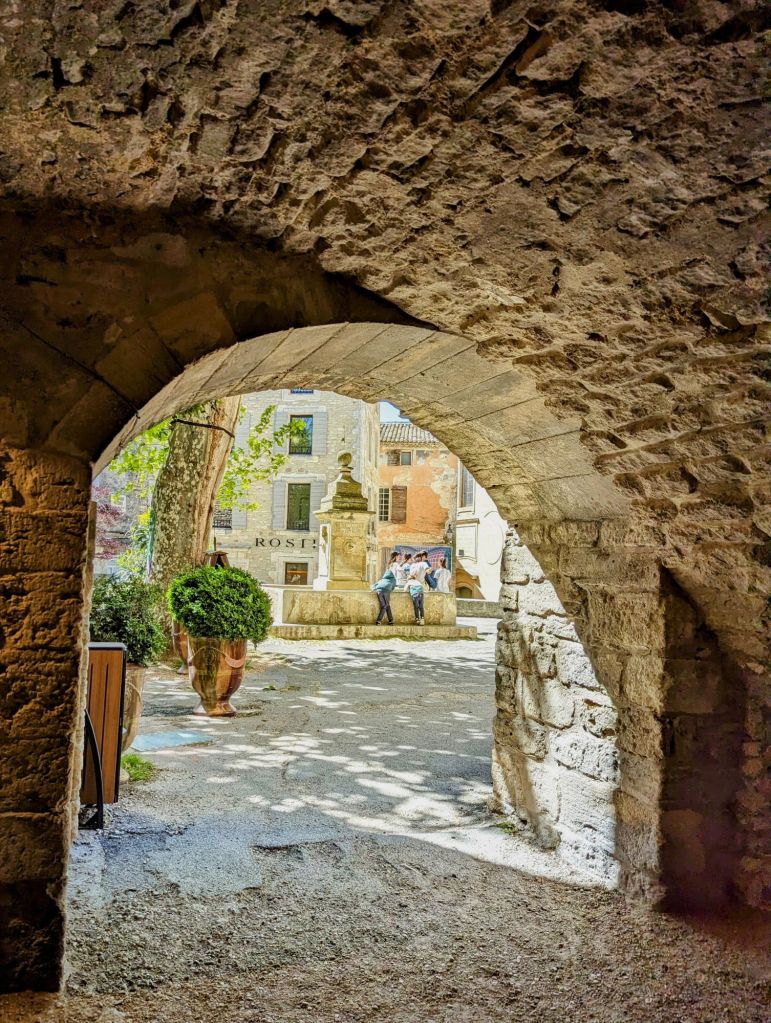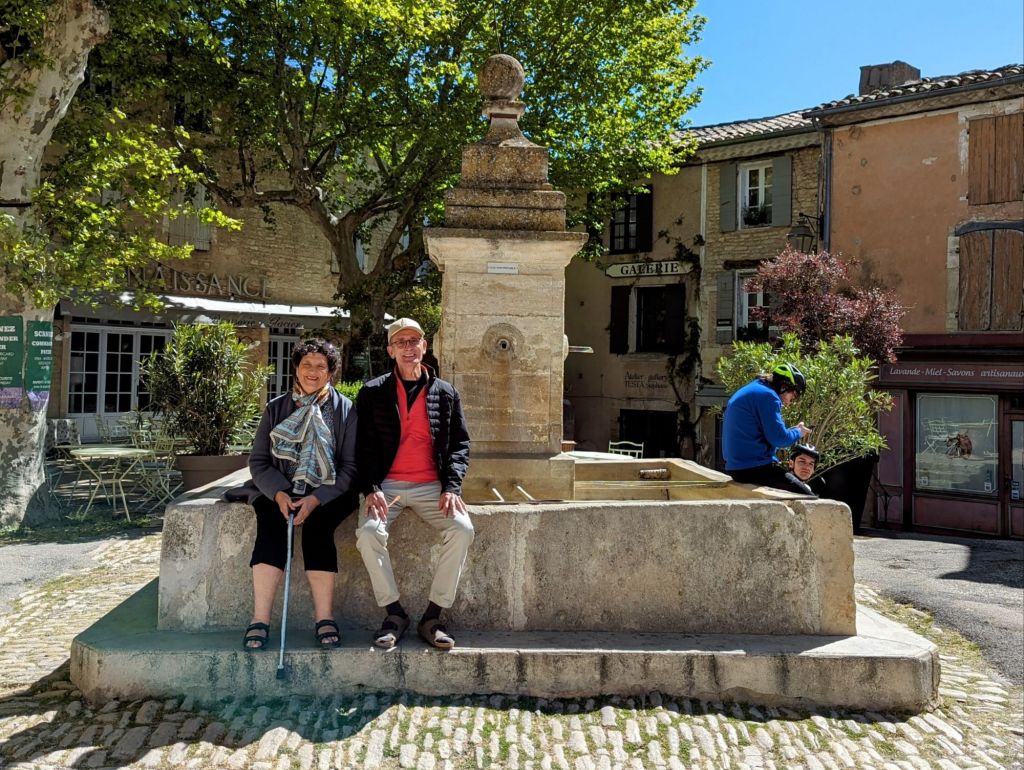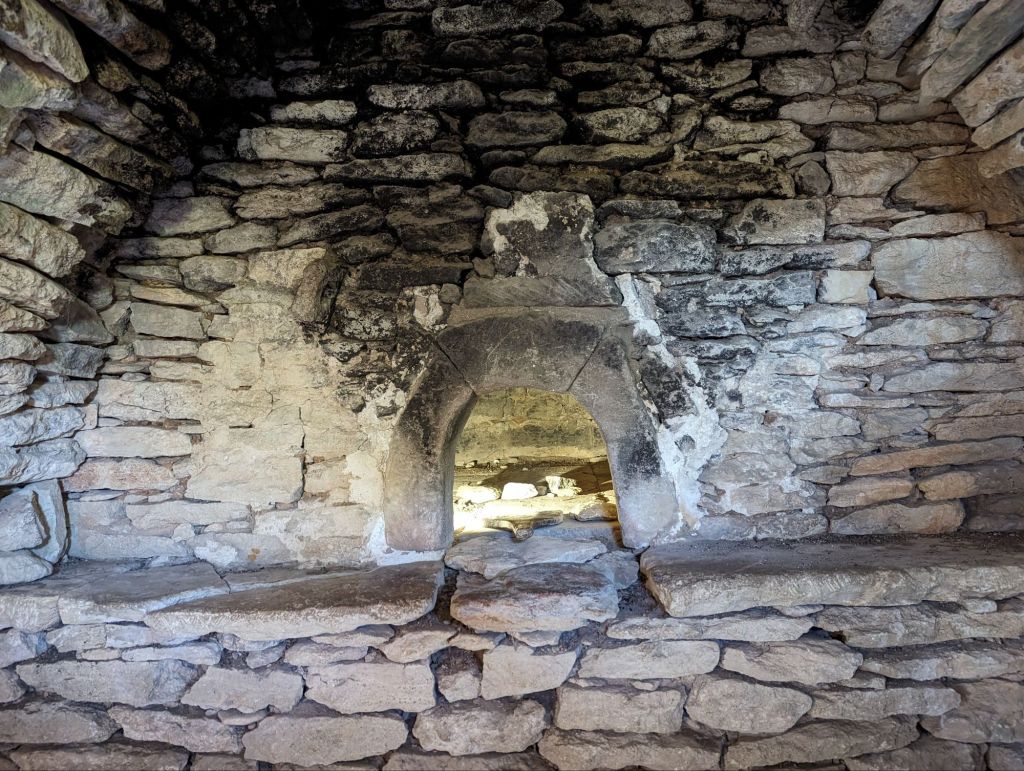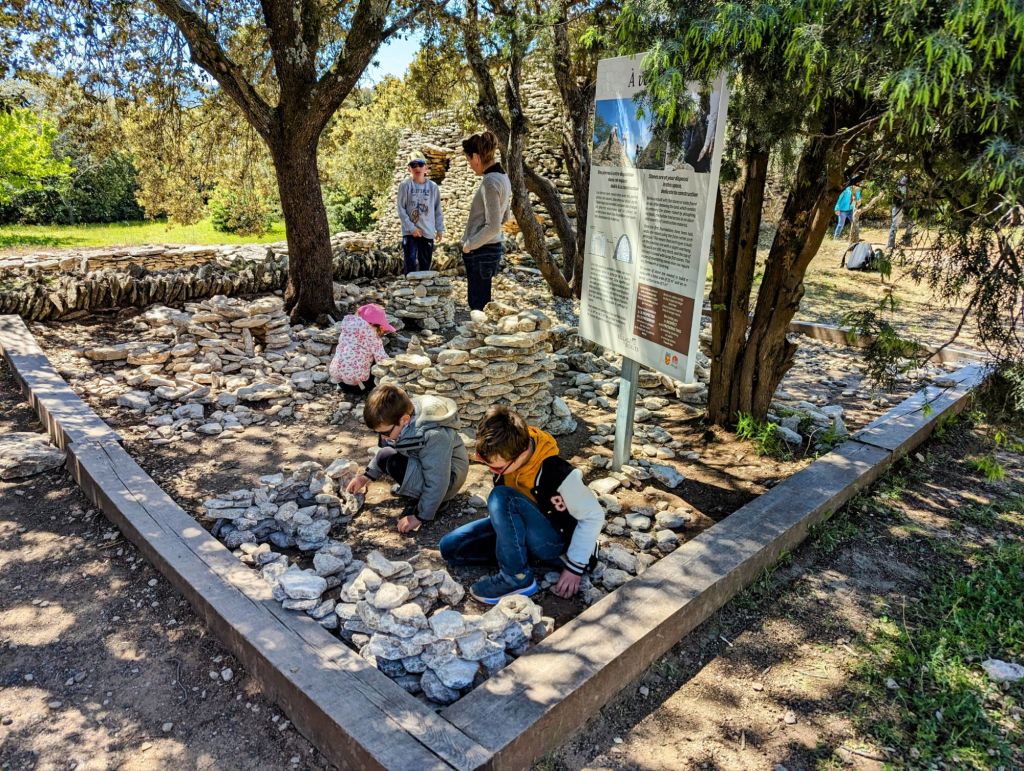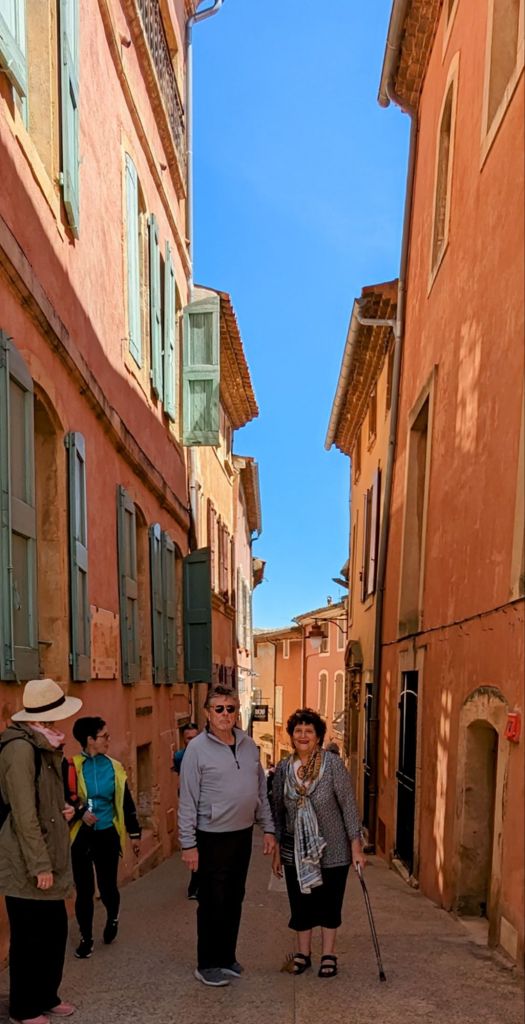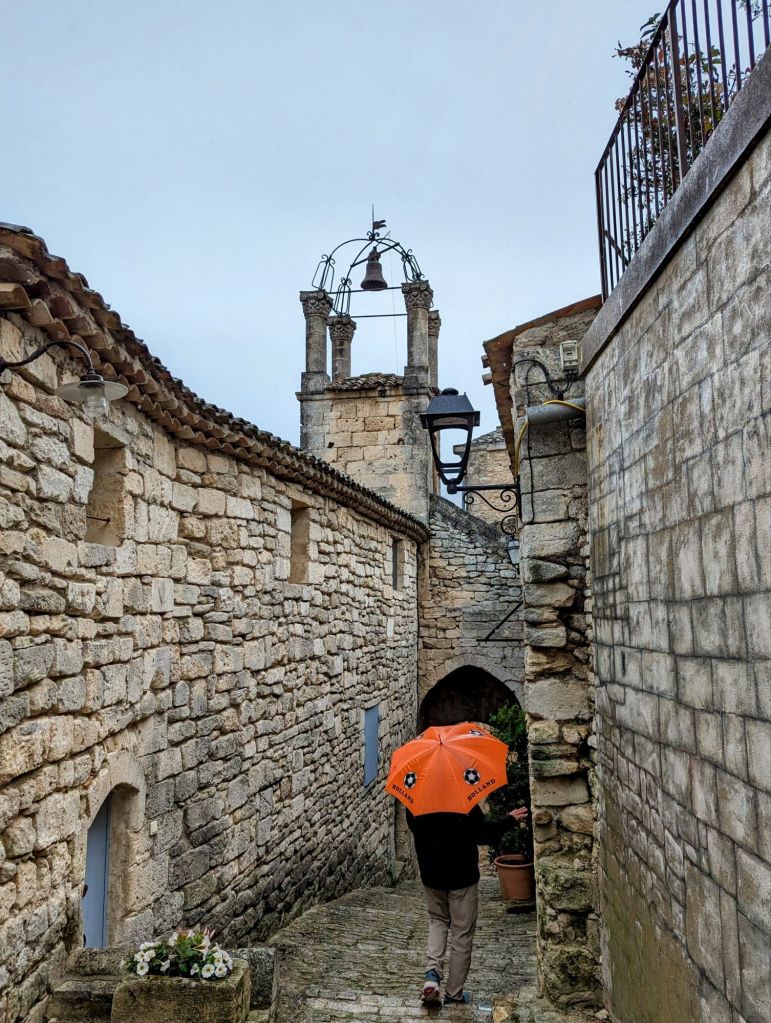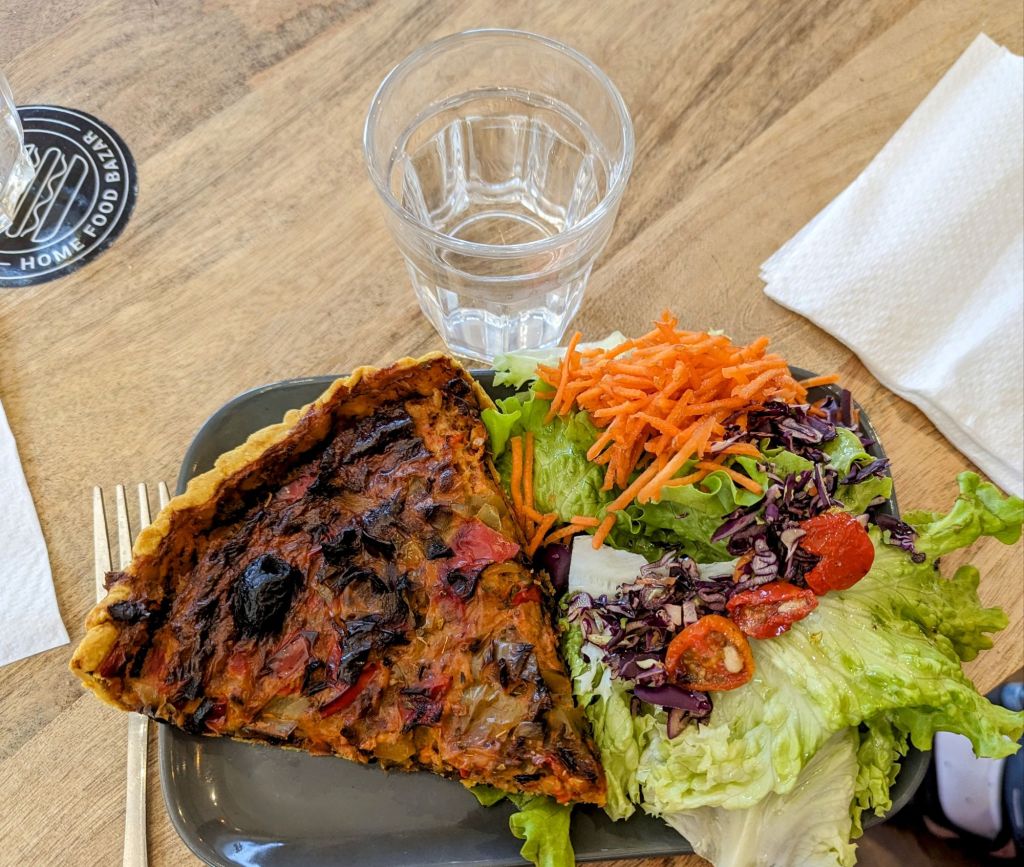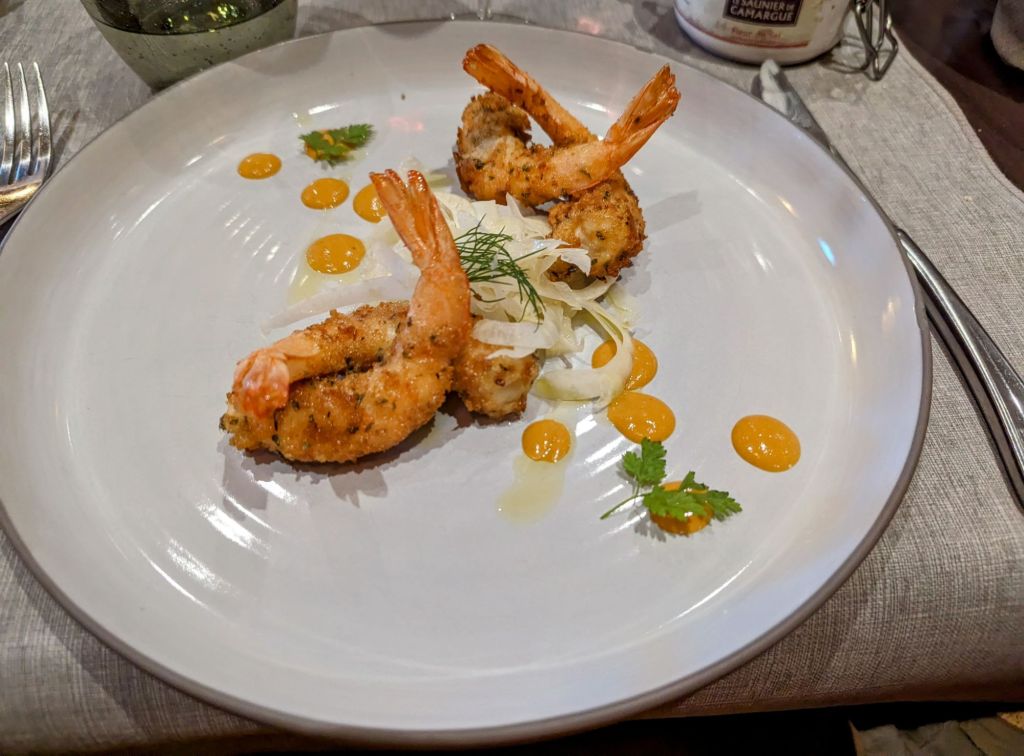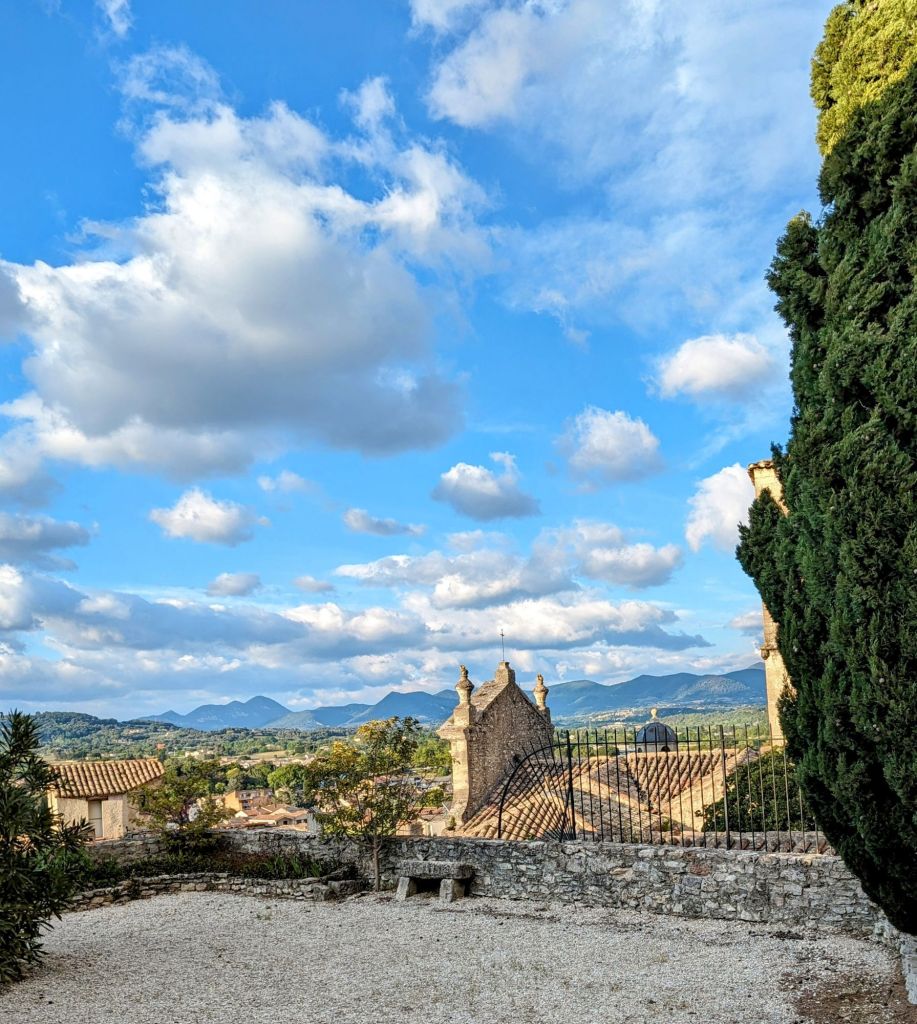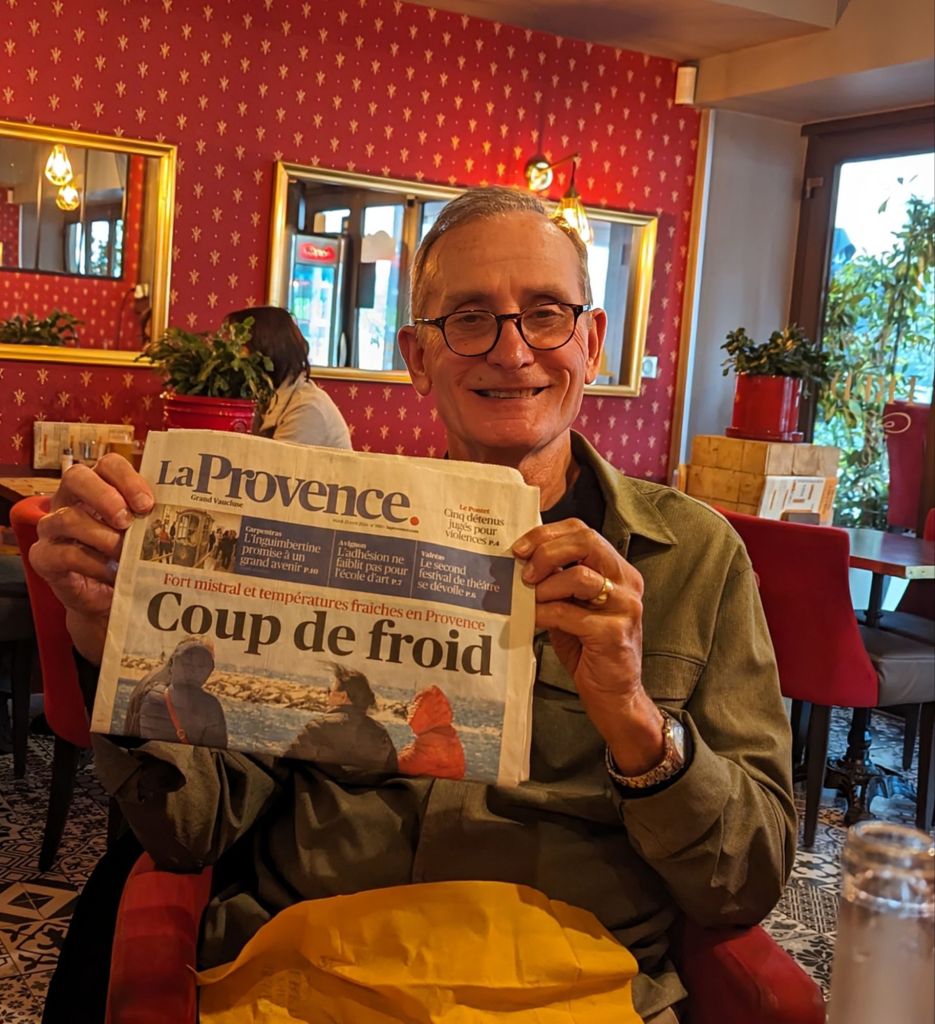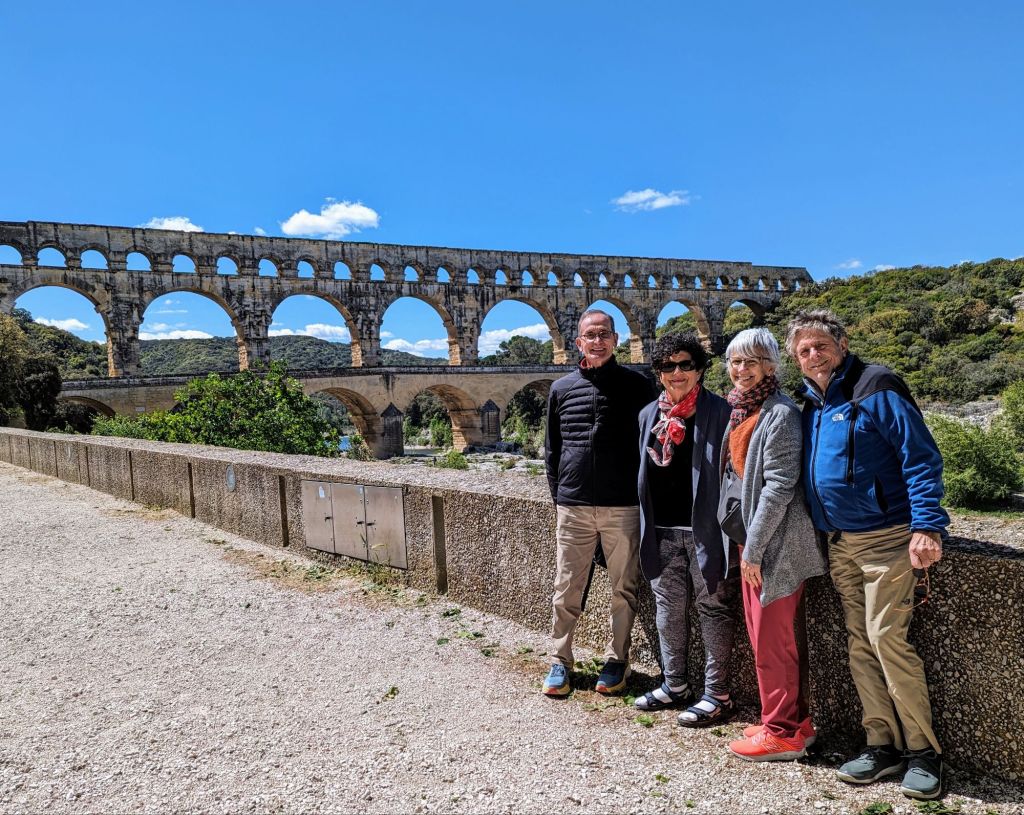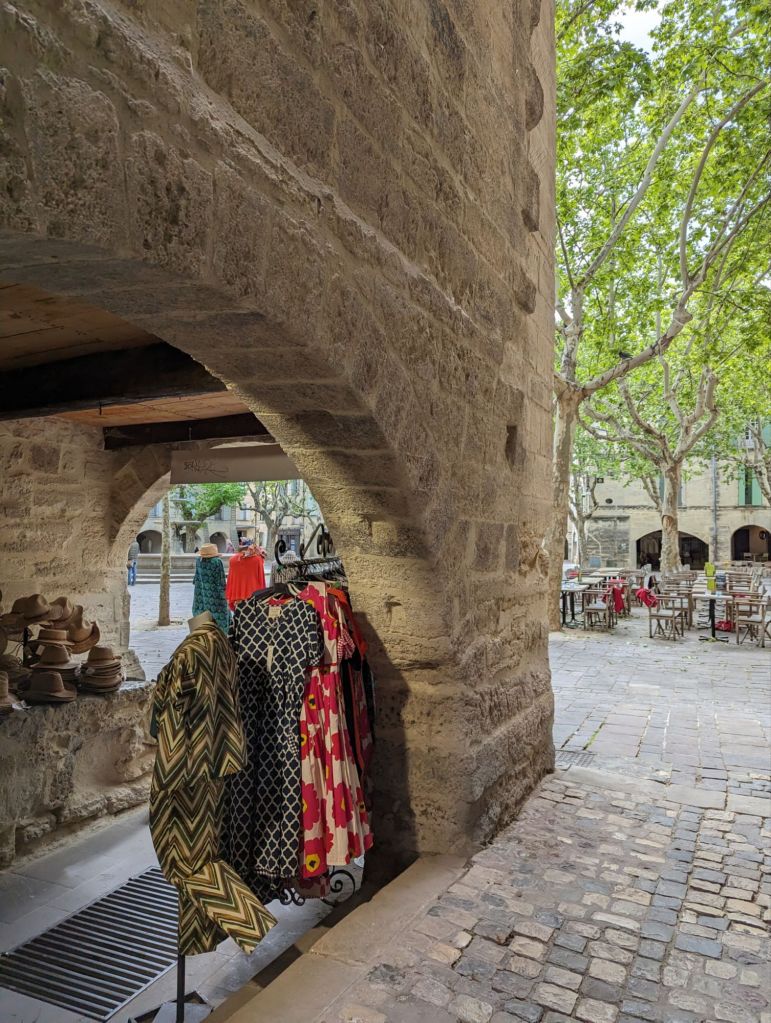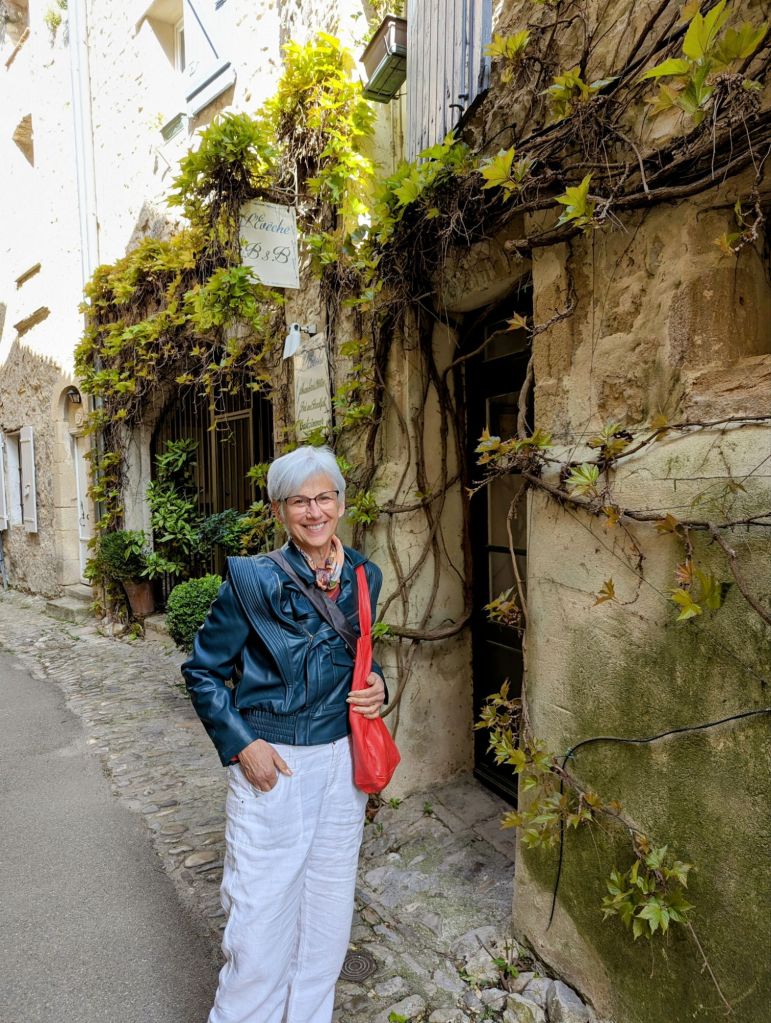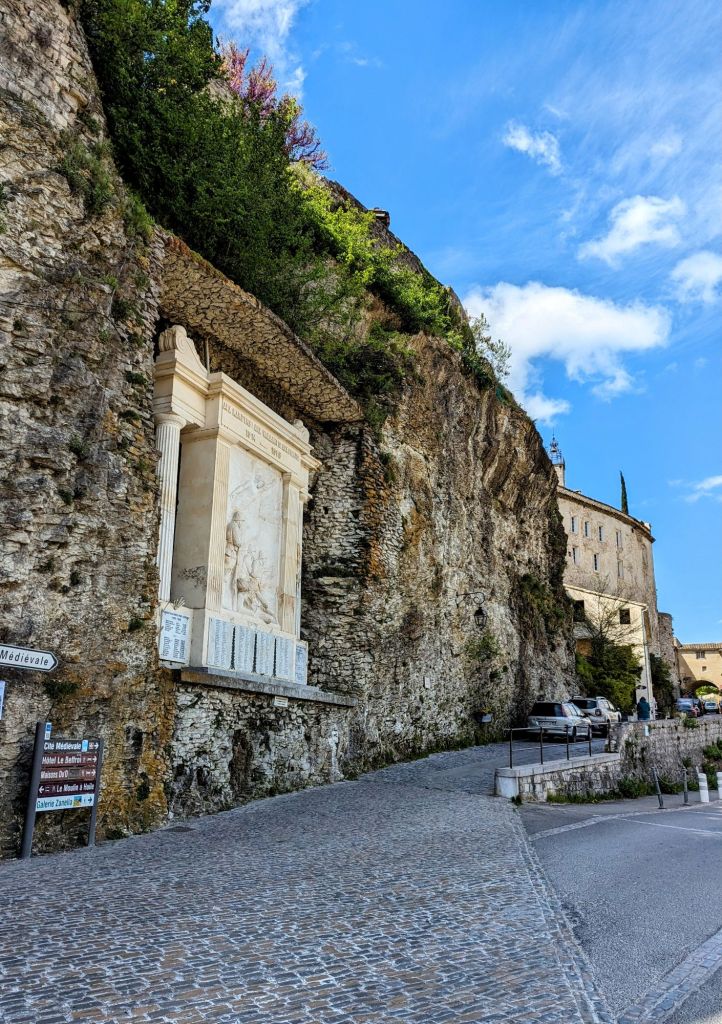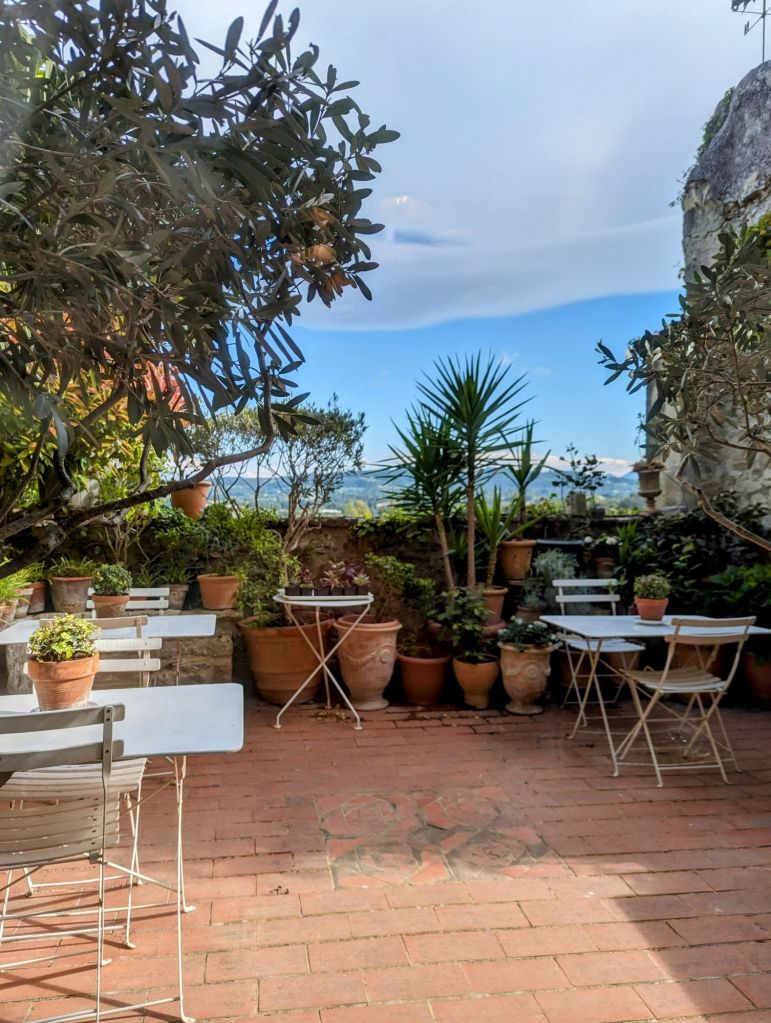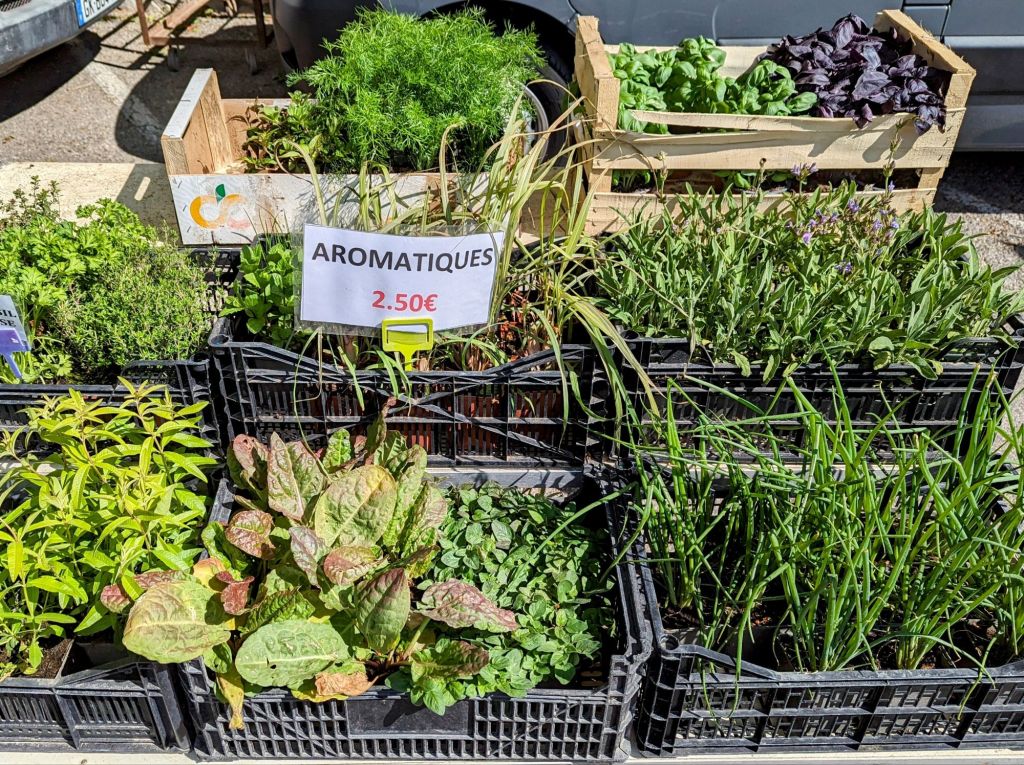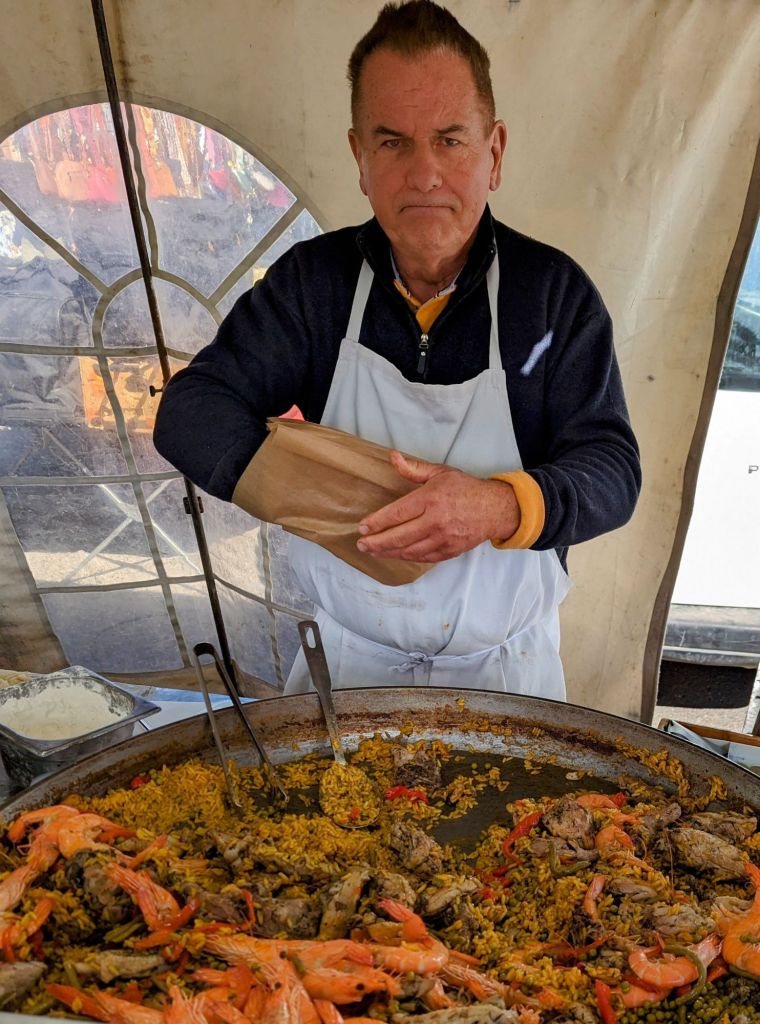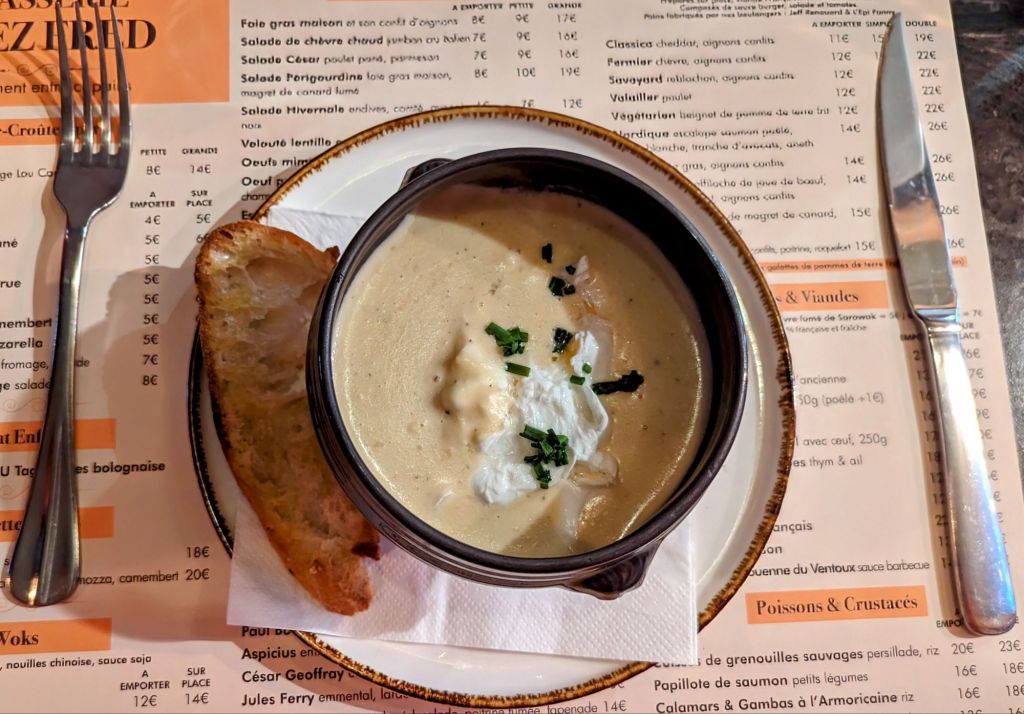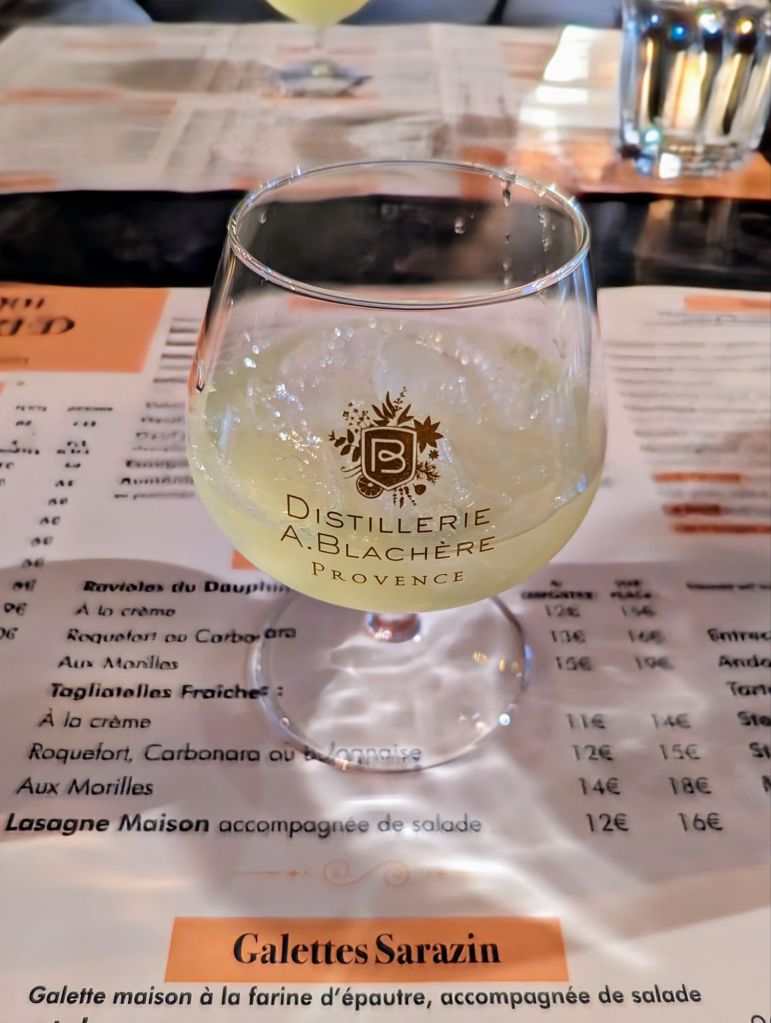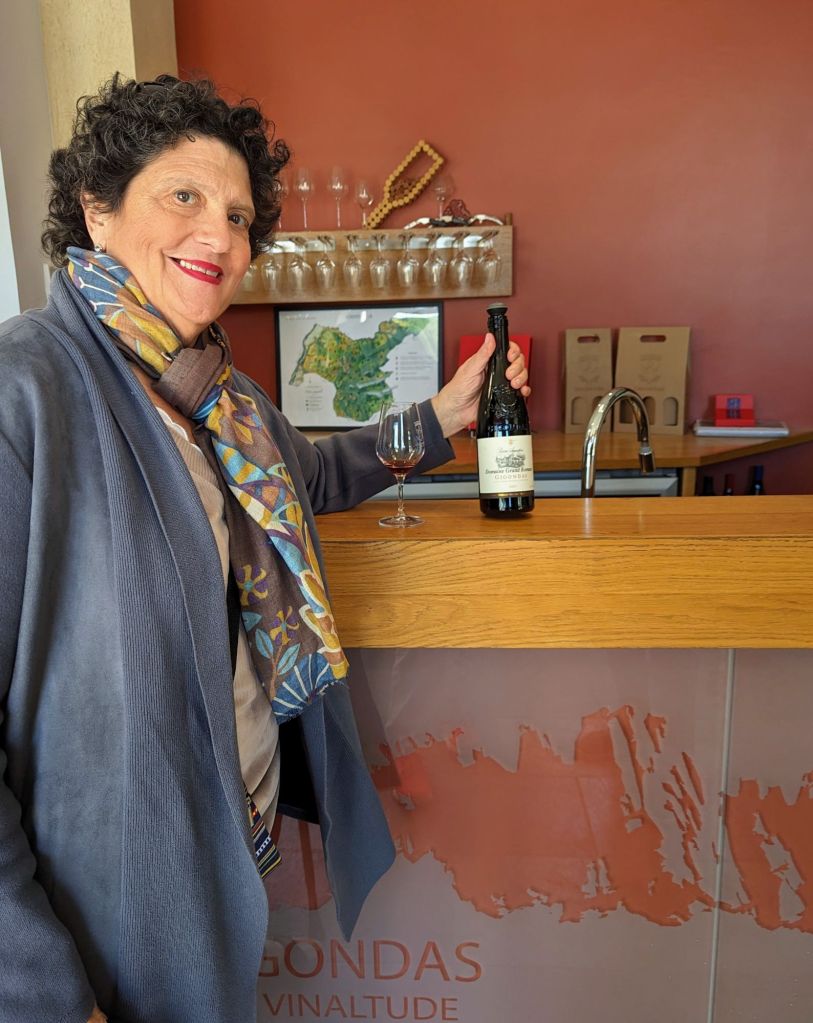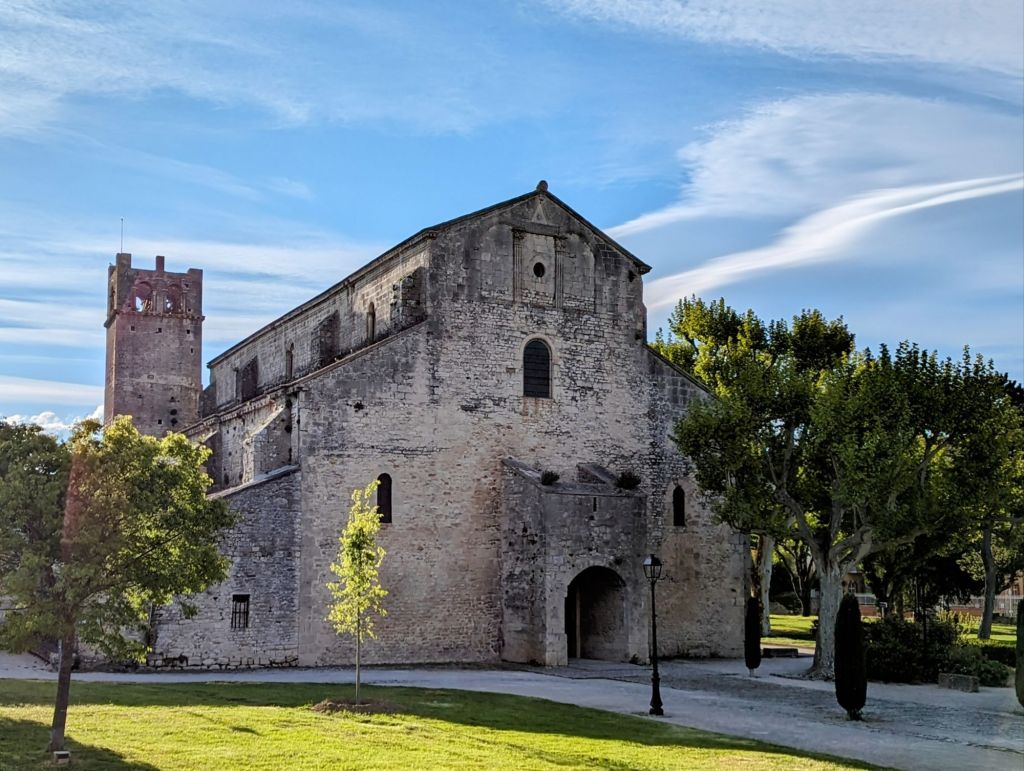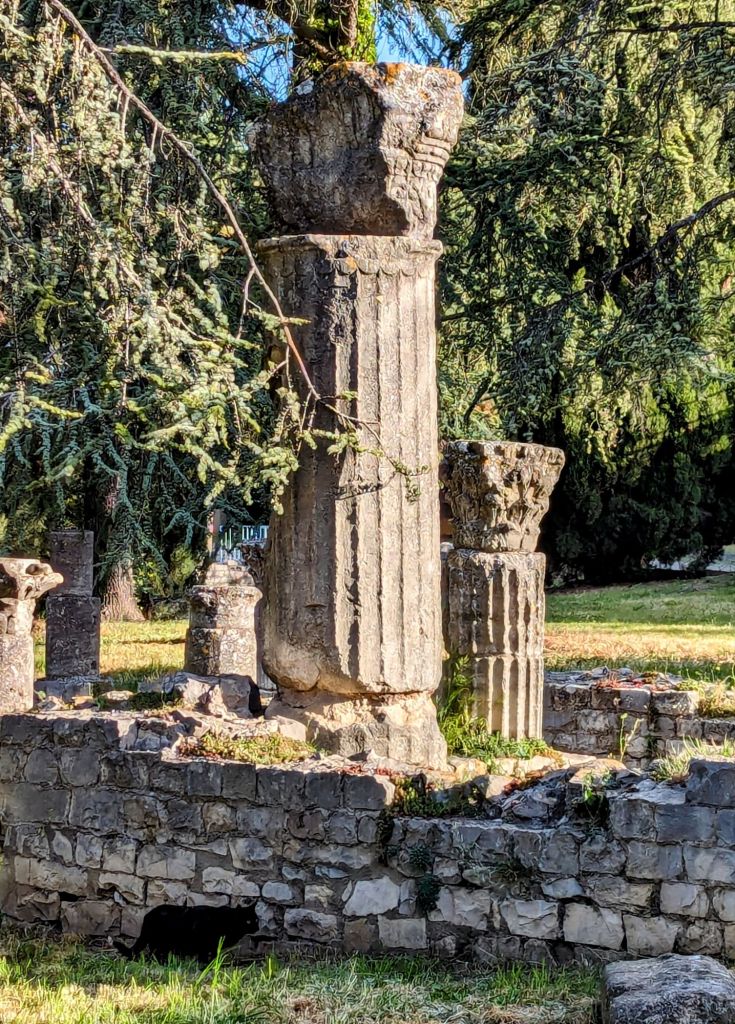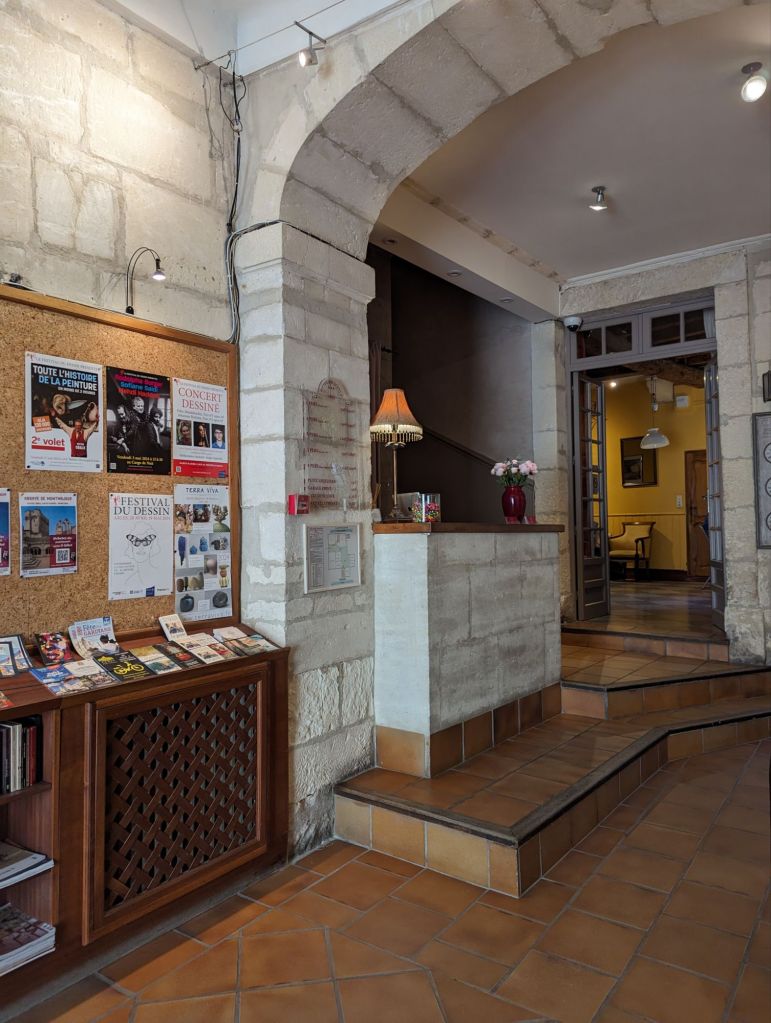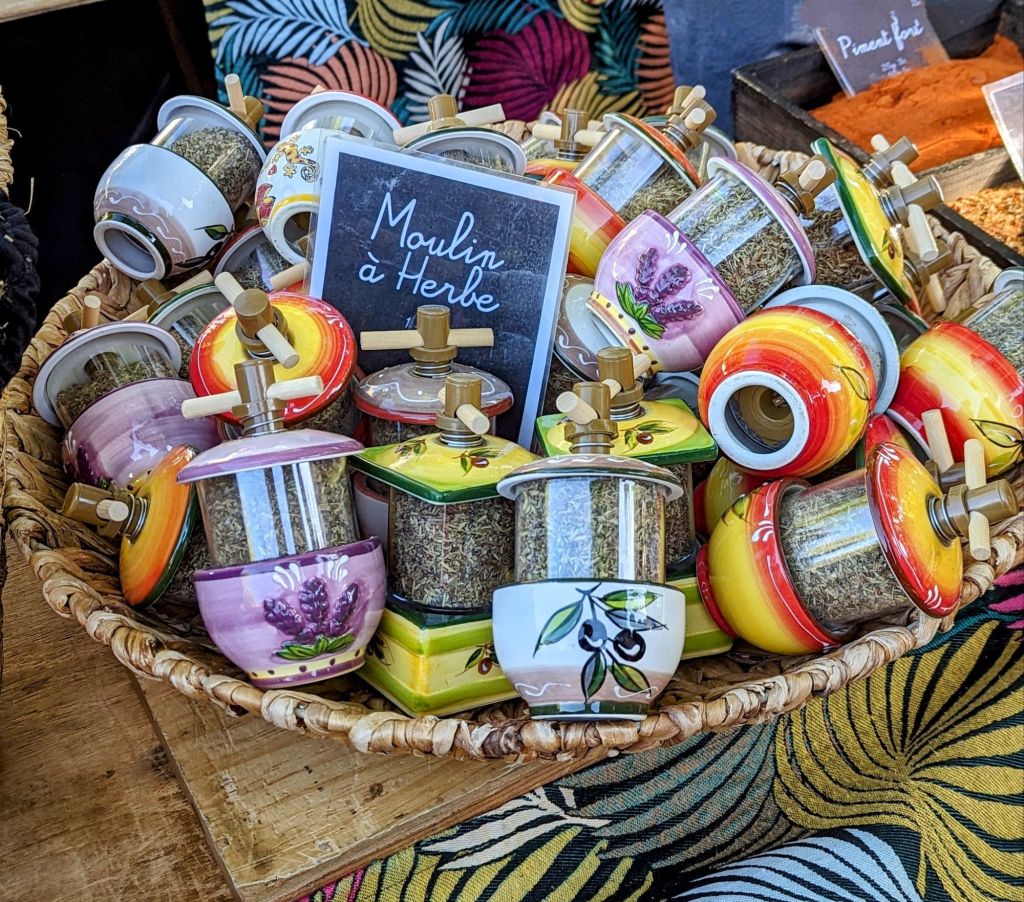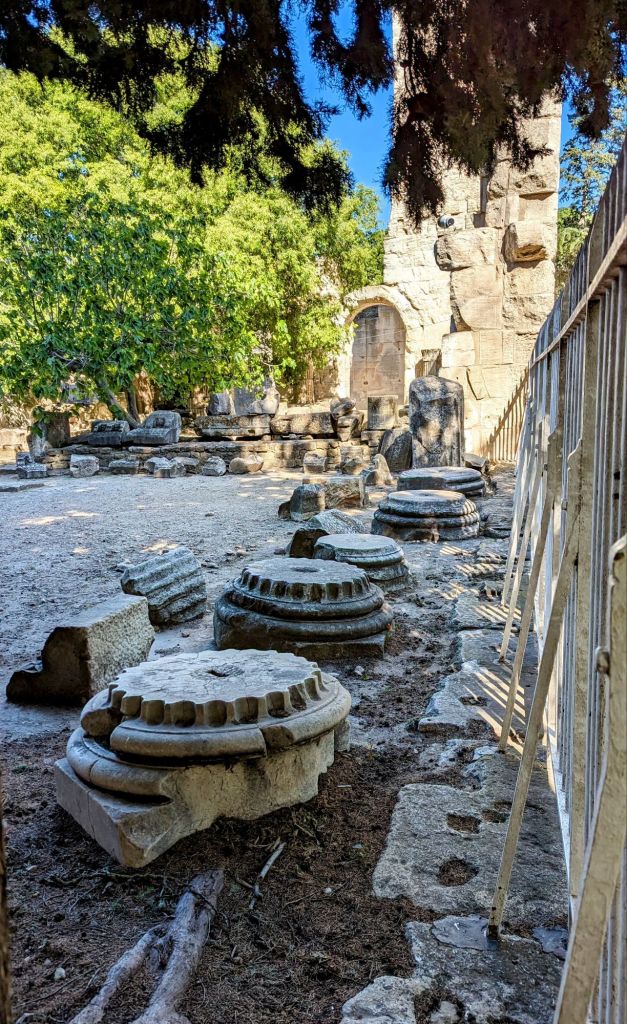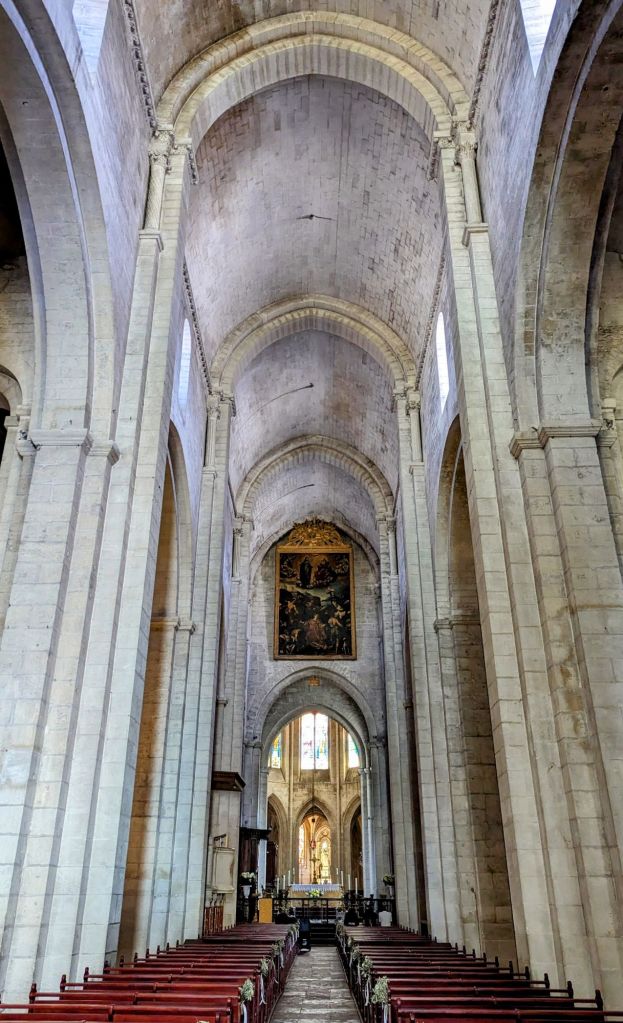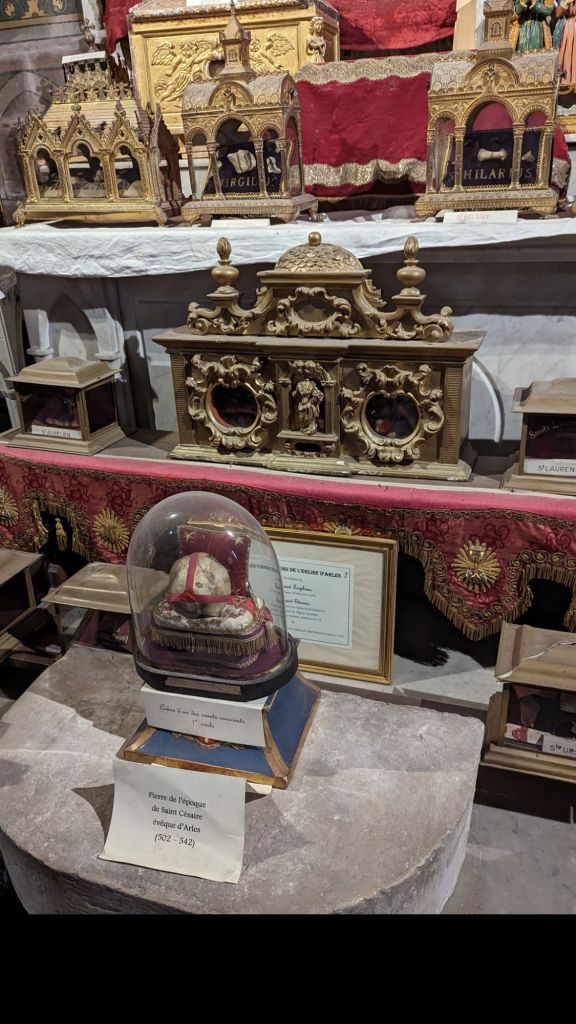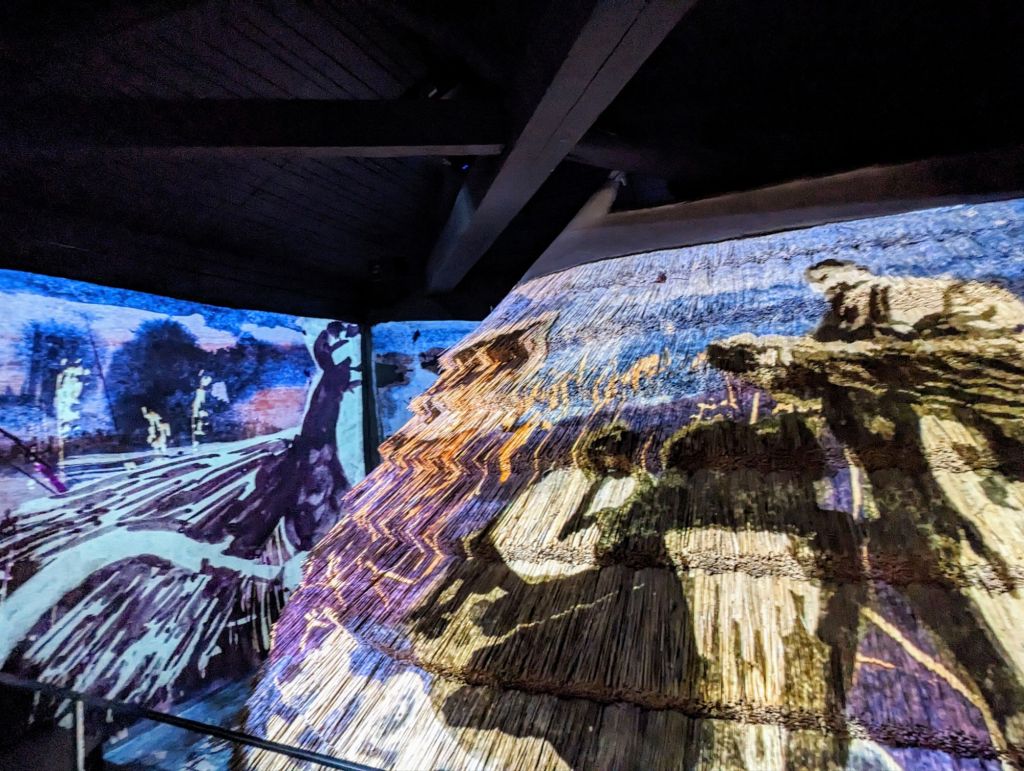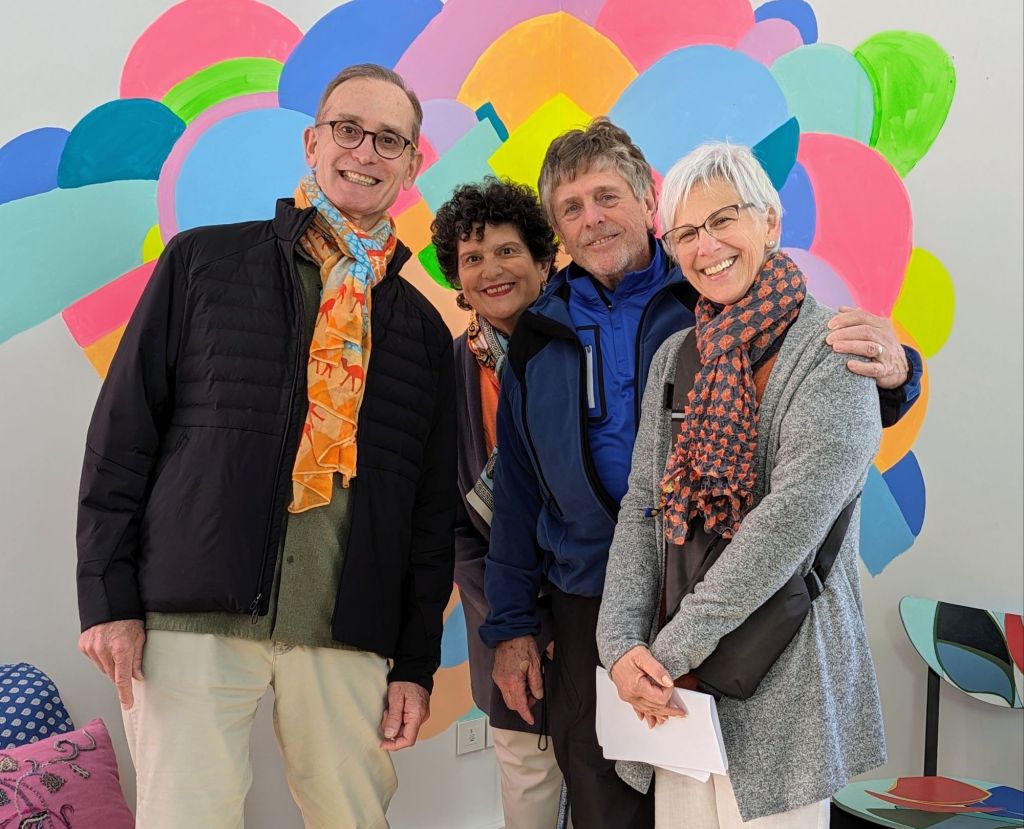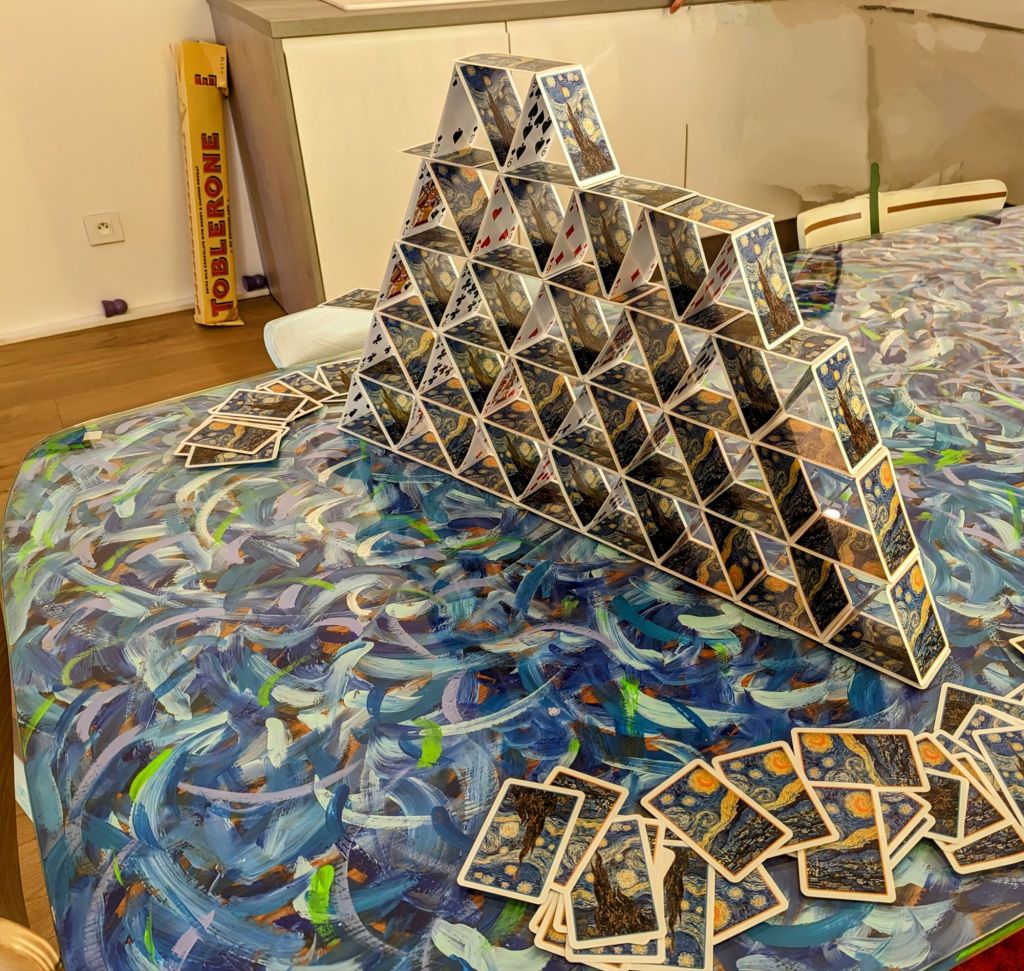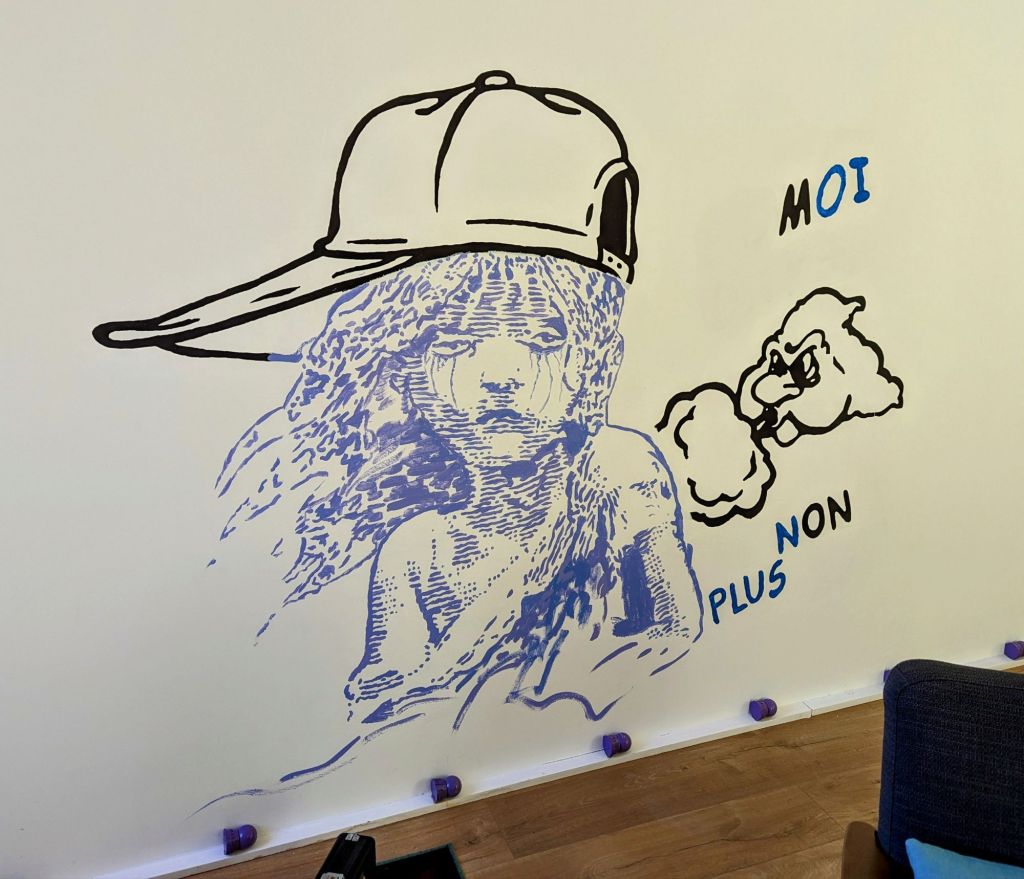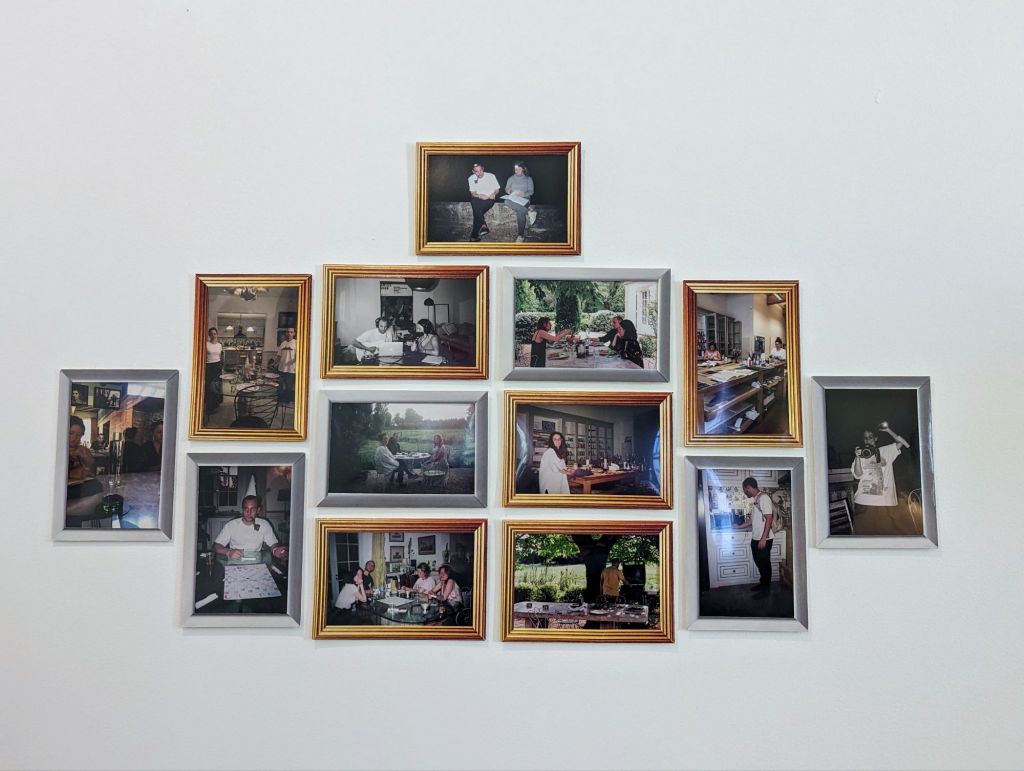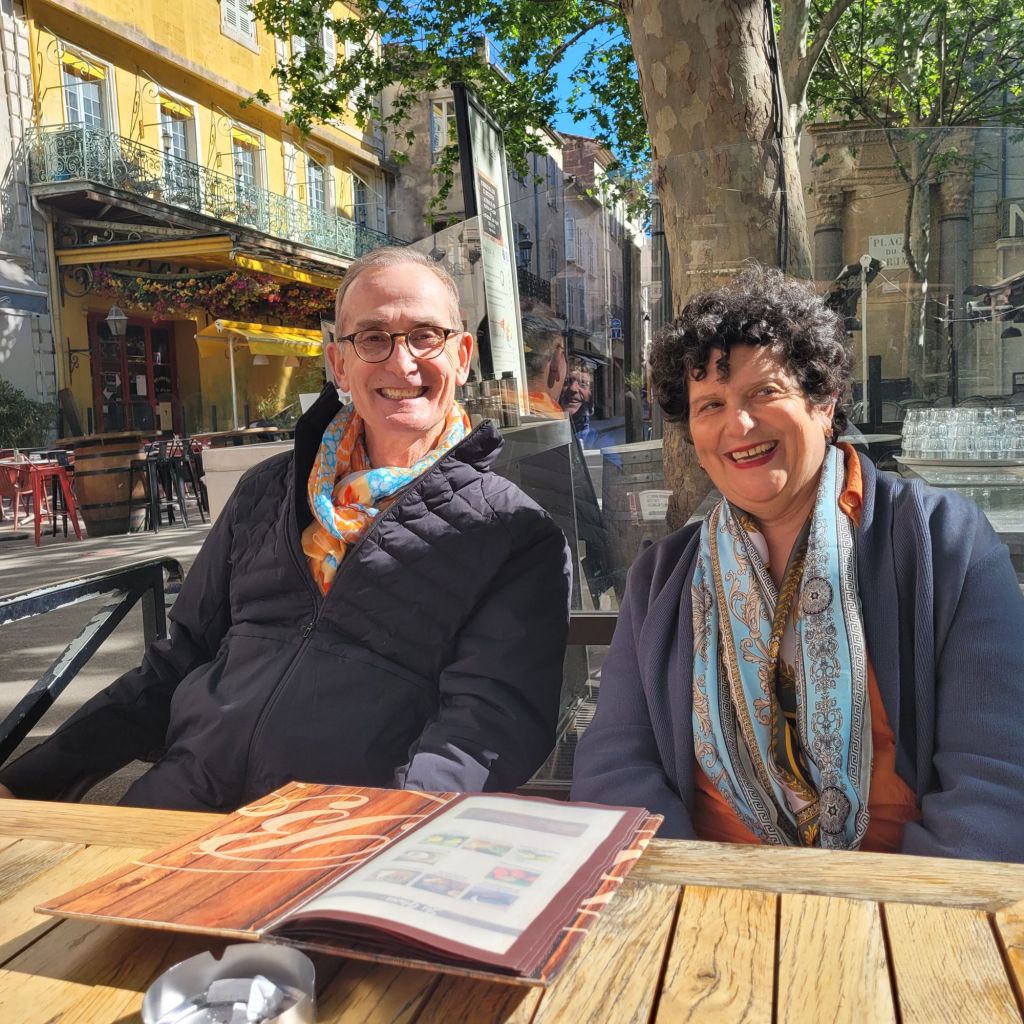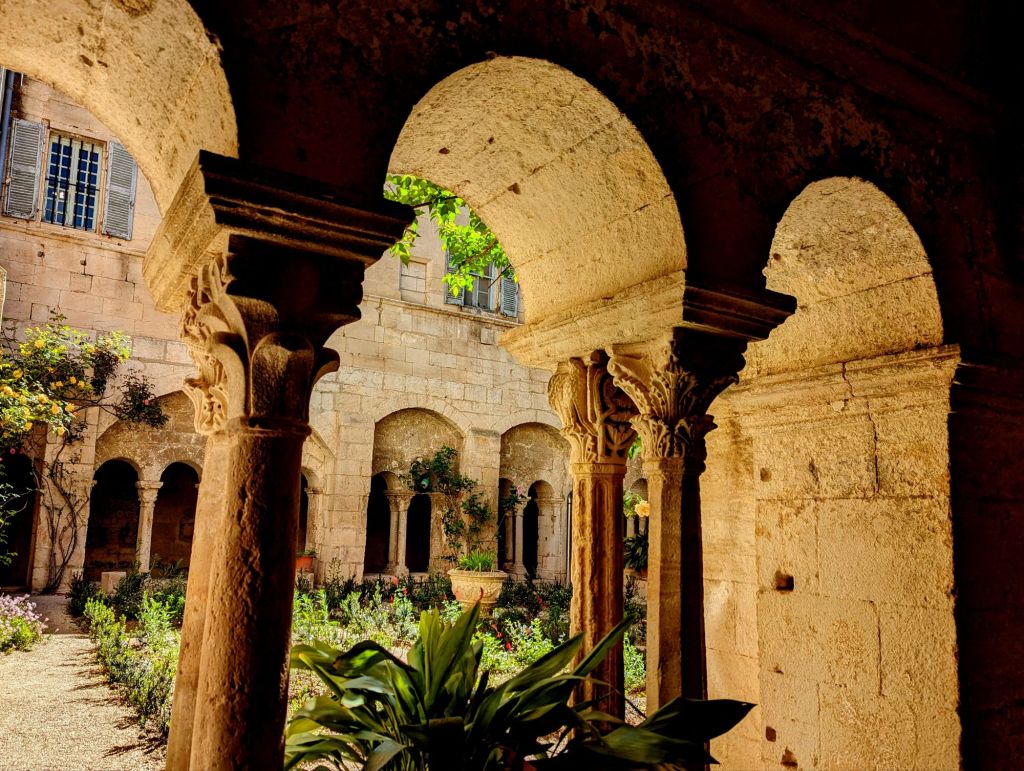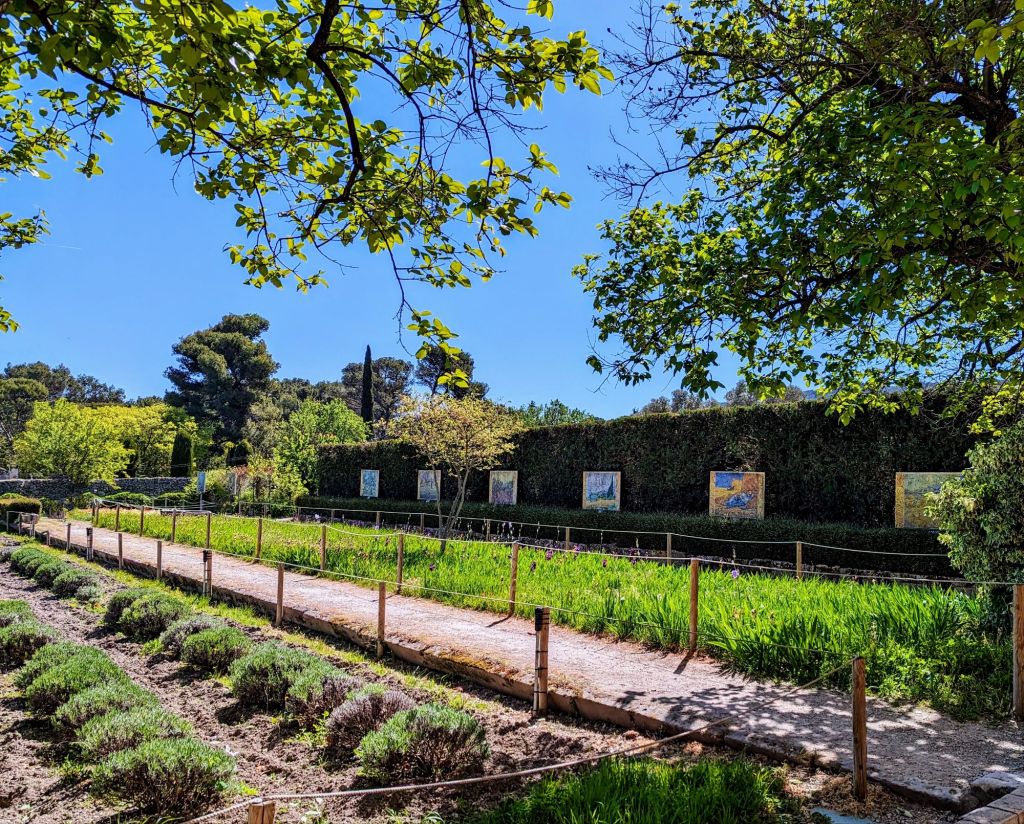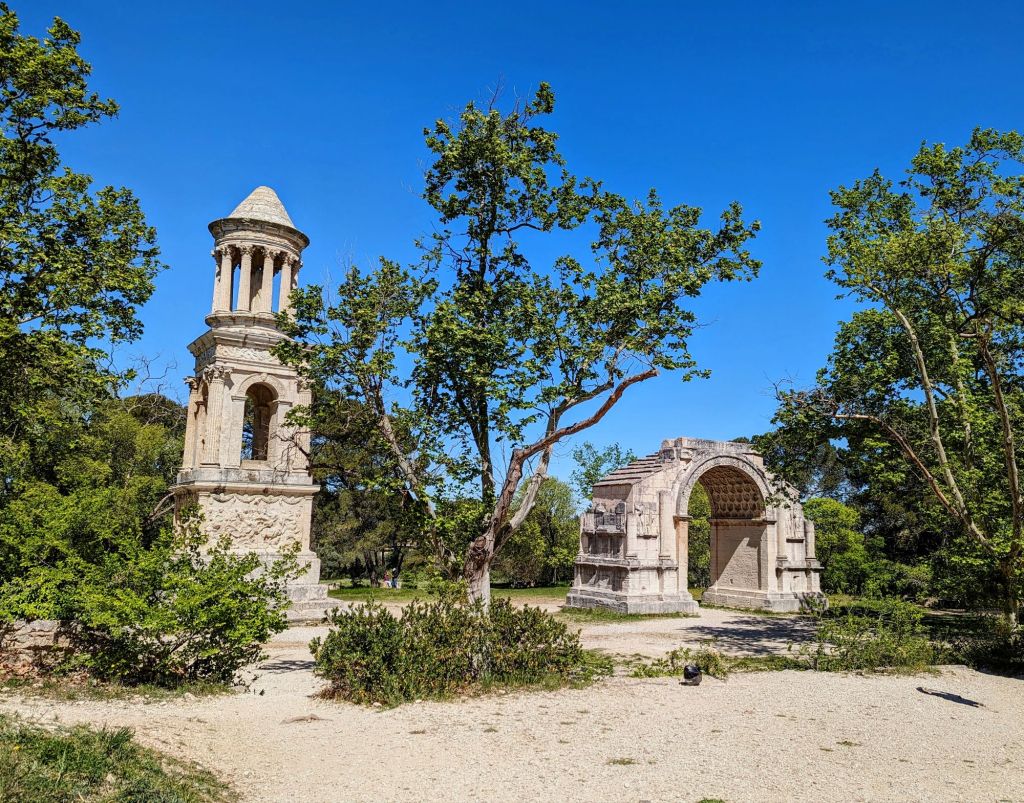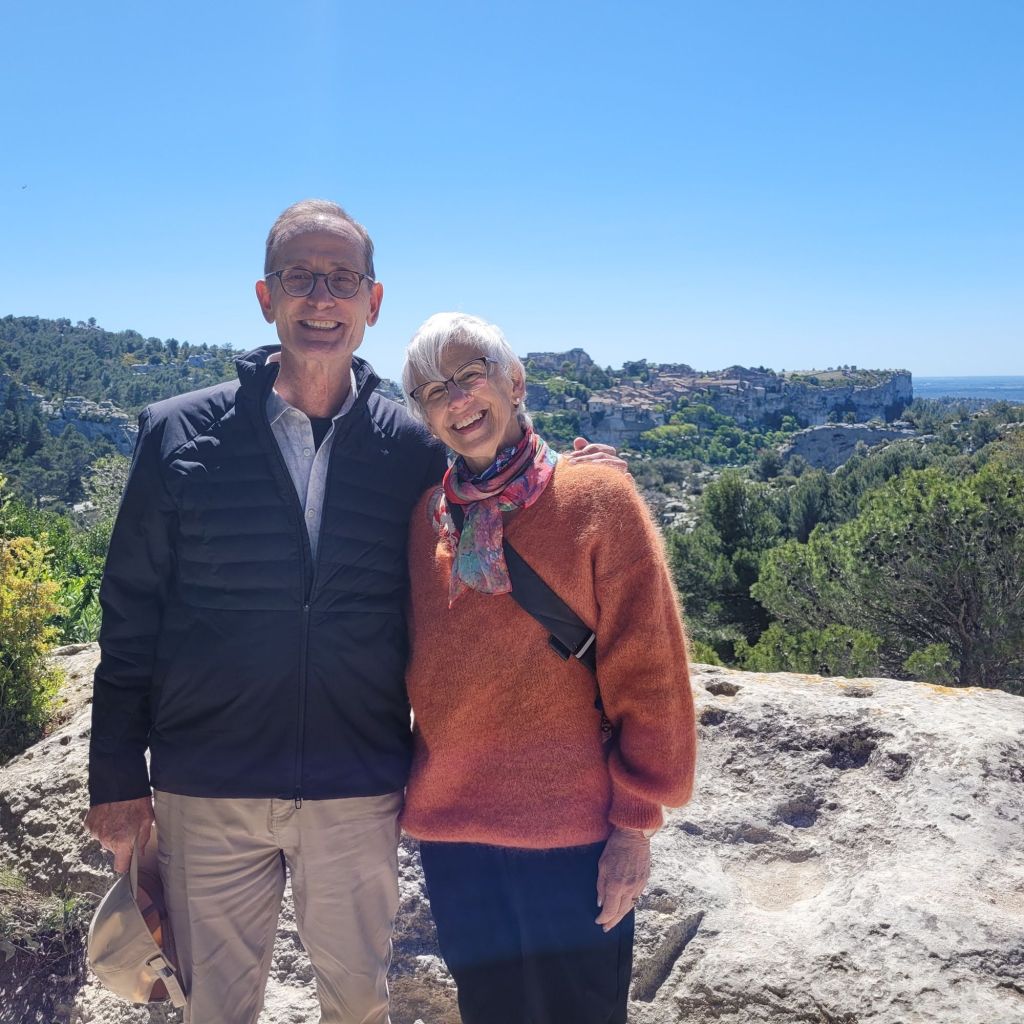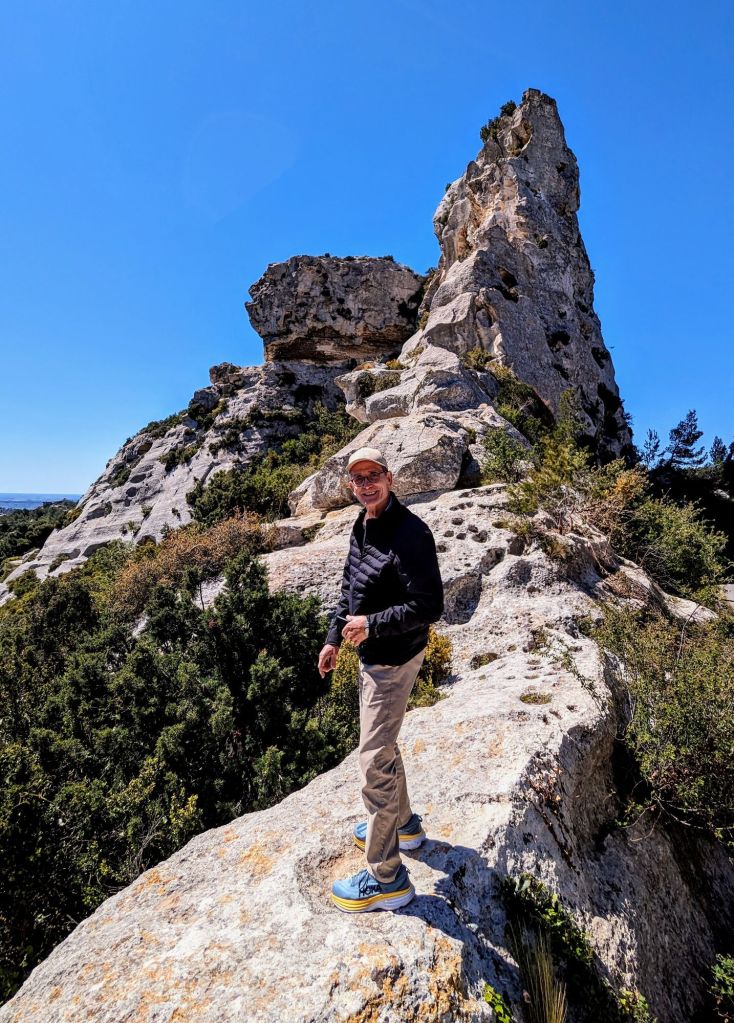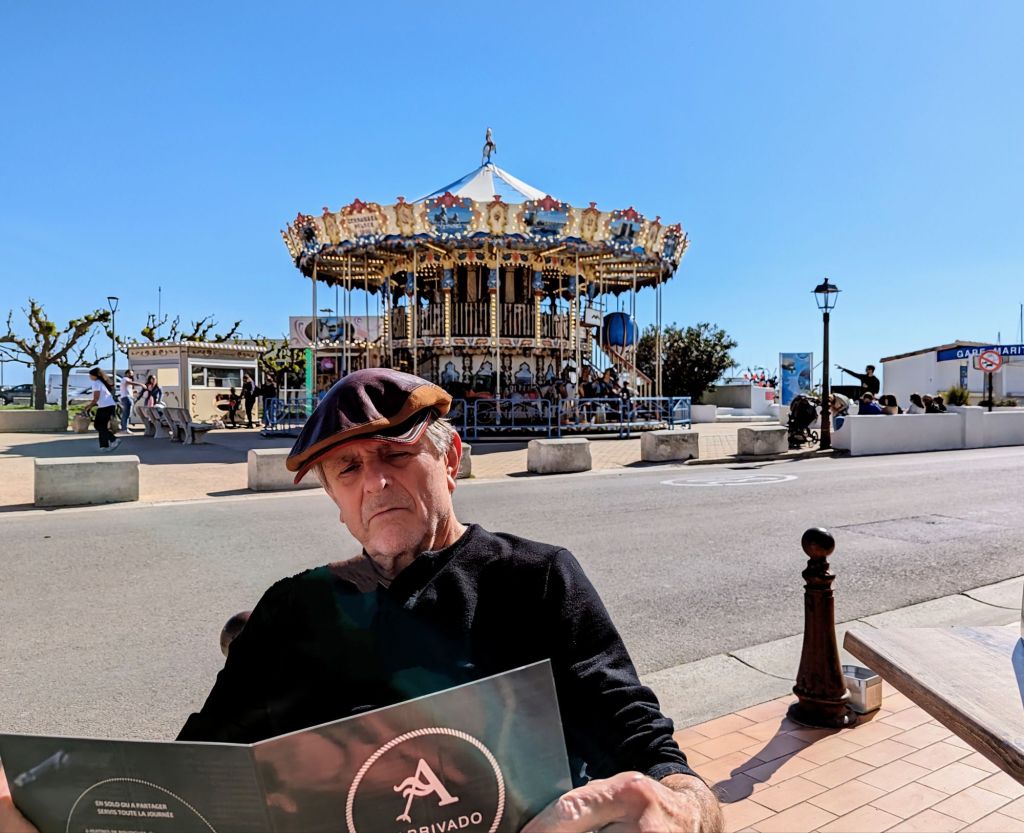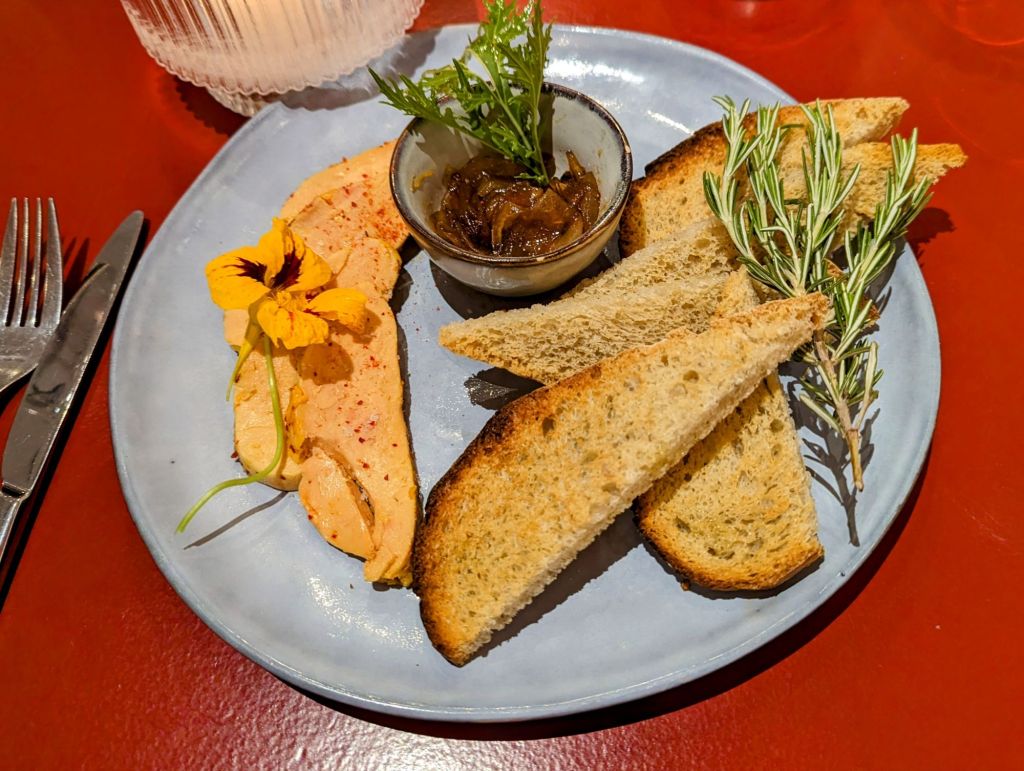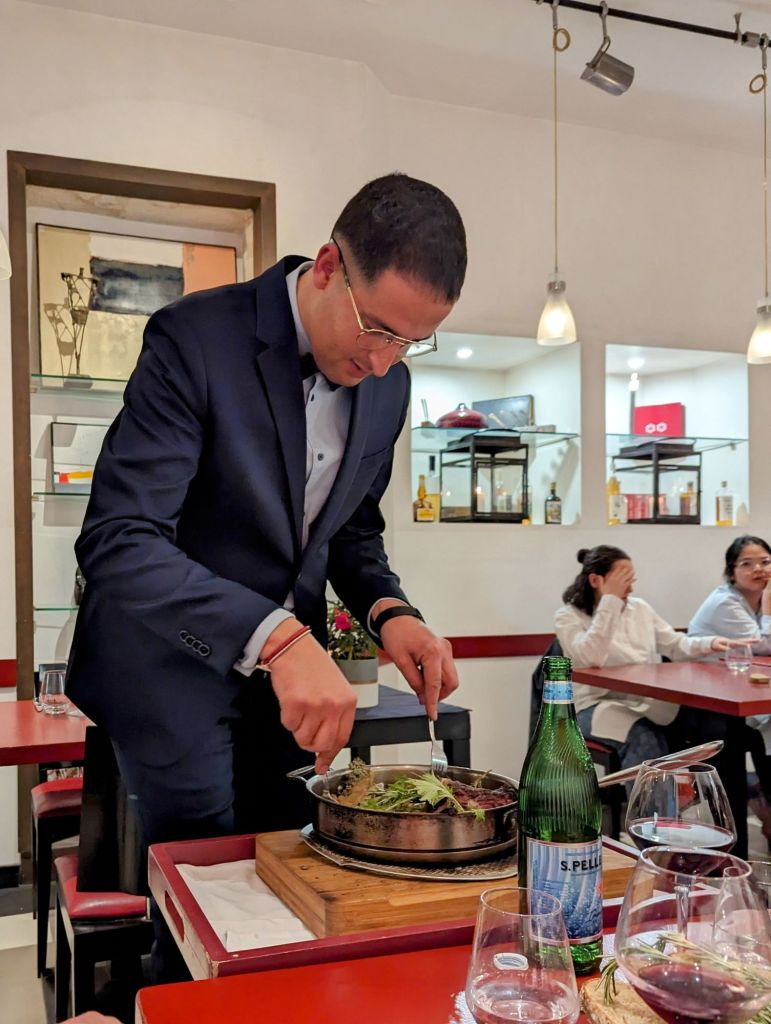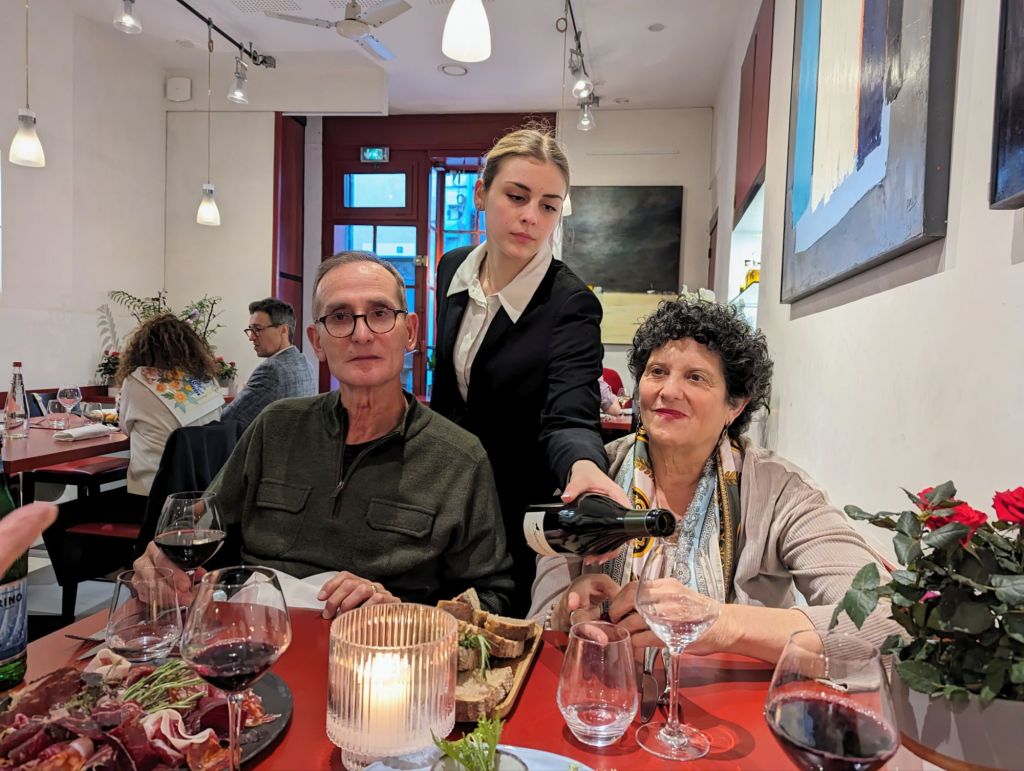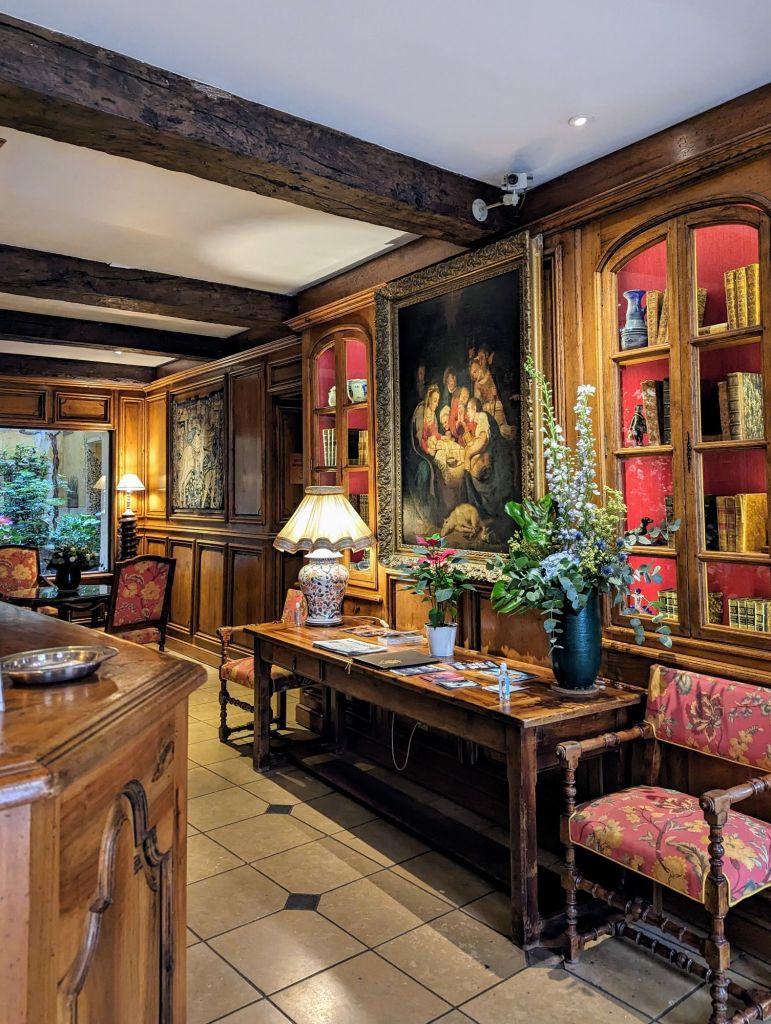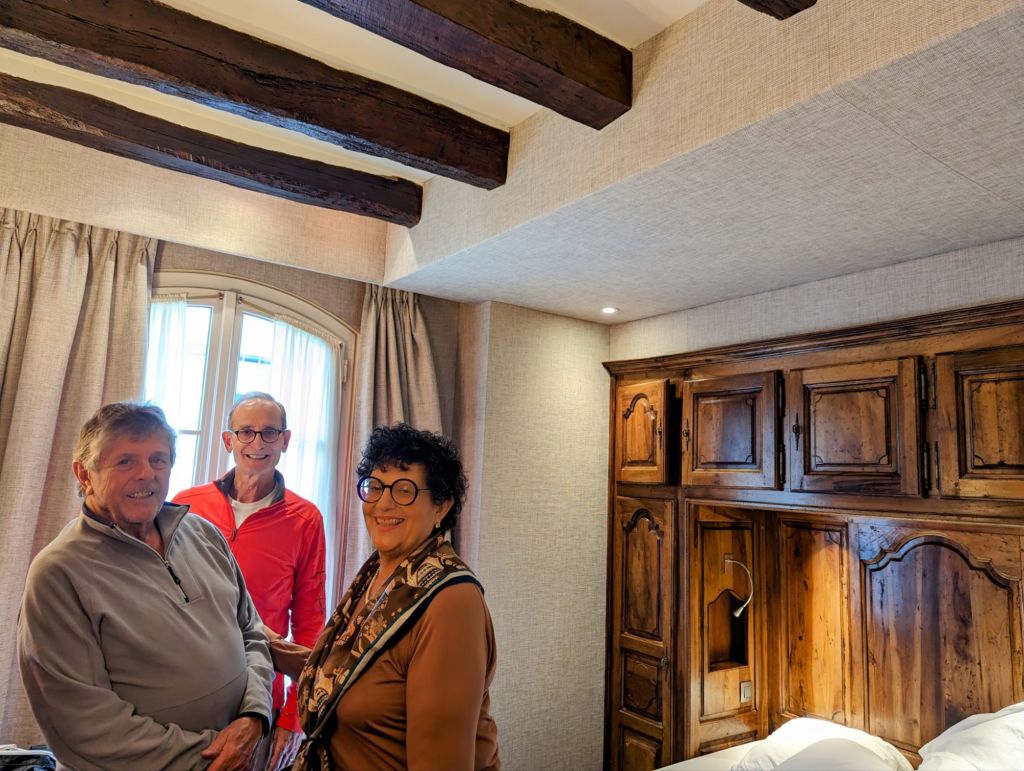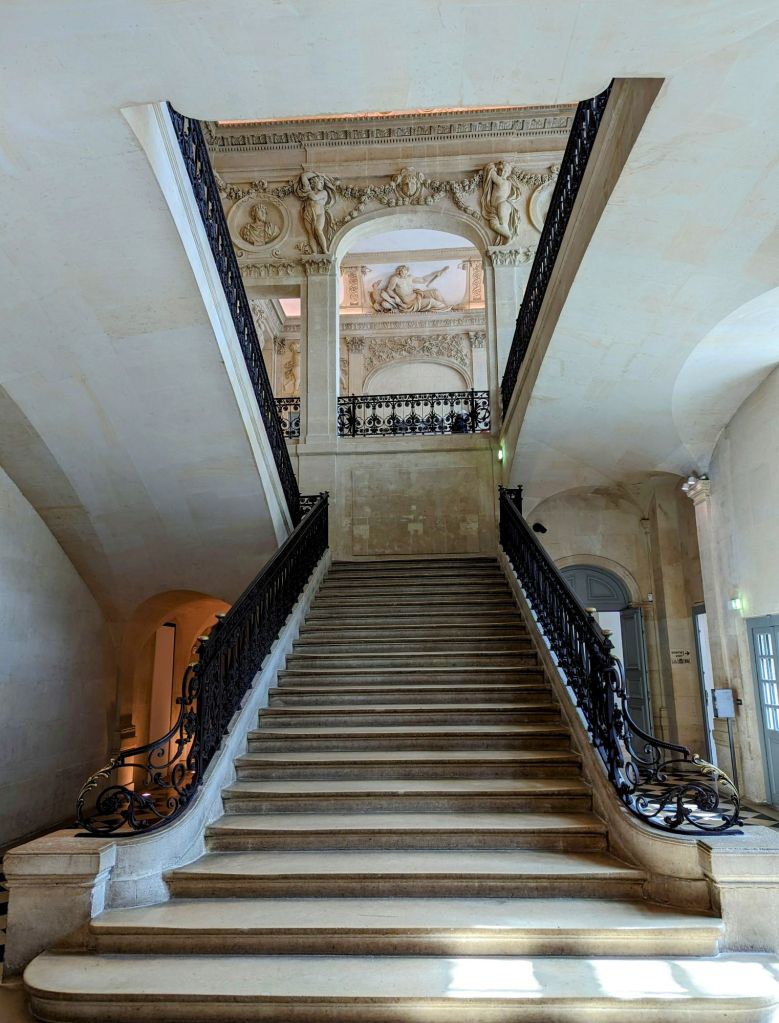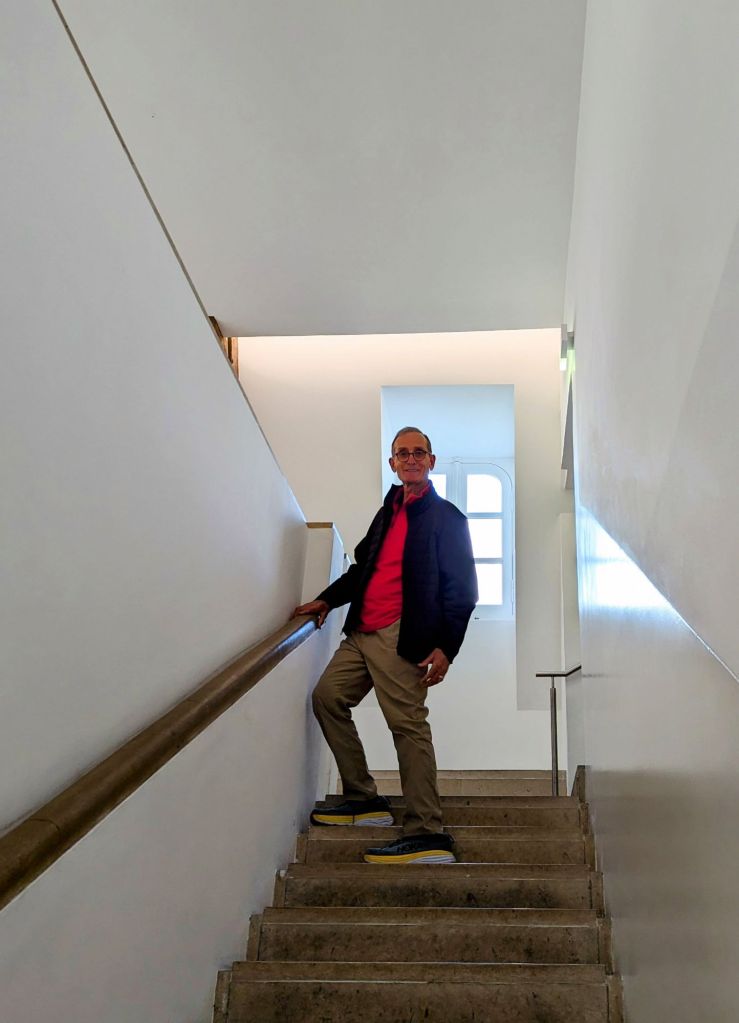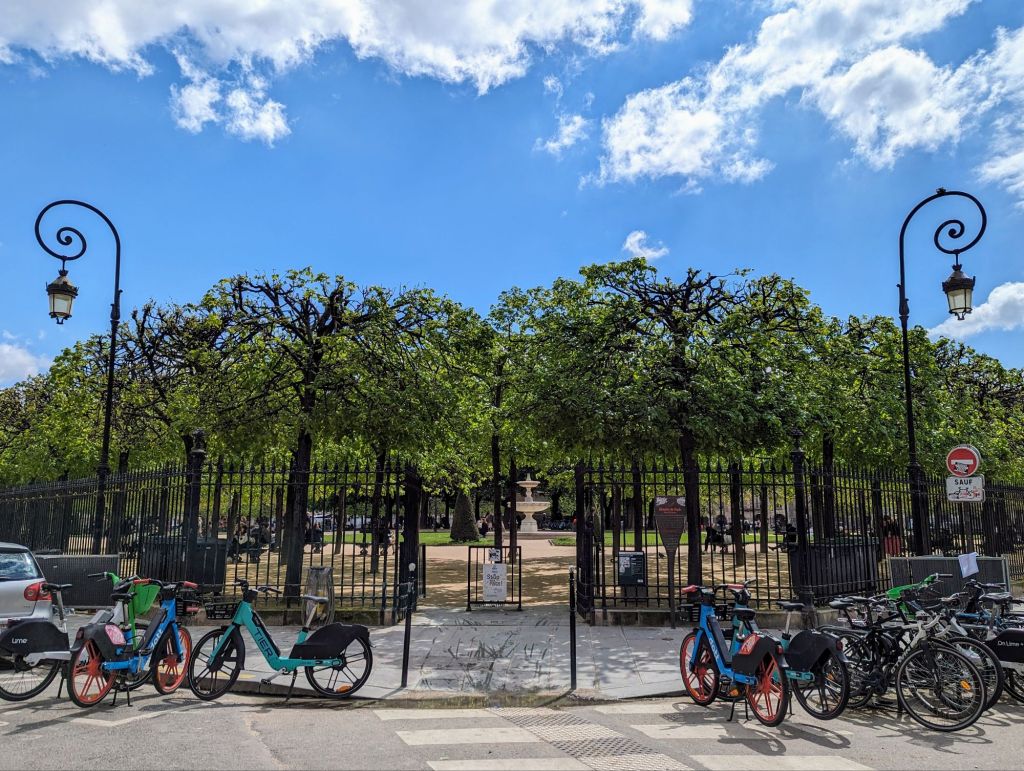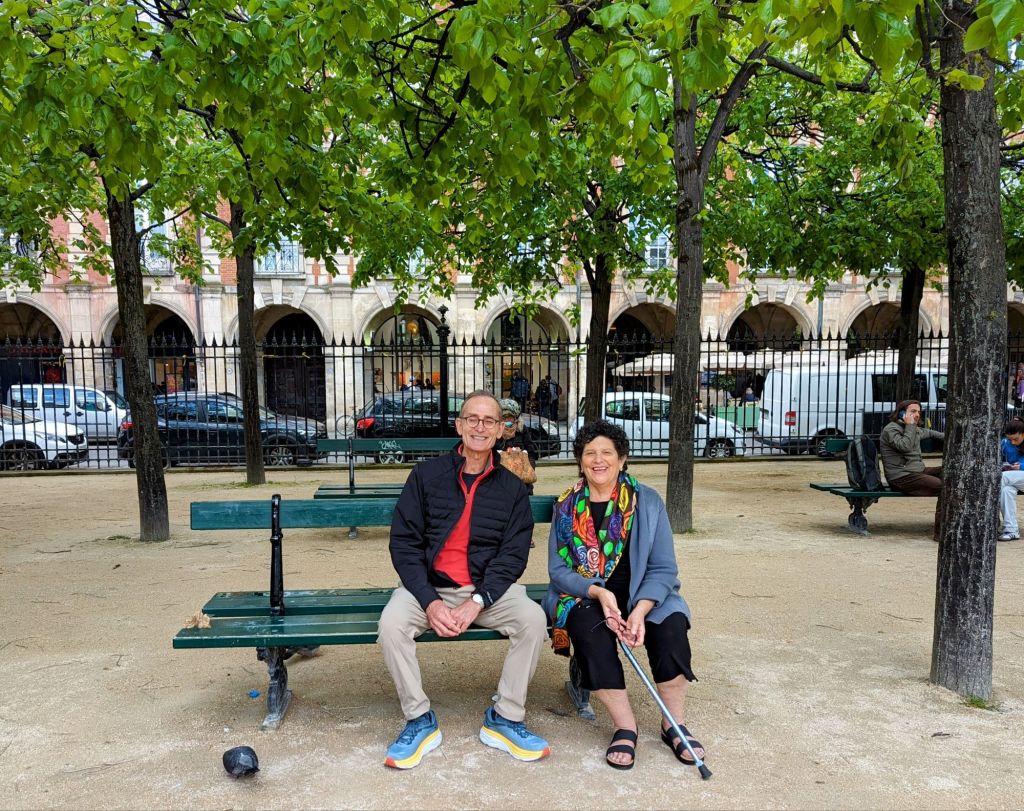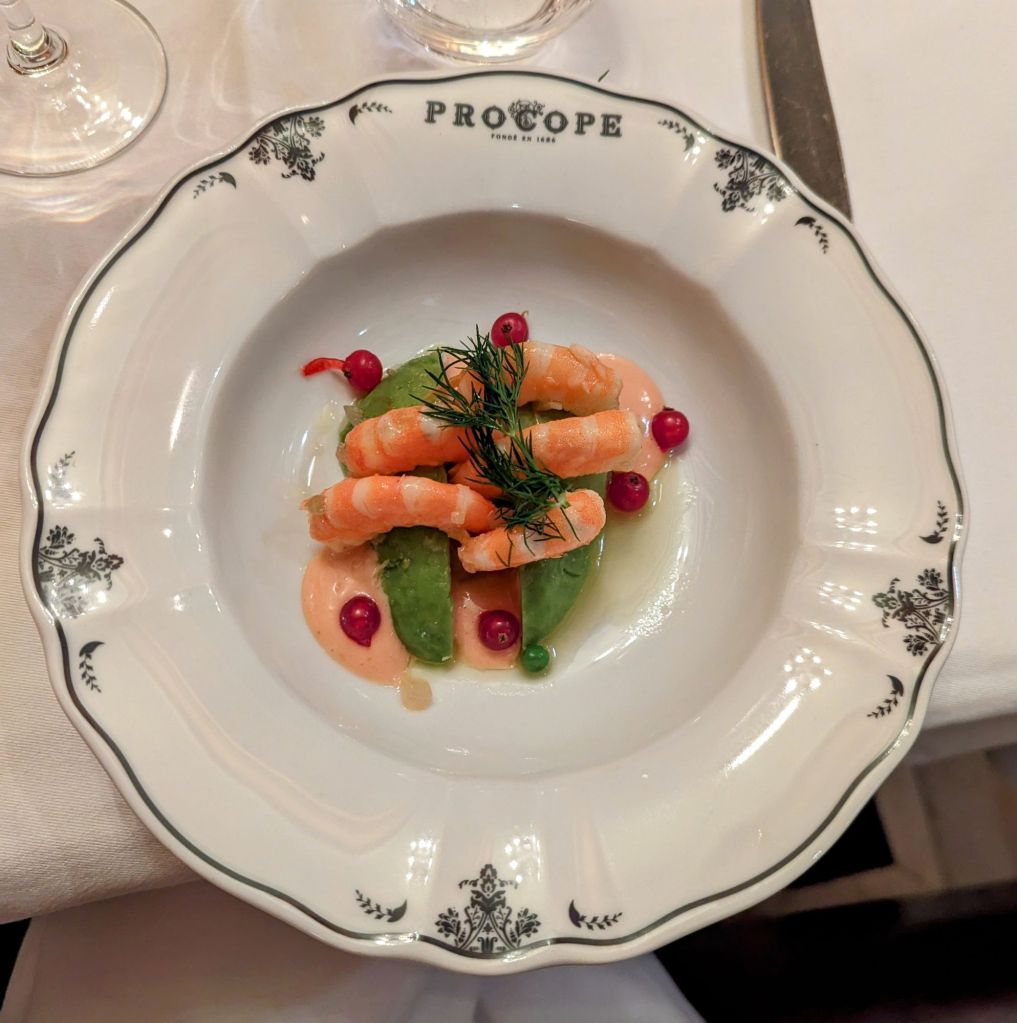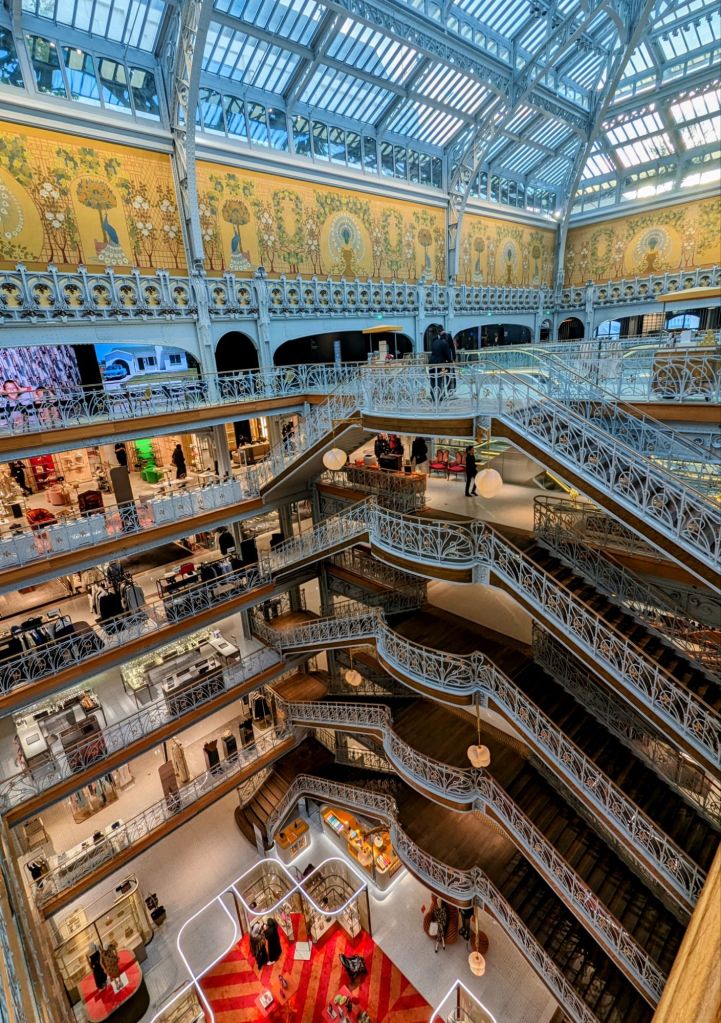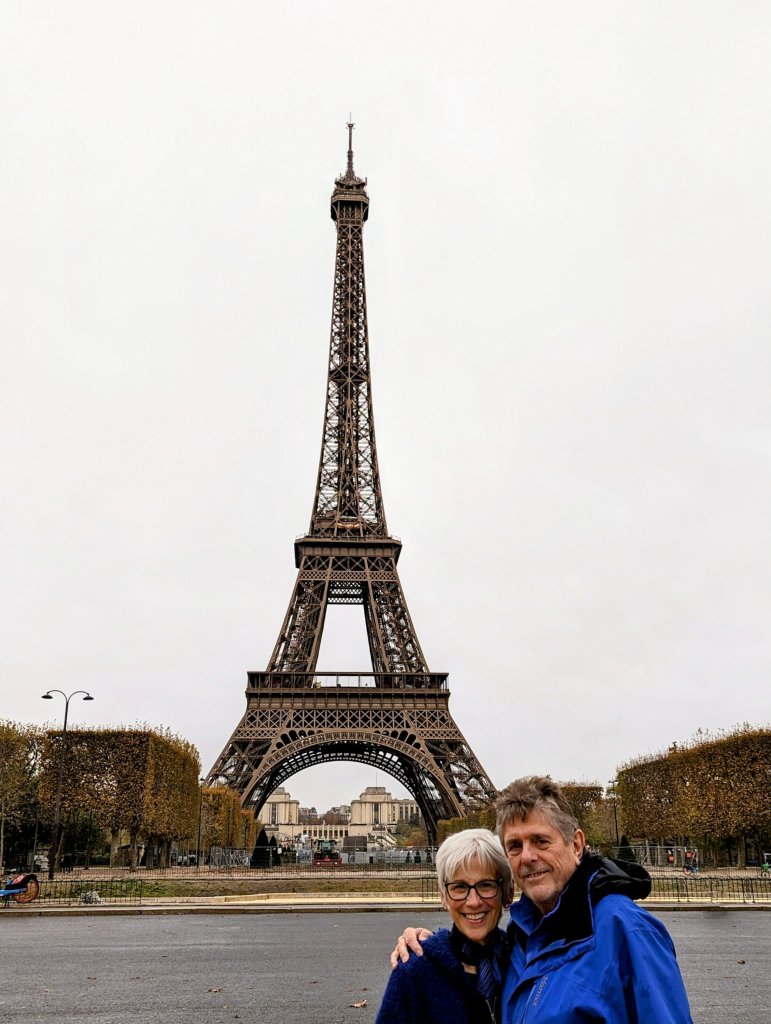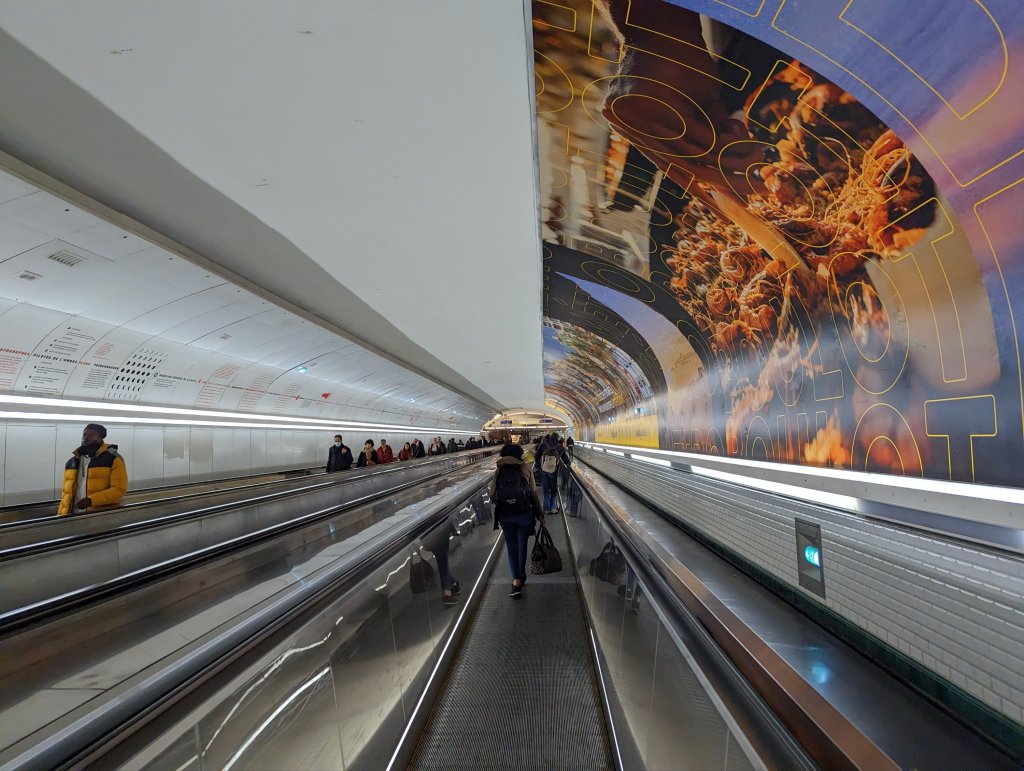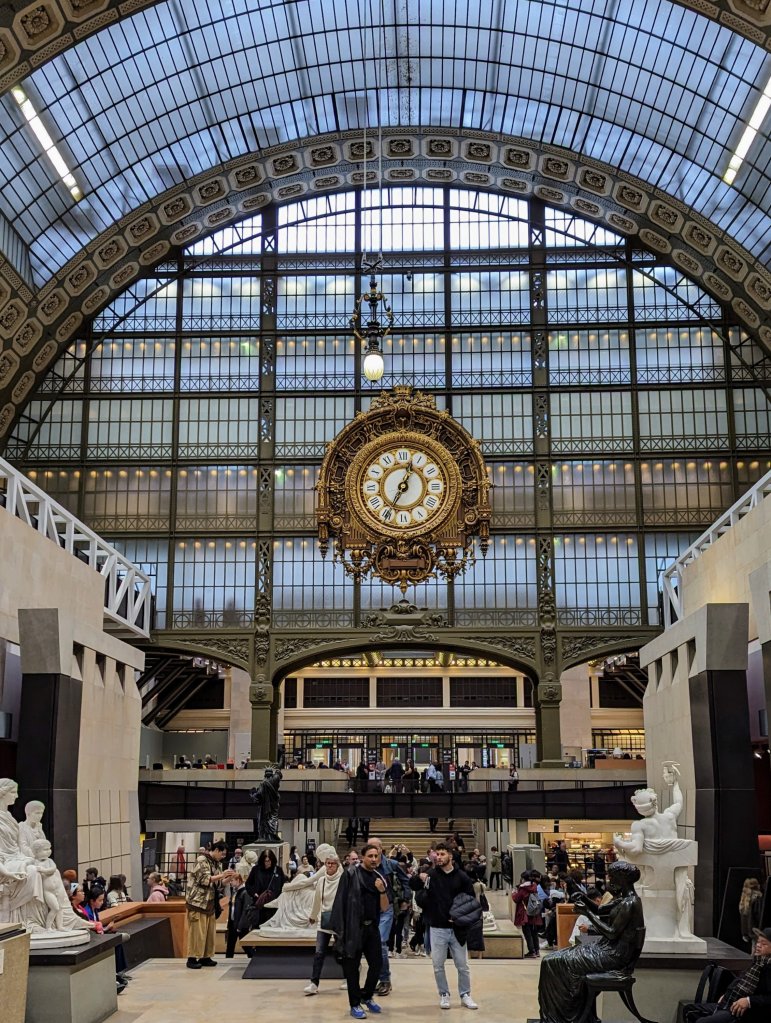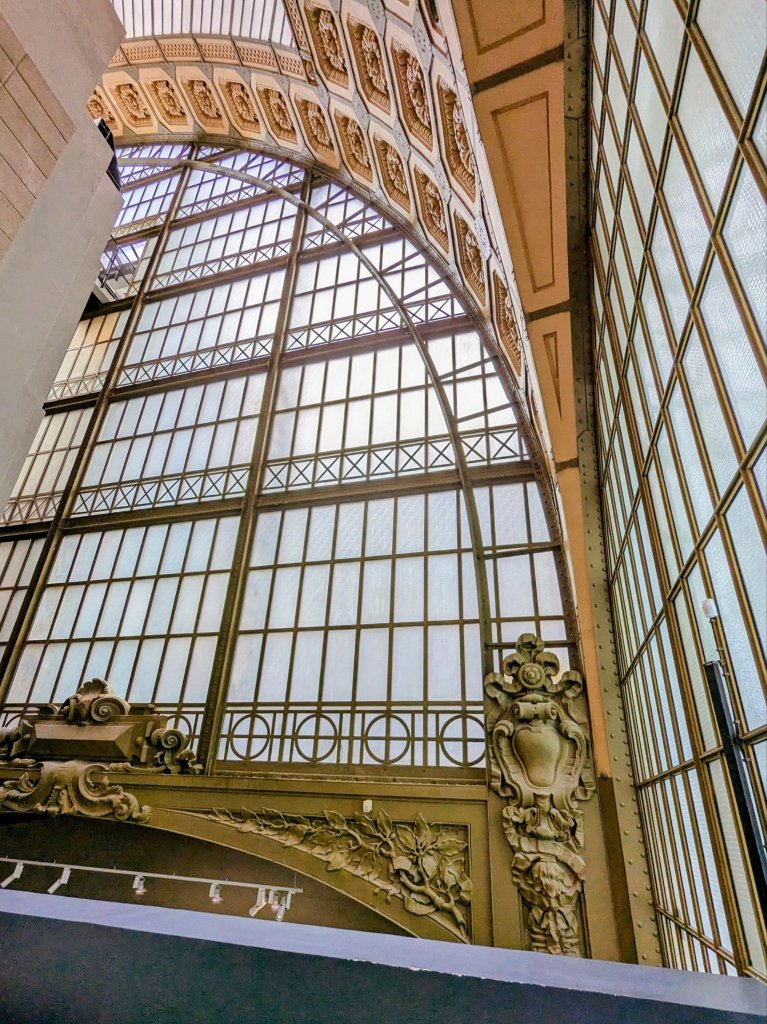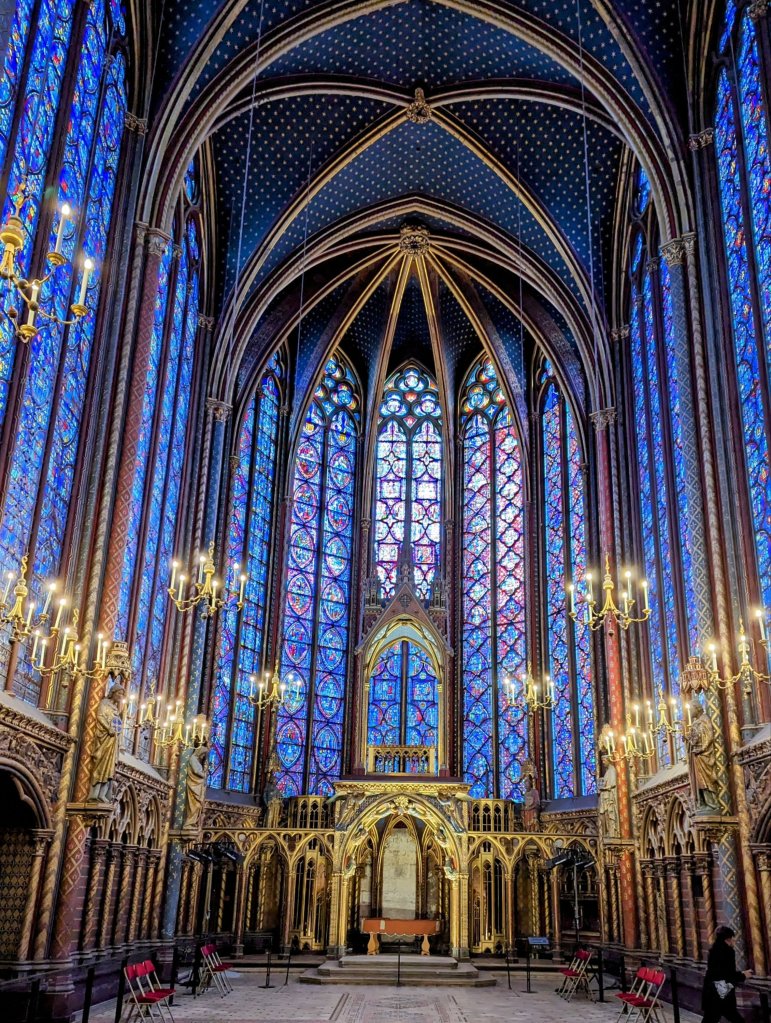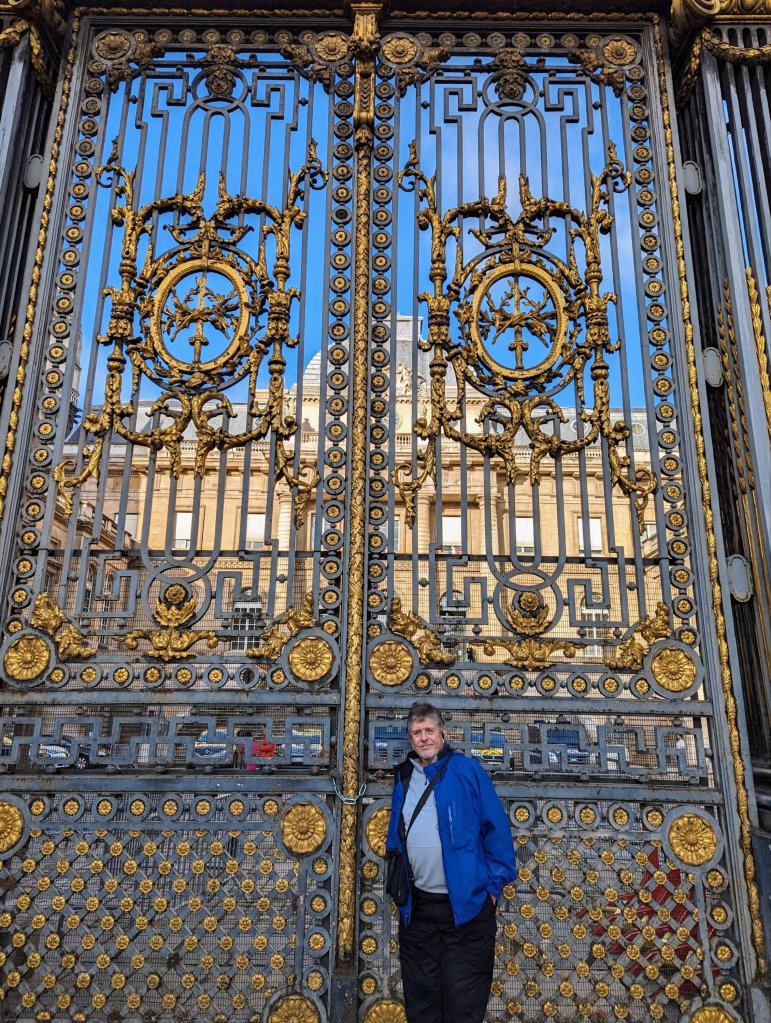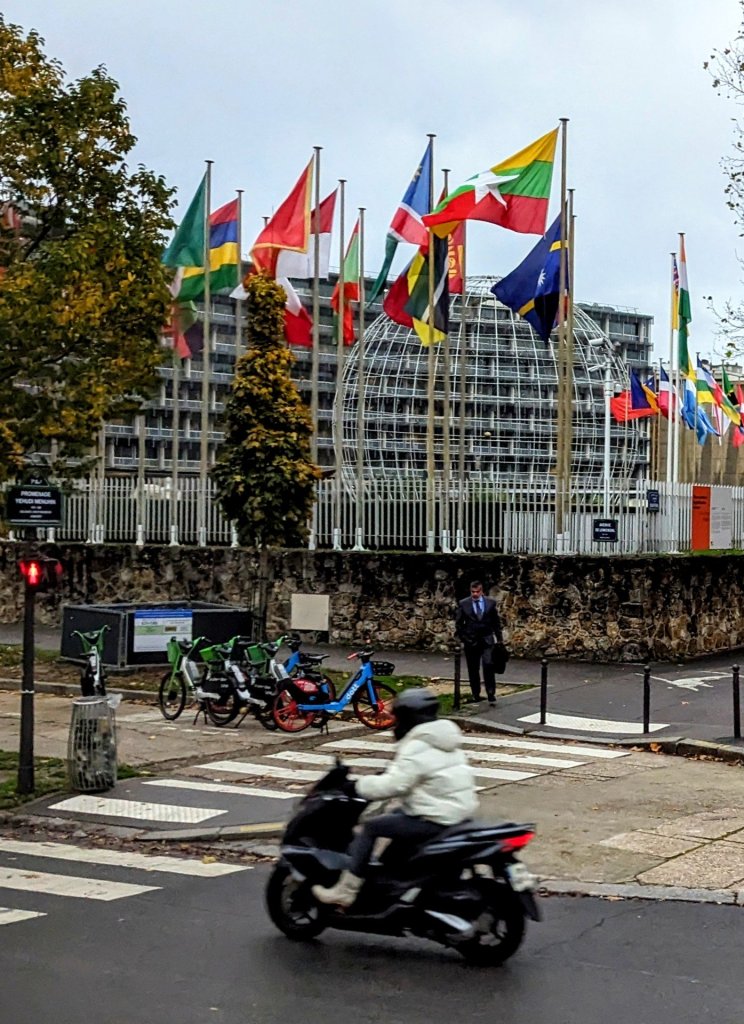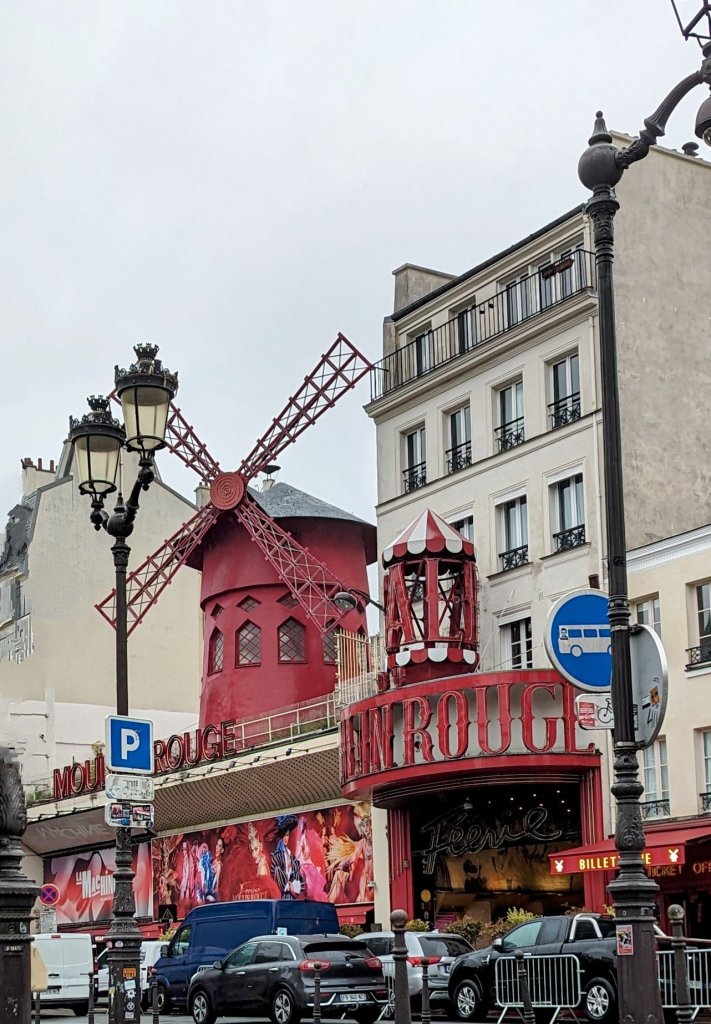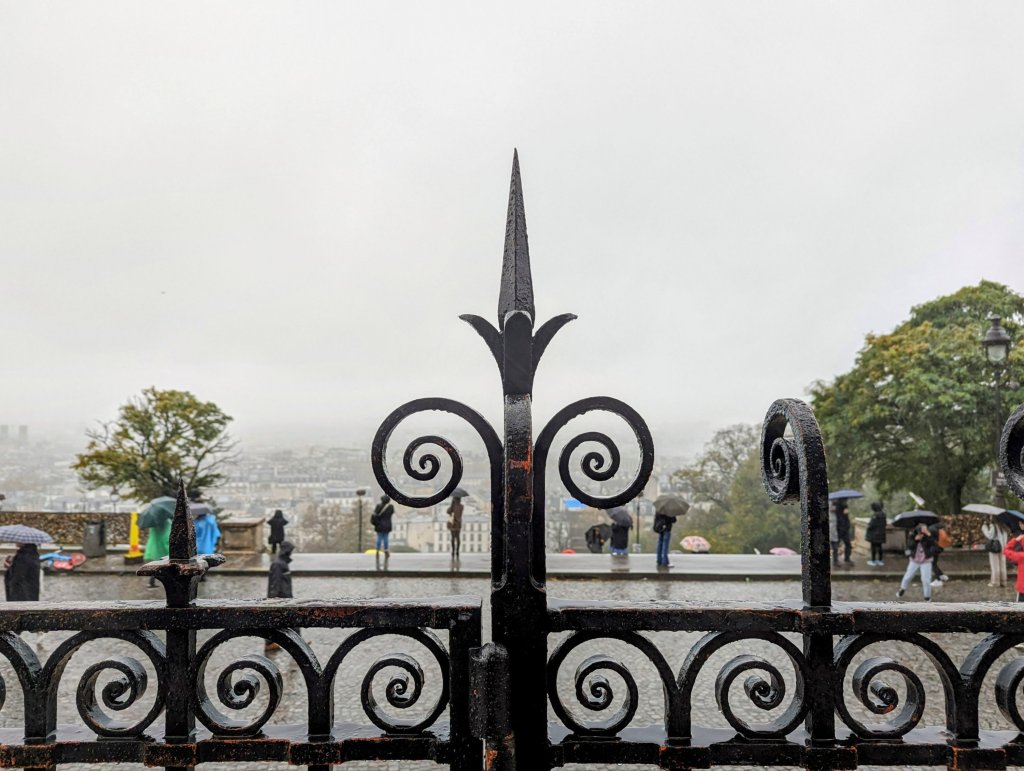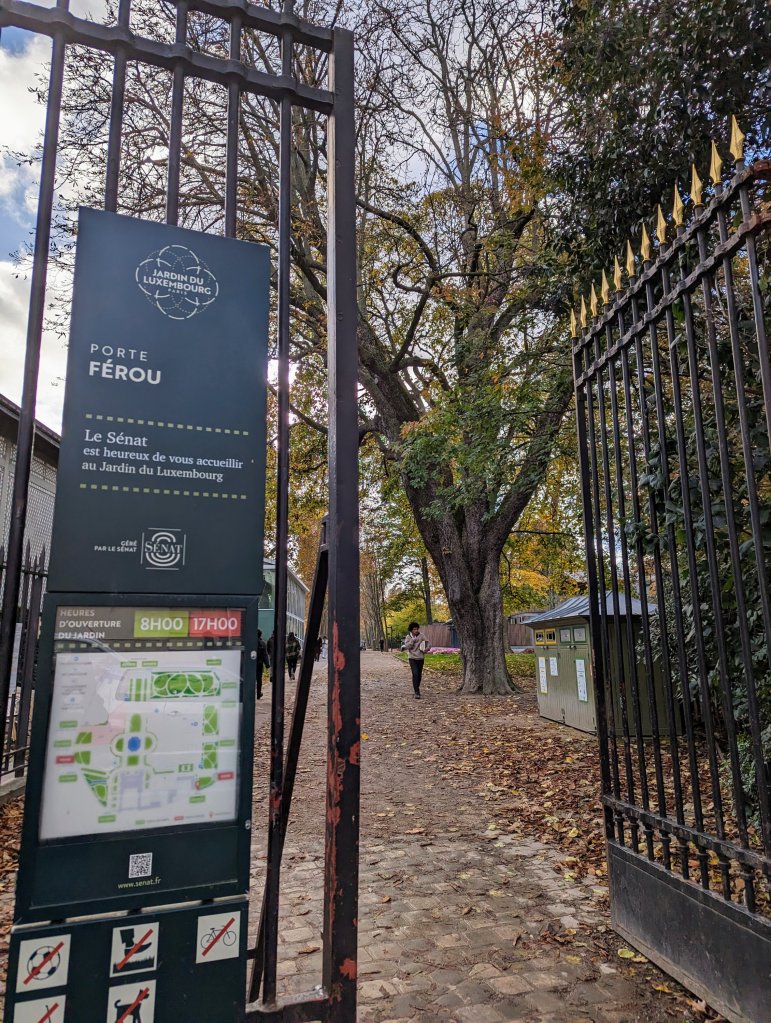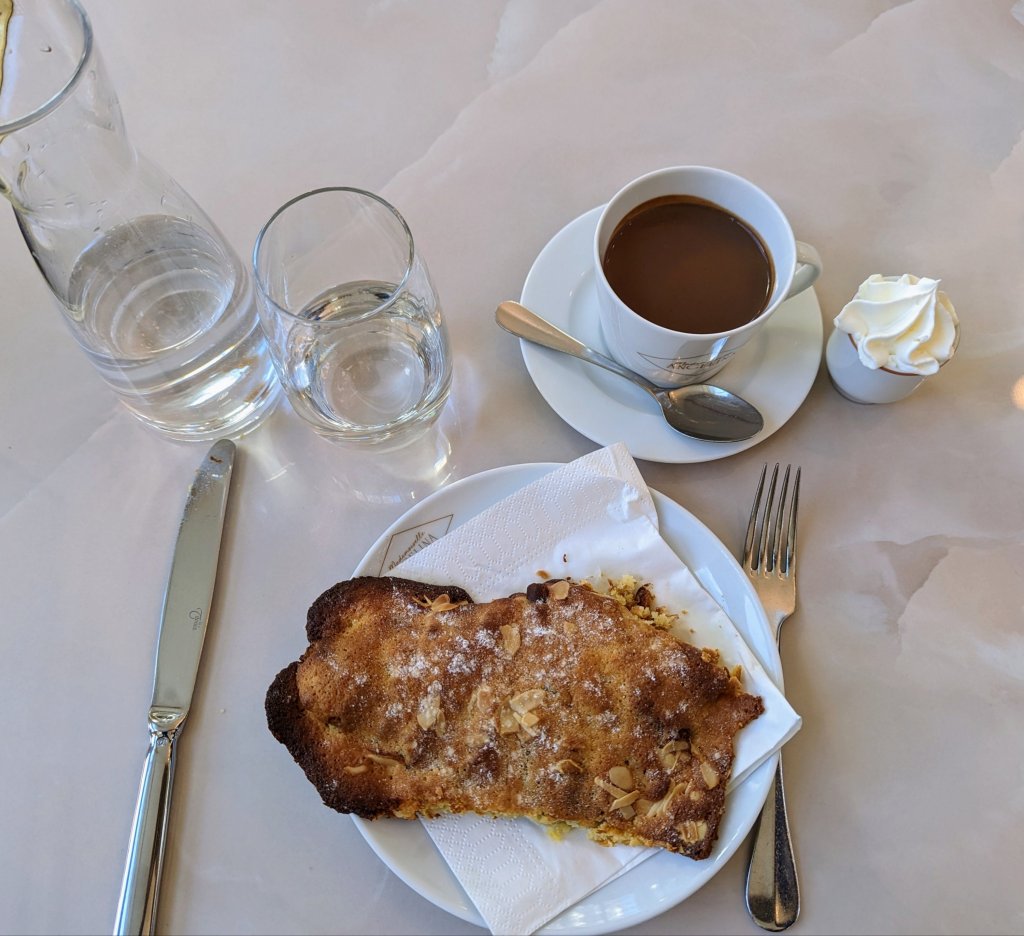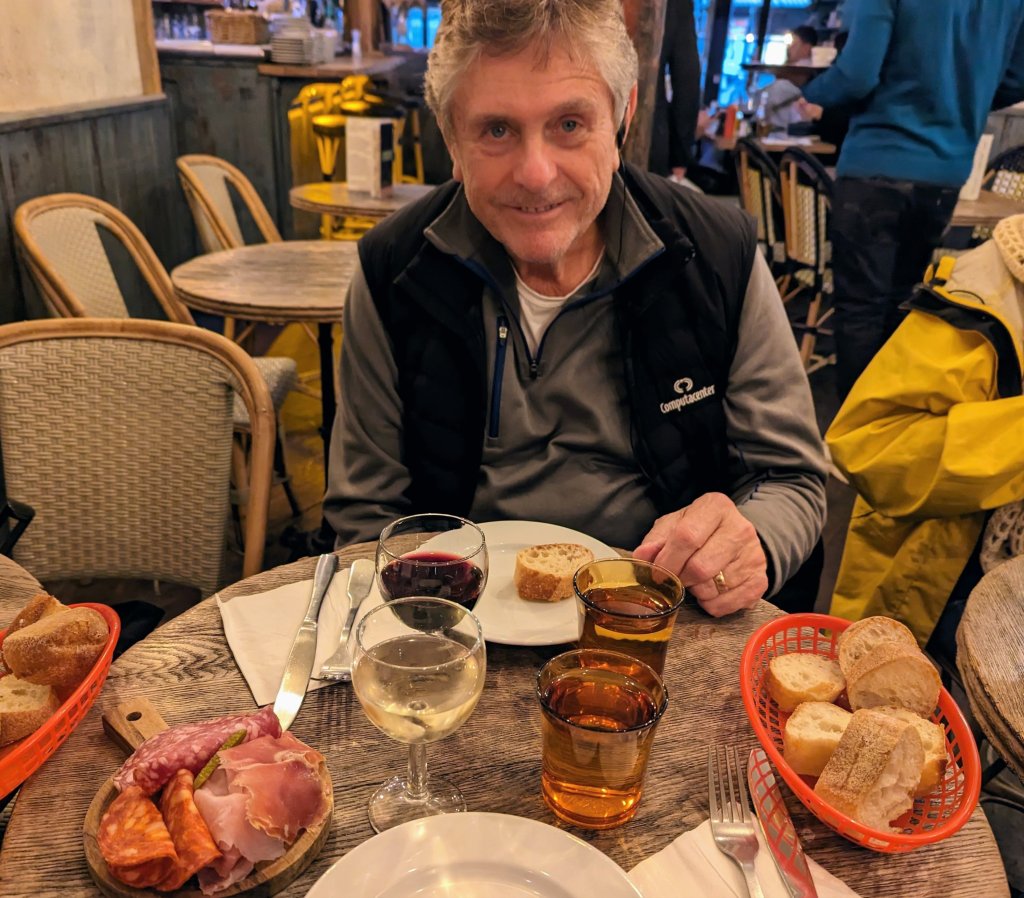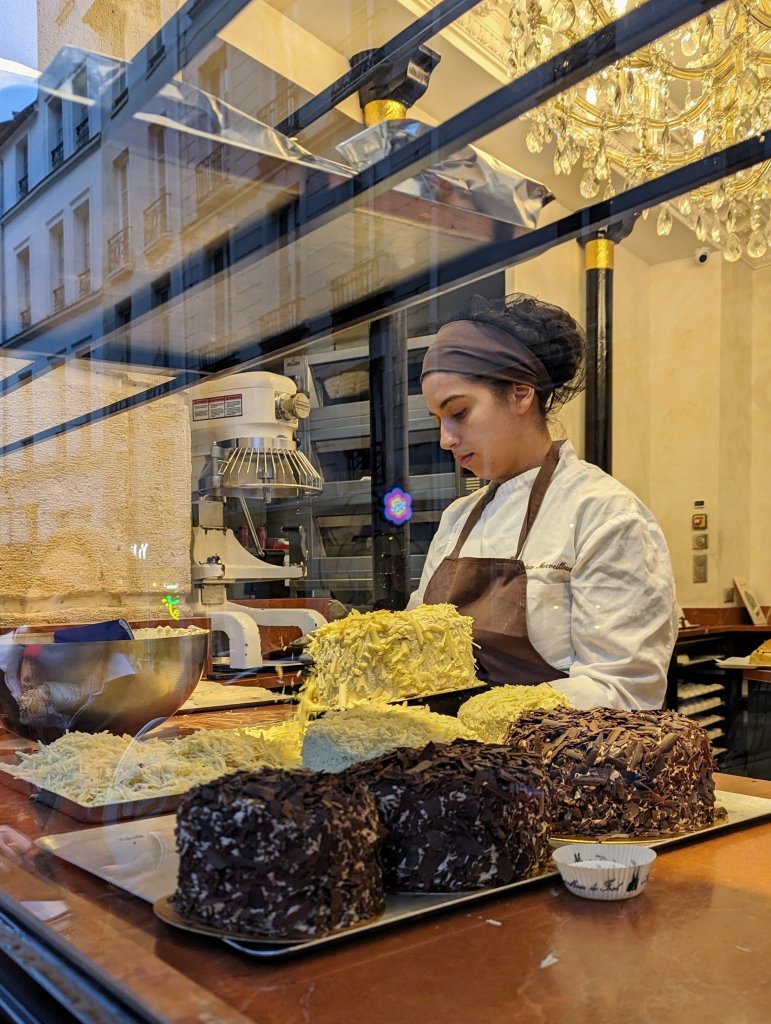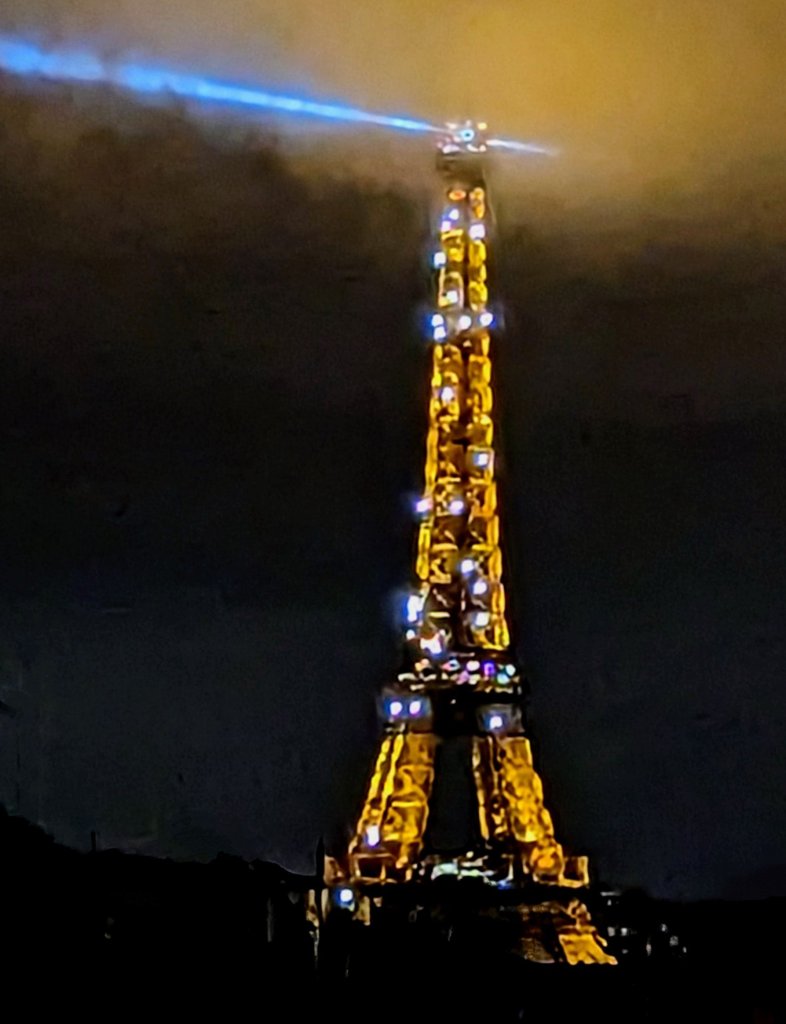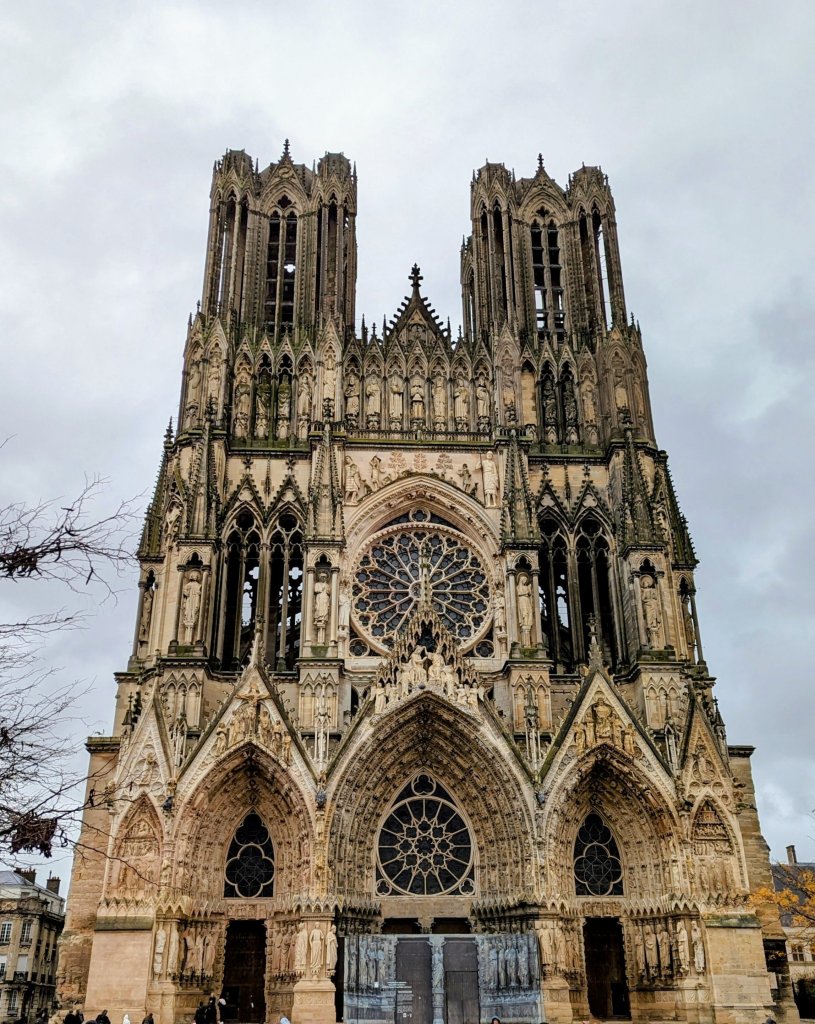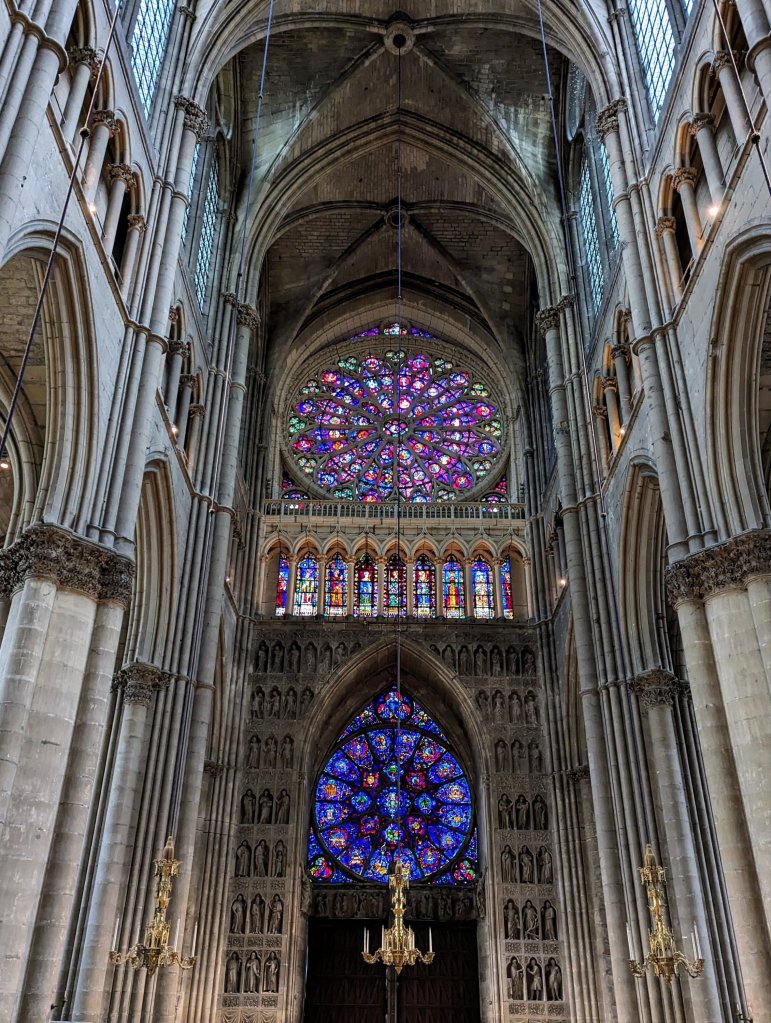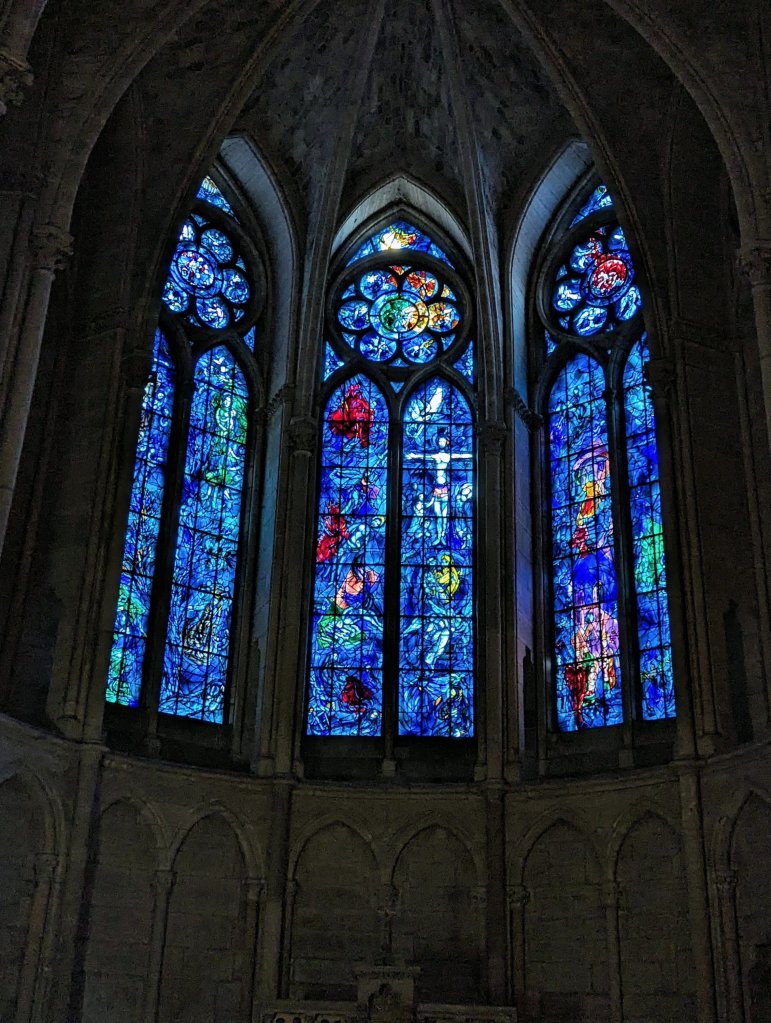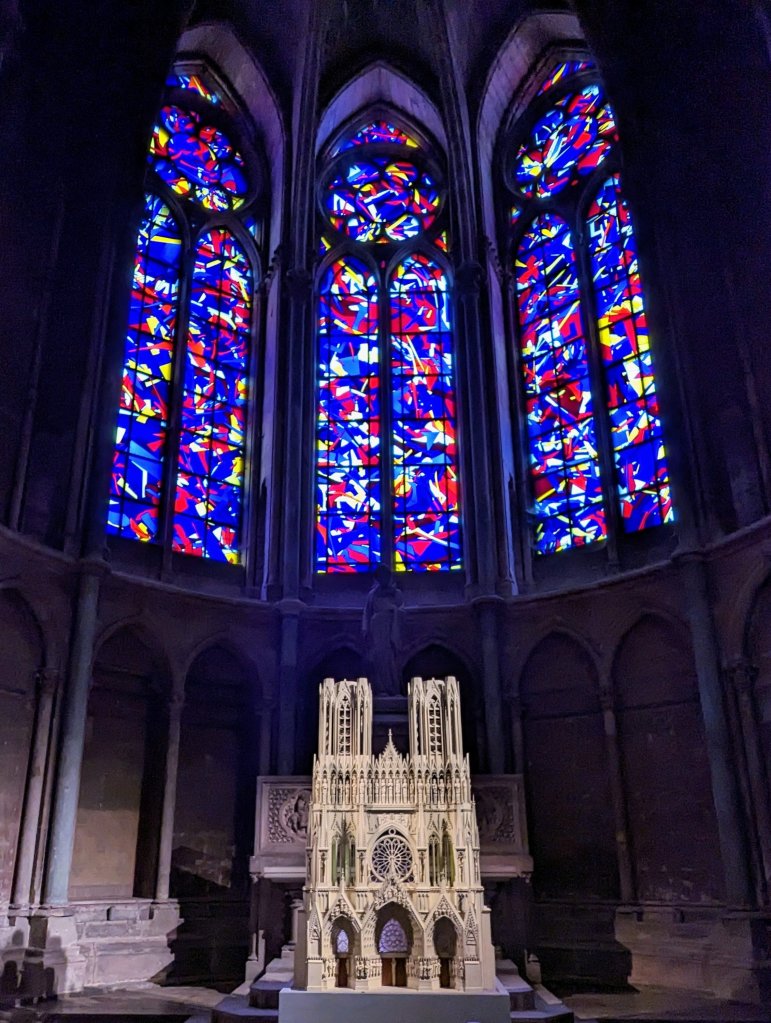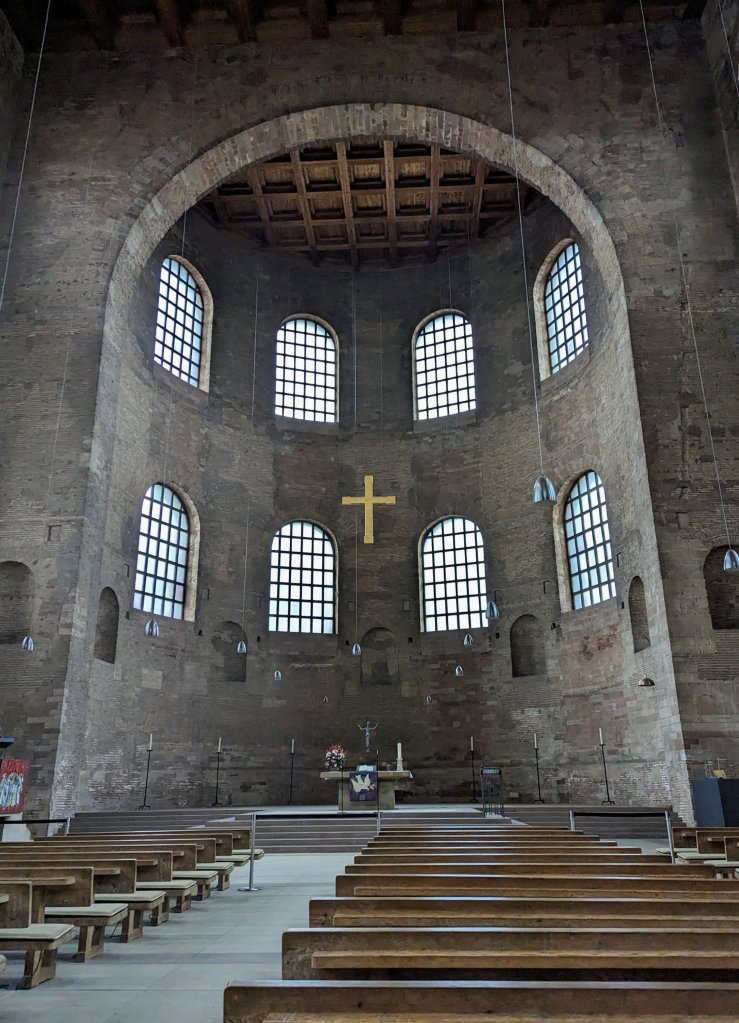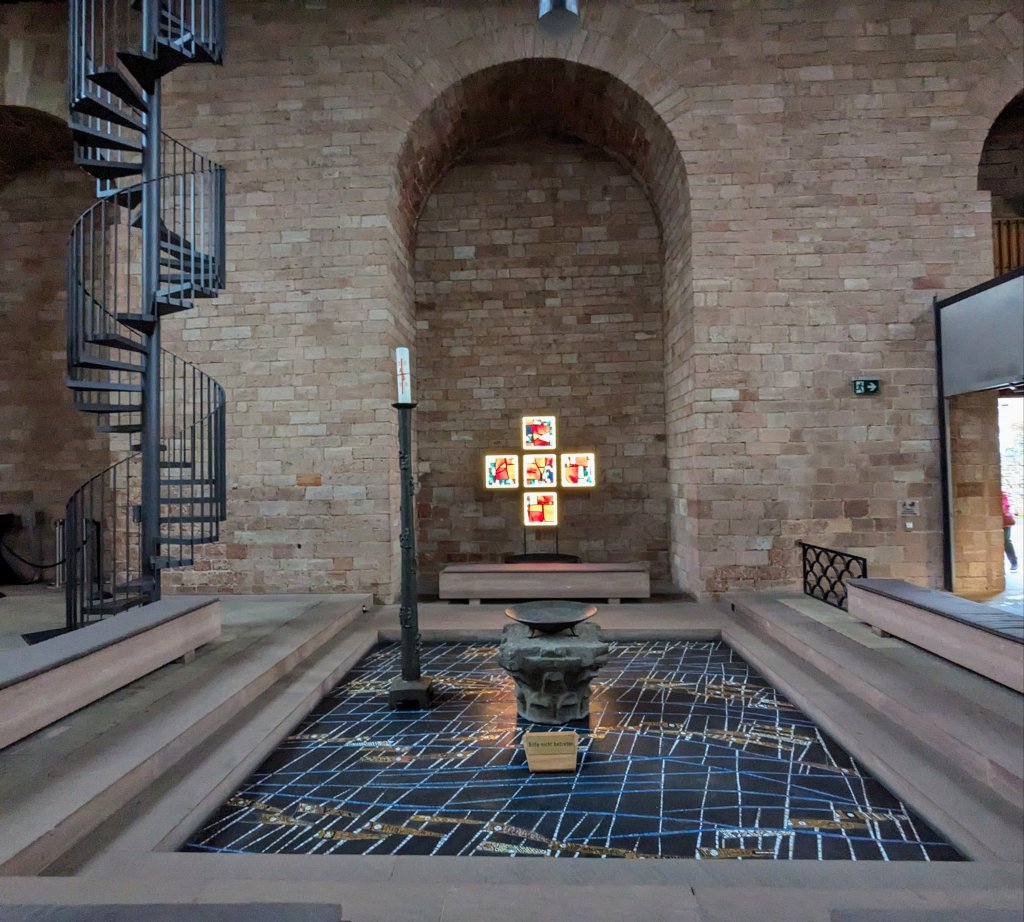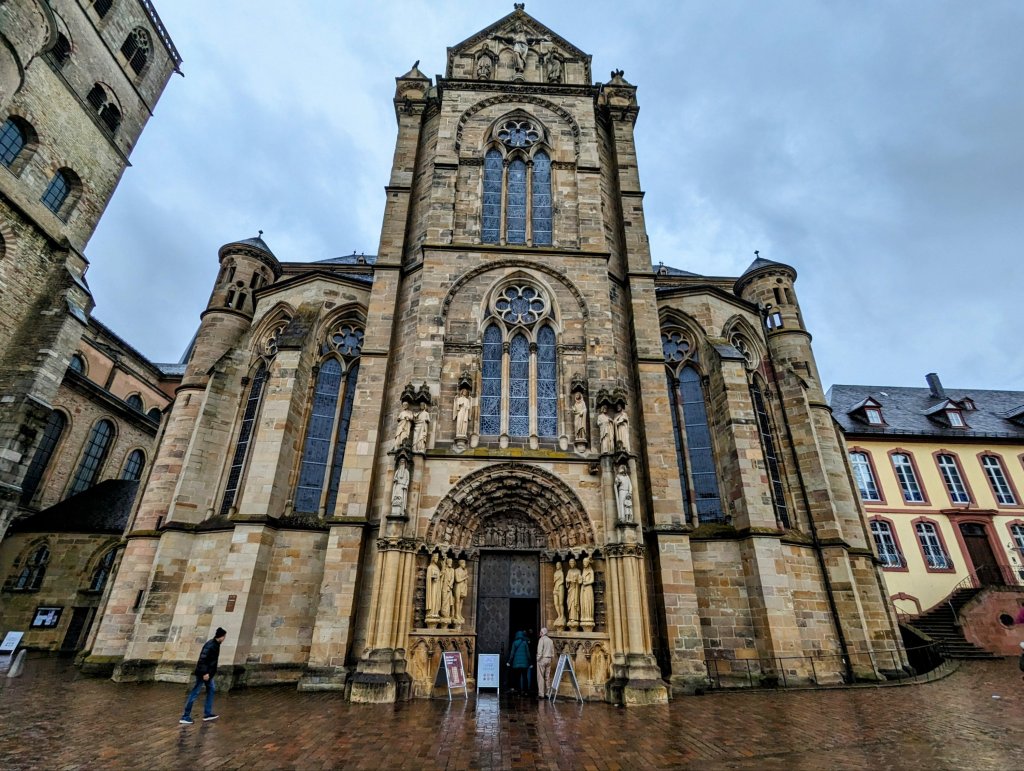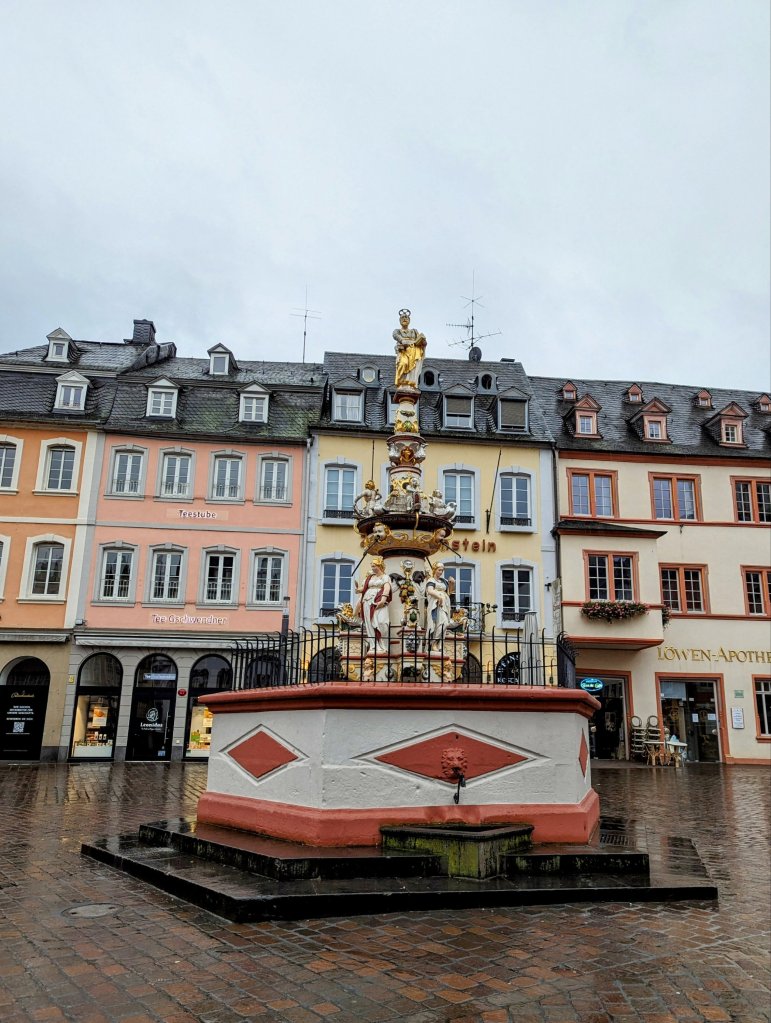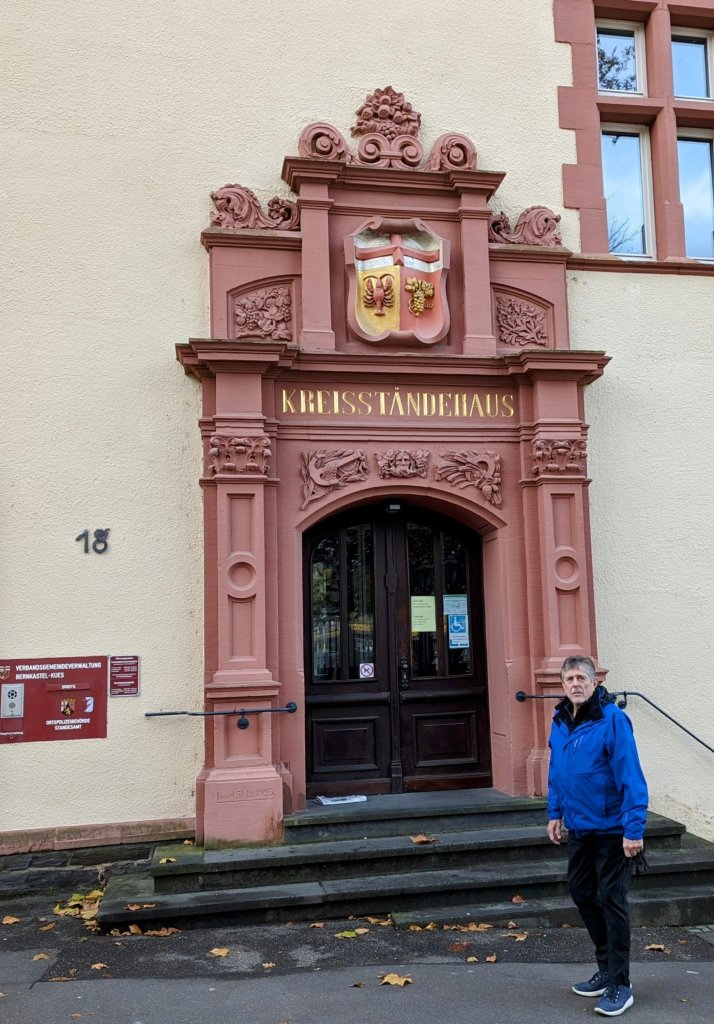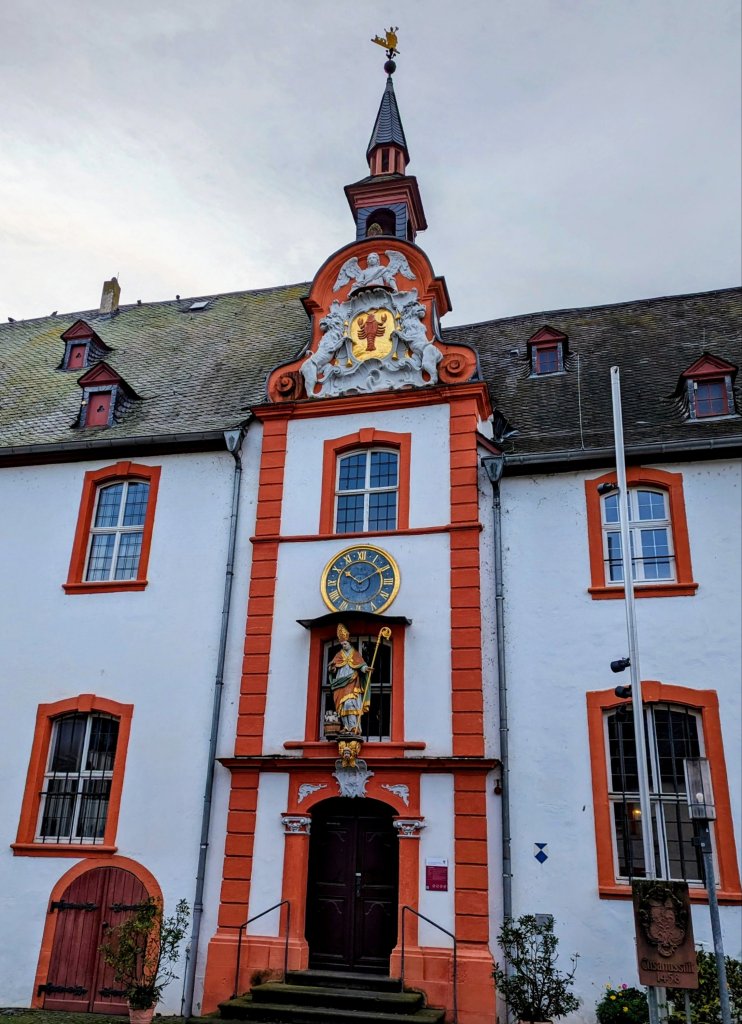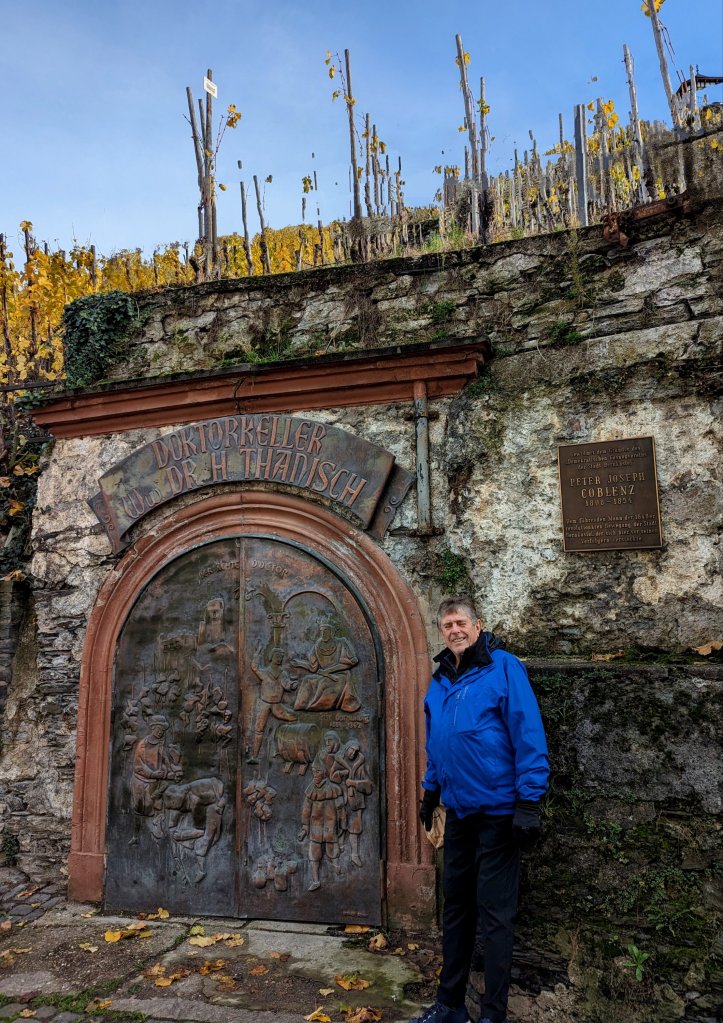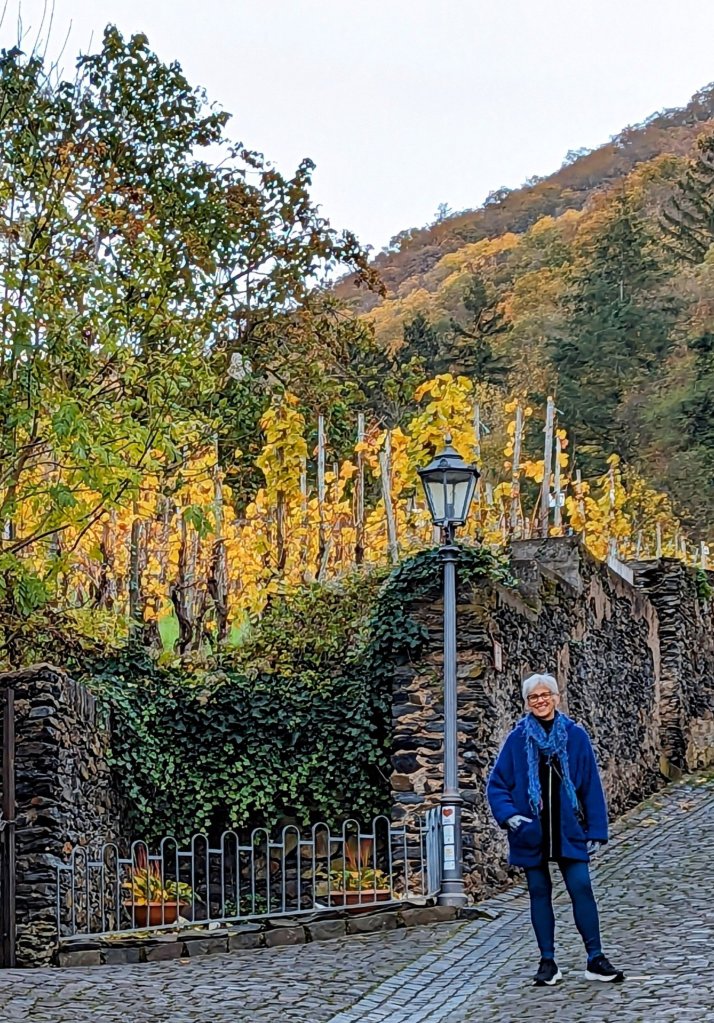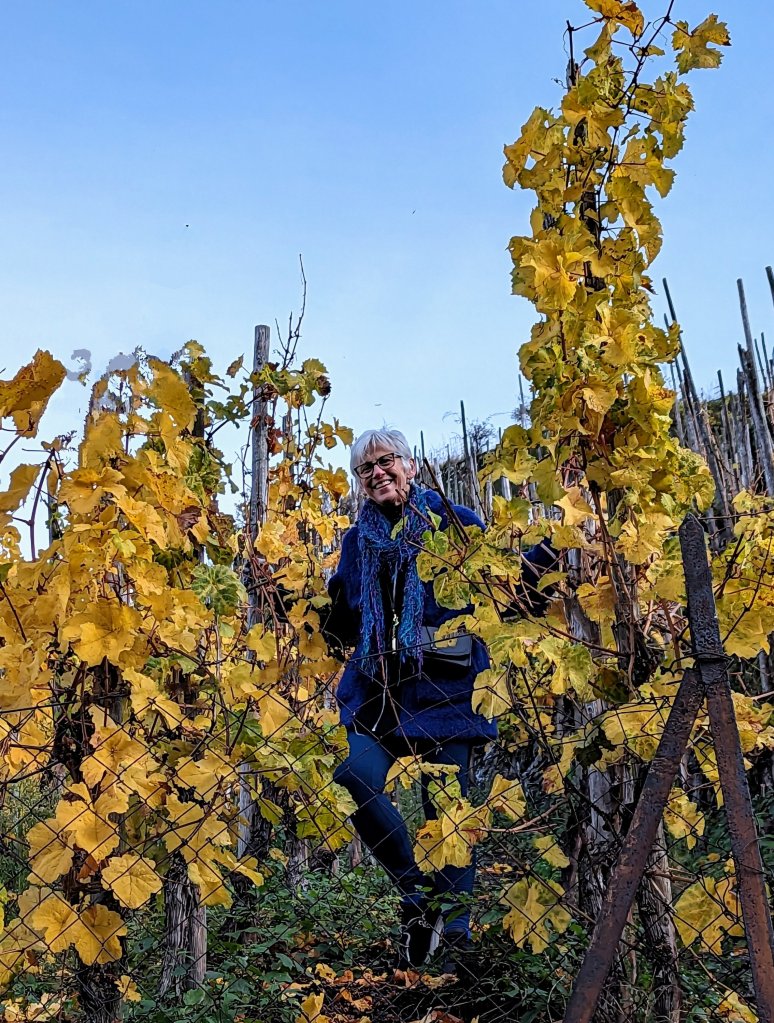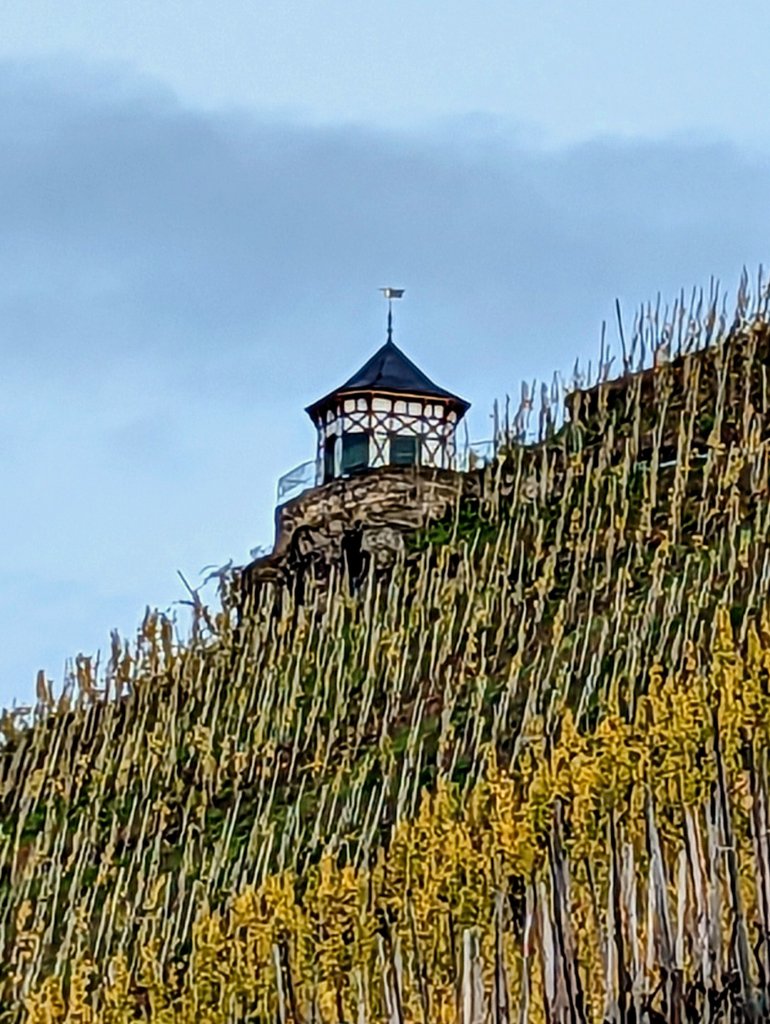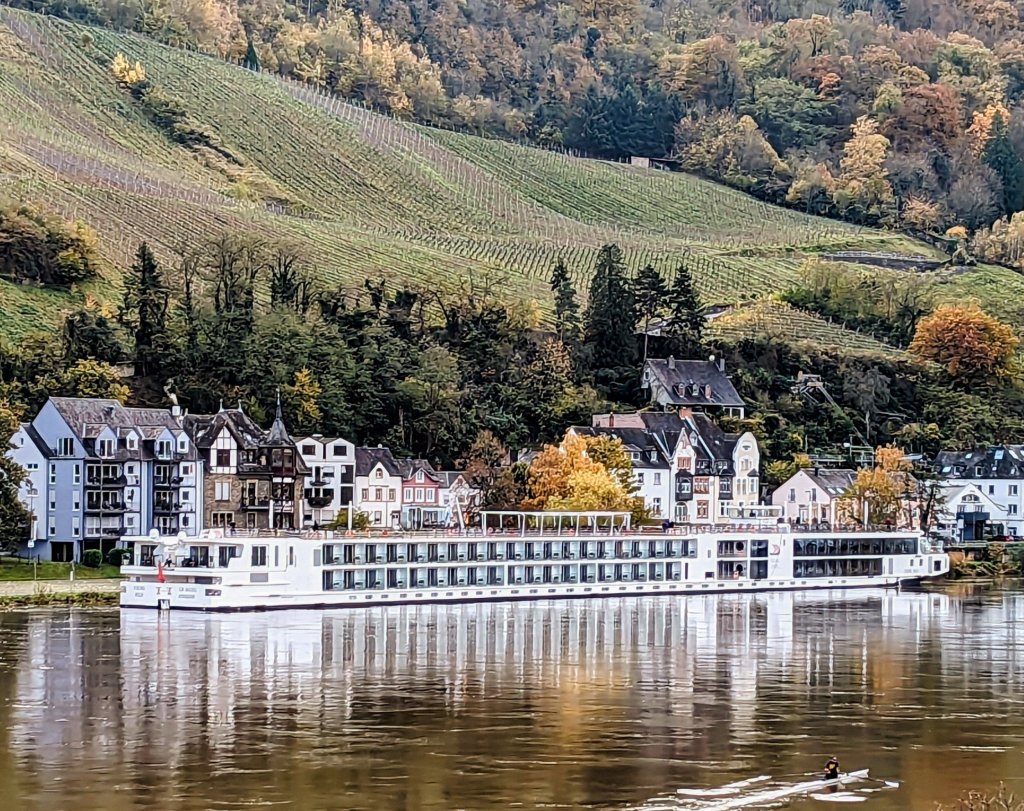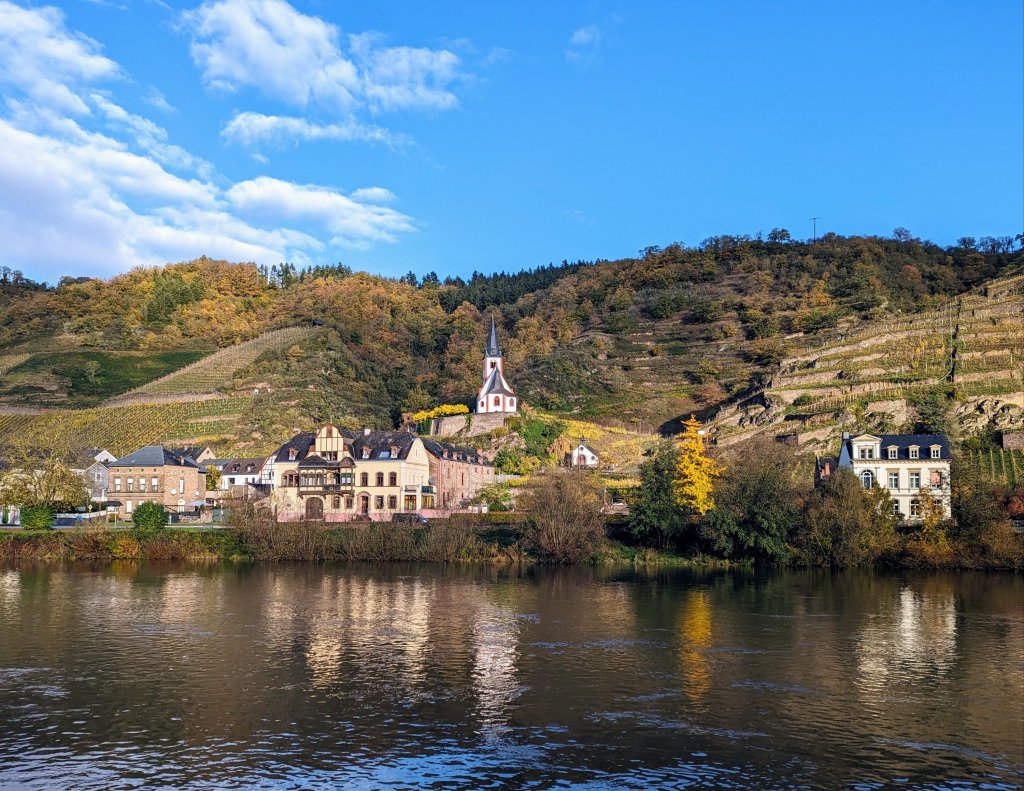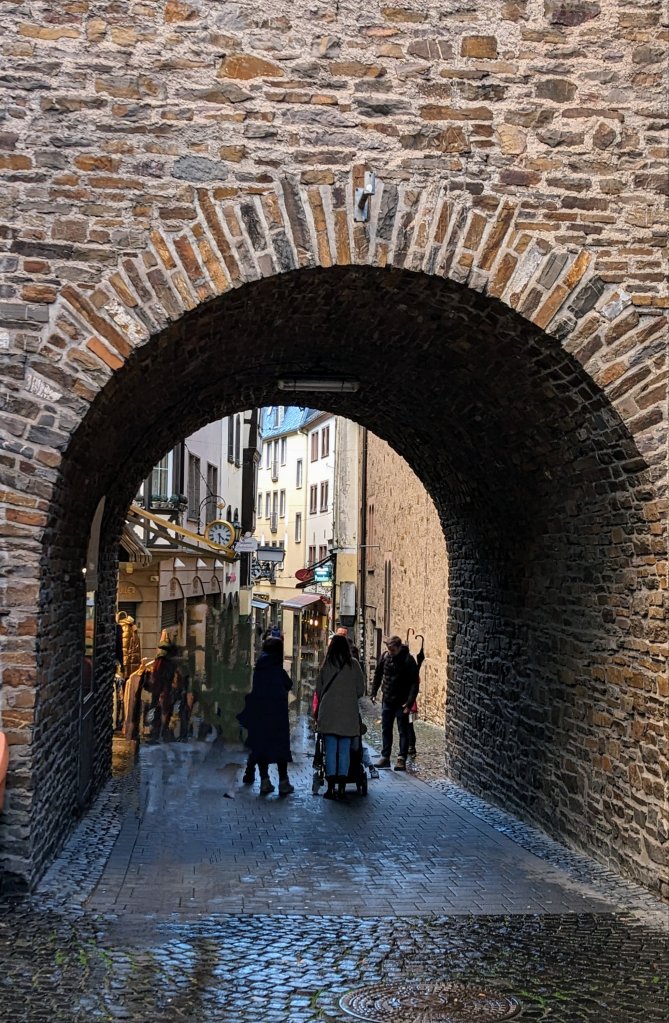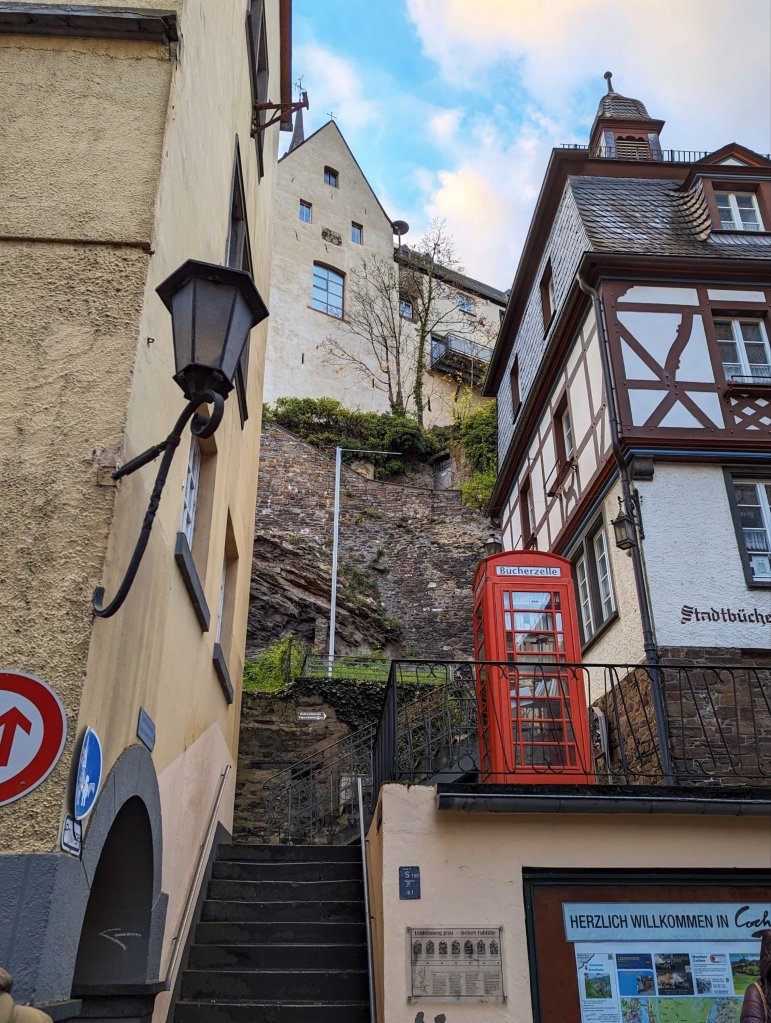
We packed a lot into our eight days touring Provence and the delightful time passed quickly. We headed back to Avignon to return our rental car and board the TGV to Lyon.
Upon arrival in Lyon we quickly checked into the Hotel Globe & Cecile, but since our rooms weren’t quite ready we ventured out for a walk and lunch. The hotel’s central location makes it a good place to explore this picturesque city.


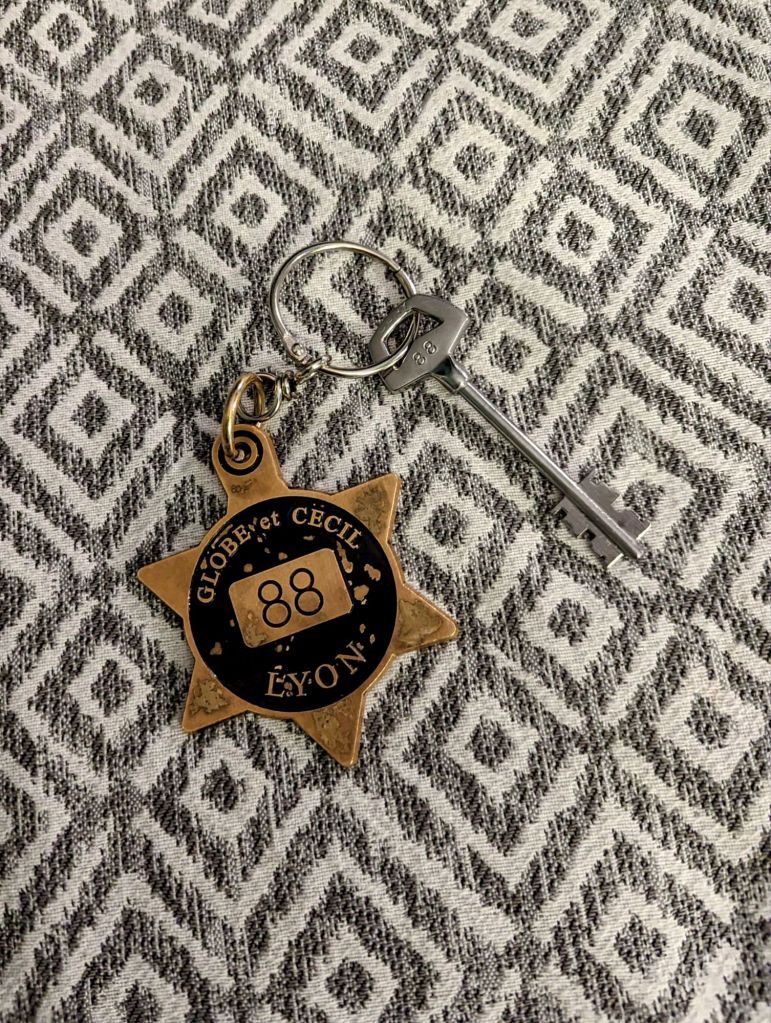
Place des Jacobins is about a block away. This charming square is surrounded by buildings with ornate facades.

A little further into the city, we came to Rue Merciere, an inviting street teeming with people enjoying an outdoor lunch. The French take their lunch break seriously, and the cafes were buzzing. We found a welcoming spot and made ourselves at home for our first of many memorable meals in this “gastronomic center of Europe.”
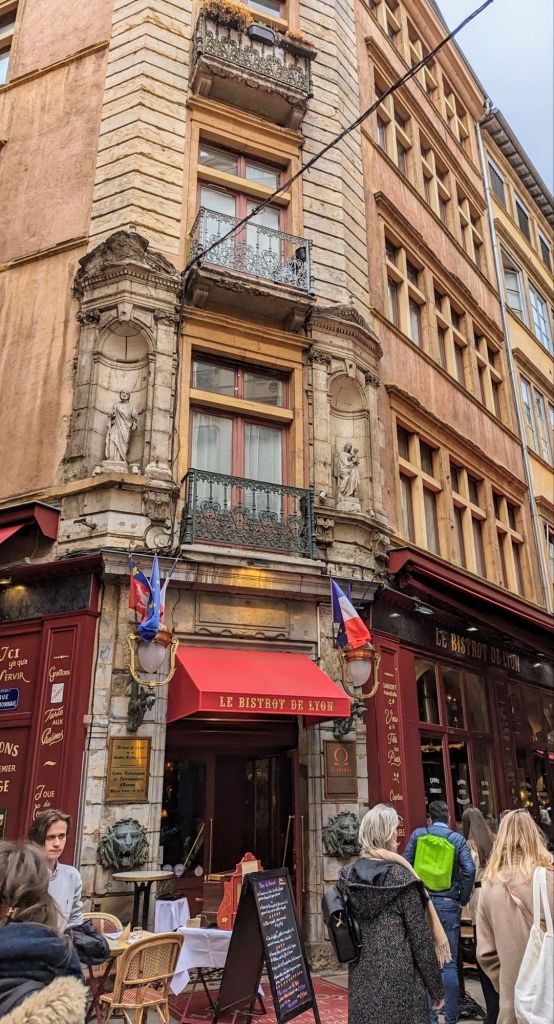
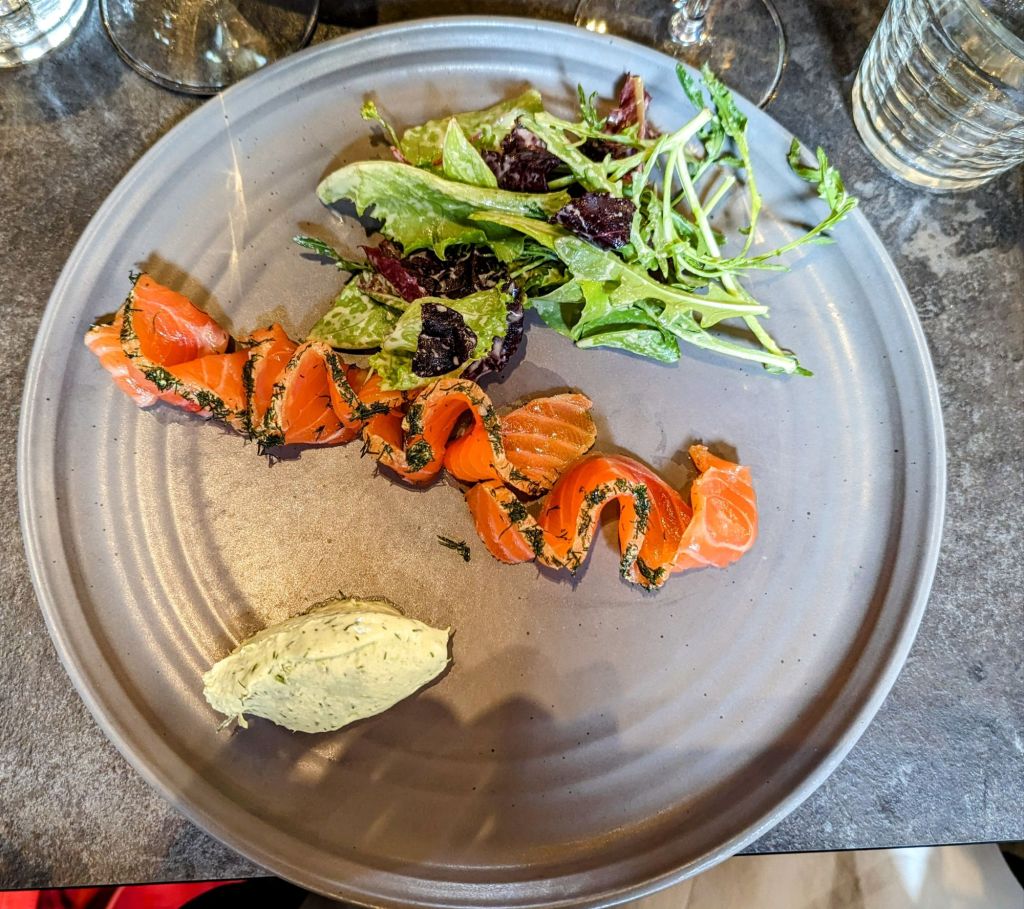

Fortified for the afternoon ahead, we wandered around taking in the sights of this beautiful city, enjoying the sunshine and balmy temperature as long as it lasted.
Lyon, the capital city in France’s Auvergne-Rhone-Alpes region sits at the junction of the Rhone and Saone Rivers. This location provides the Lyonnaise with proximity to rolling countryside for easy access to the freshest produce, meats, eggs, cheeses and other food products. There are lakes and rivers for fishing and mountains for hiking and skiing or just getting away from it all. Lyon has so much to see and do and enjoy!
Lyon’s diverse architecture reflects its long history with ruins from the Roman Amphitheater, ornate medieval and Renaissance buildings, and sleek, modern designs in the Confluence District.


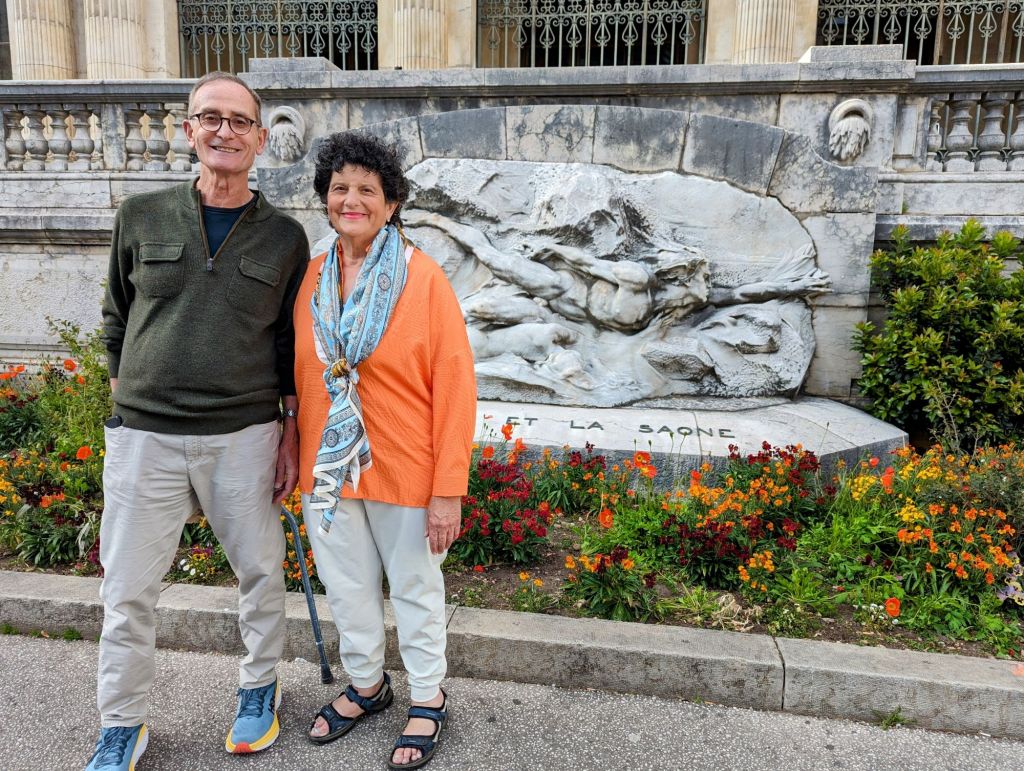

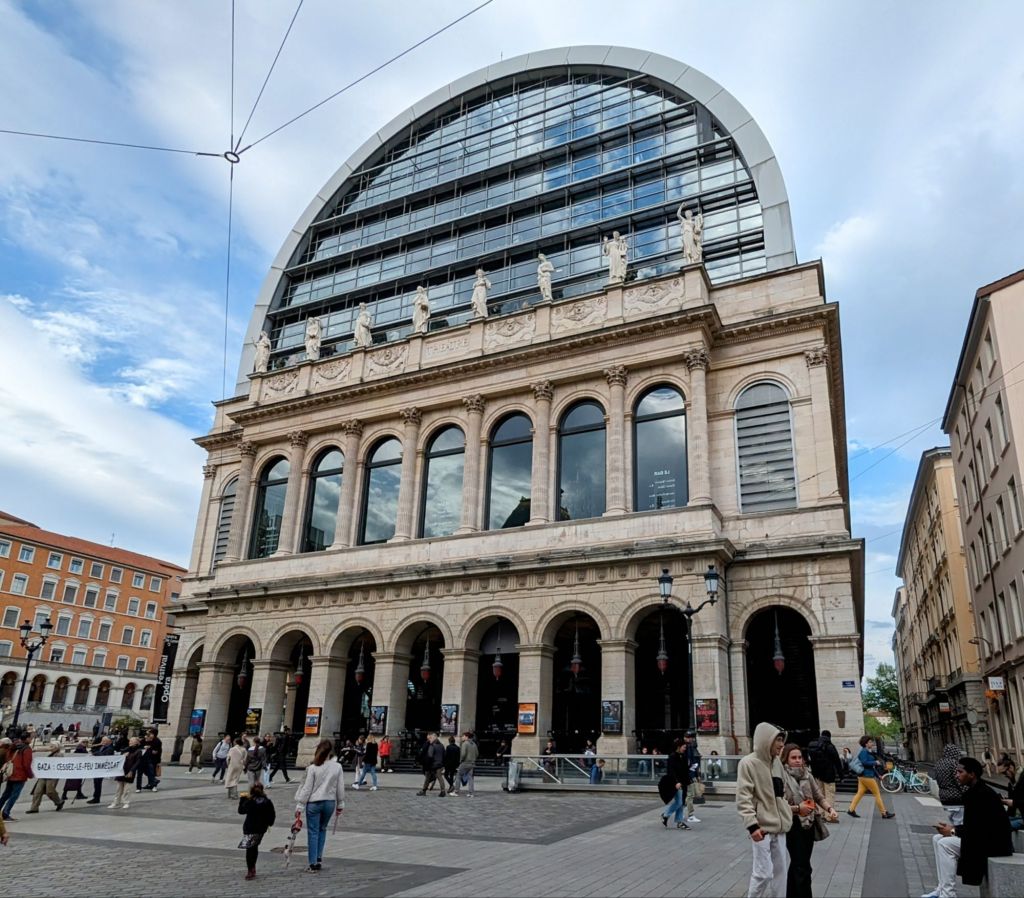
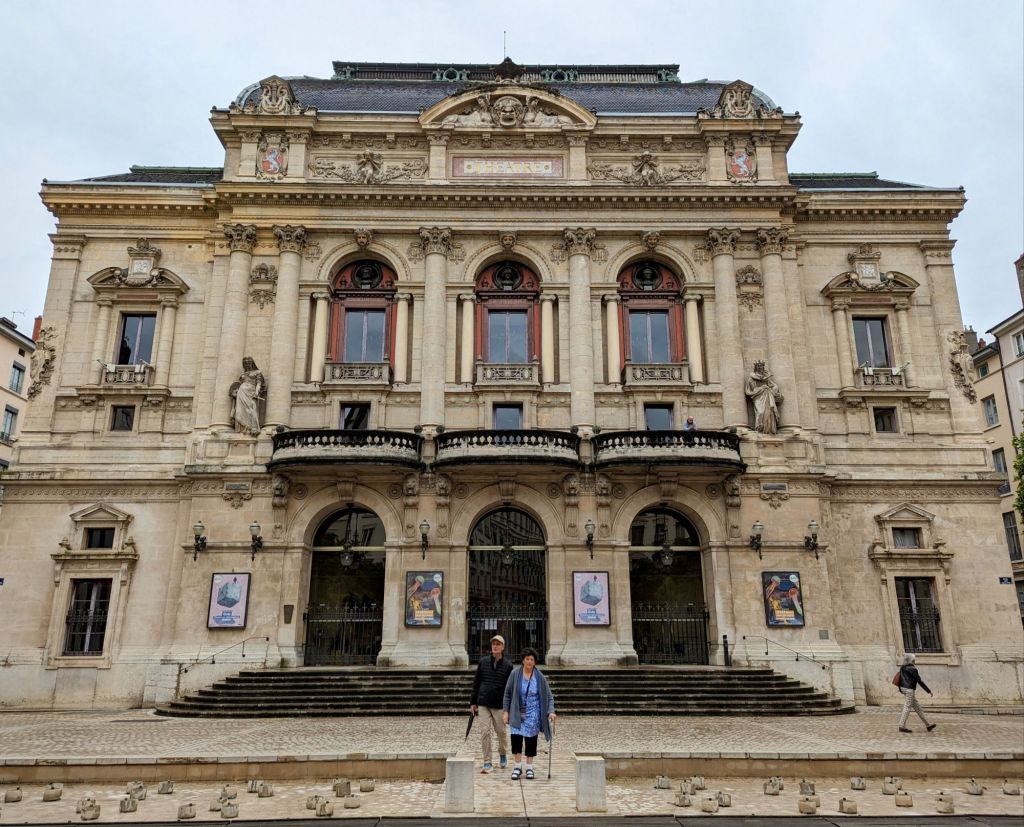


A colorful piece of contemporary art looking a bit like an overgrown technicolor plant stands in sharp contrast to the magnificent historic buildings surrounding it. The Flower Tree was the 2003 work of Korean artist Jeong-Hwa Choi for the 7th biennial contemporary art festival. It has become an iconic Lyon photo spot, so we couldn’t resist.

The second morning we braved a torrential rain storm to join our tour guide Paul for a walking tour sprinkled with entertaining stories, keen insights and fascinating history. If you’re ever in Lyon or want to learn more about the city please look him up at http://www.freetourlyon.com


Vieux Lyon, the oldest neighborhood in Lyon, sits on the riverbanks of the Saone and reflects the spirit of early Lyon, where most workers were engaged in the silk industry. The area is remarkably well preserved with winding streets, hidden passageways (trabules…more on those later), traditional bouchon where the “Mothers of Lyon” honed their culinary skills (again, more on Lyon’s rich food history in a bit), trendy boutiques, museums, and LOTS of public art.
We learned that silk workers were some of the earliest organizers, often using what we call graffiti to voice their protests over poor working conditions and calls for reform. The tradition continues today with many political statements and other forms of advocacy and storytelling depicted in images and messages on ever-changing walls throughout the neighborhood. Animals are a favorite subject of Lyon’s public art.
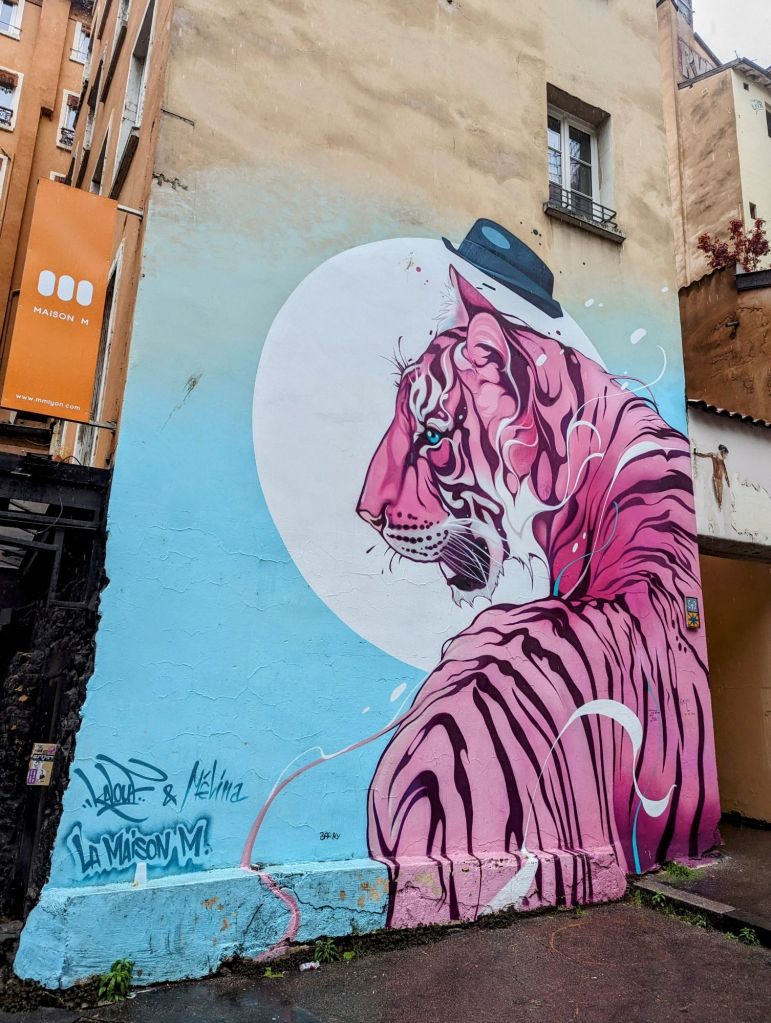
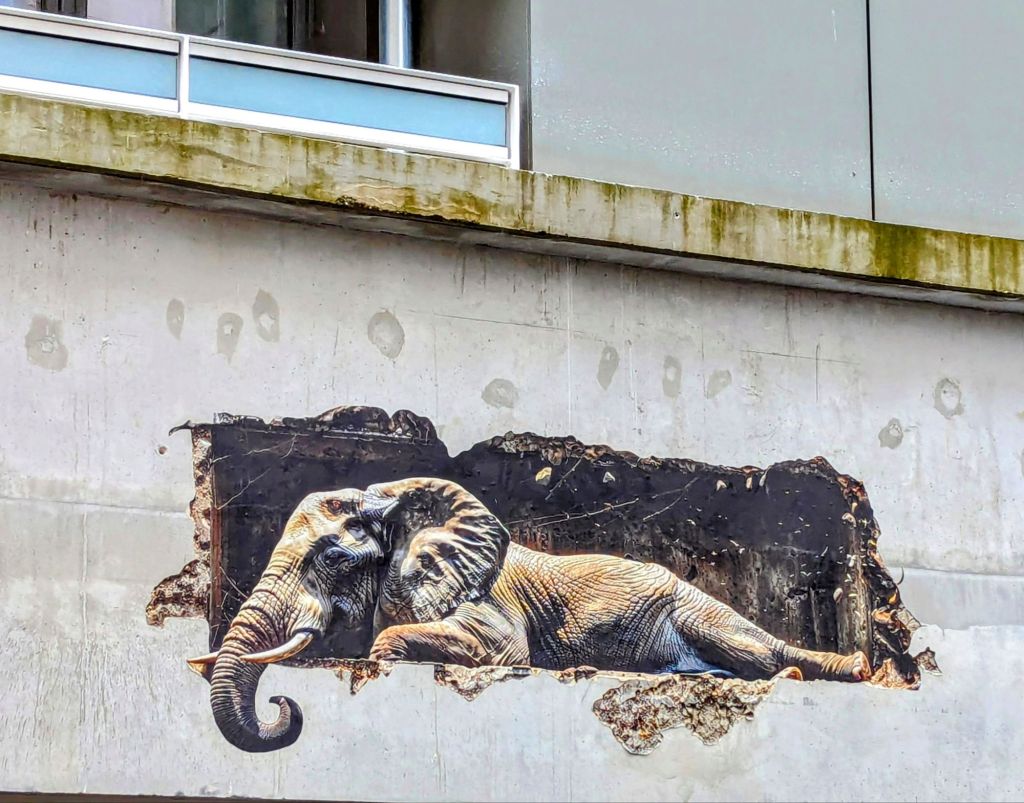
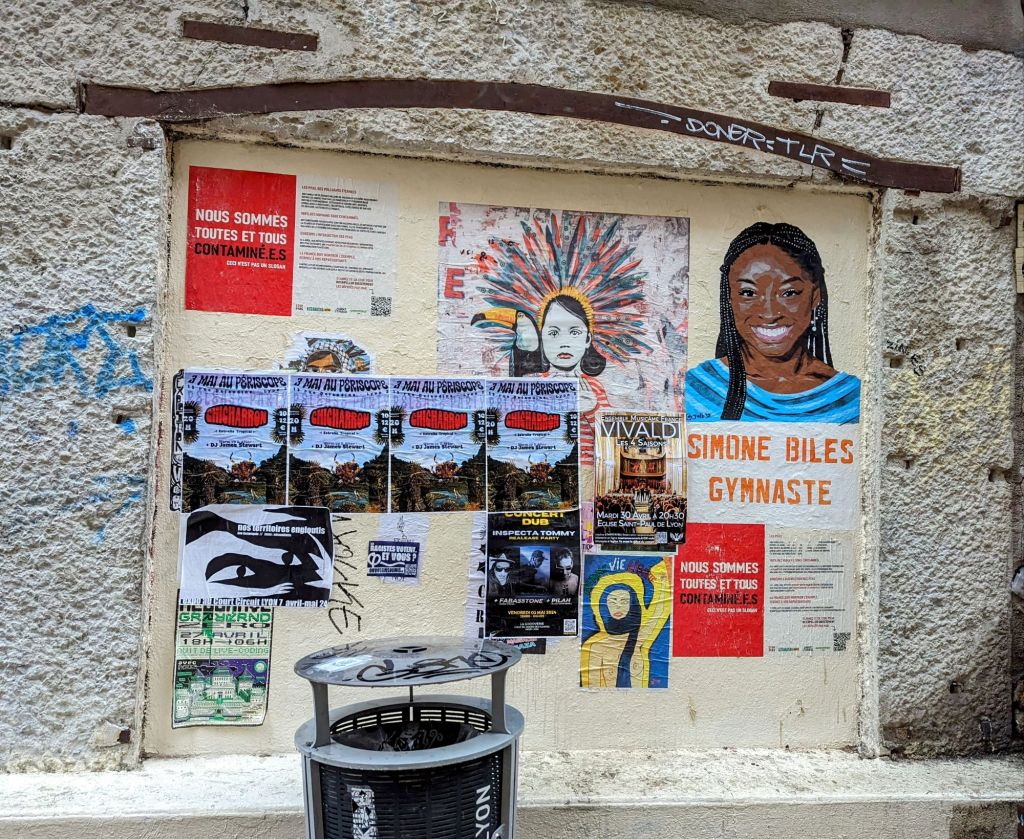
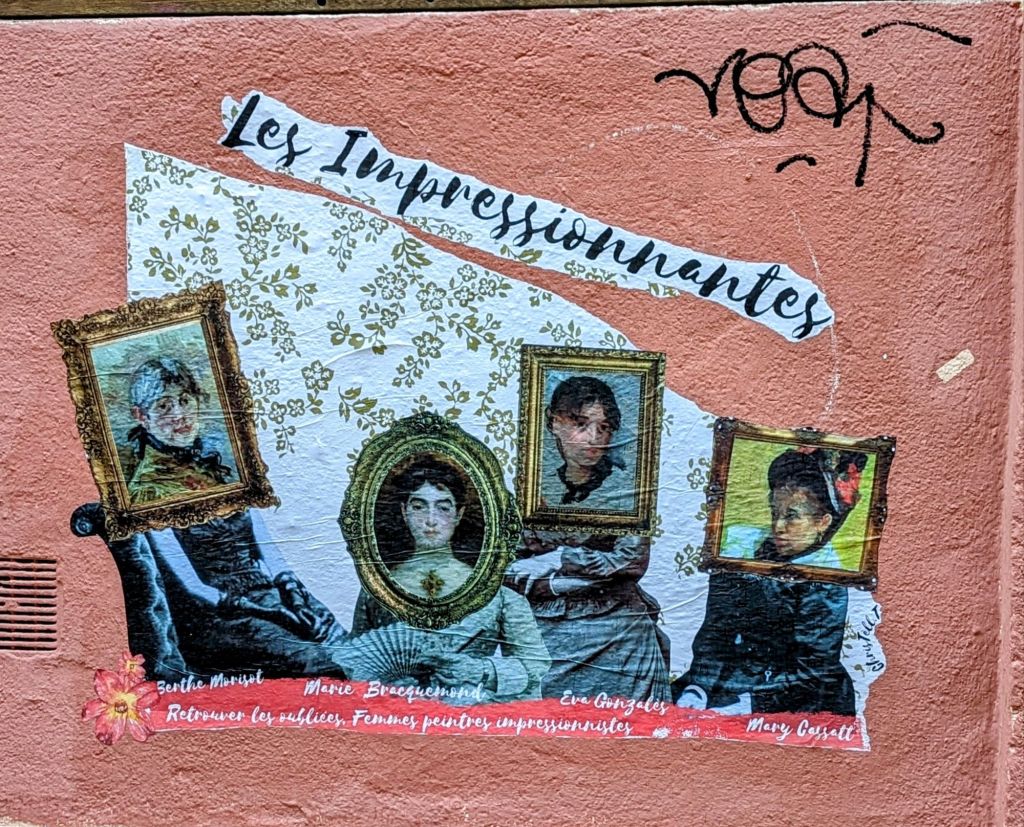

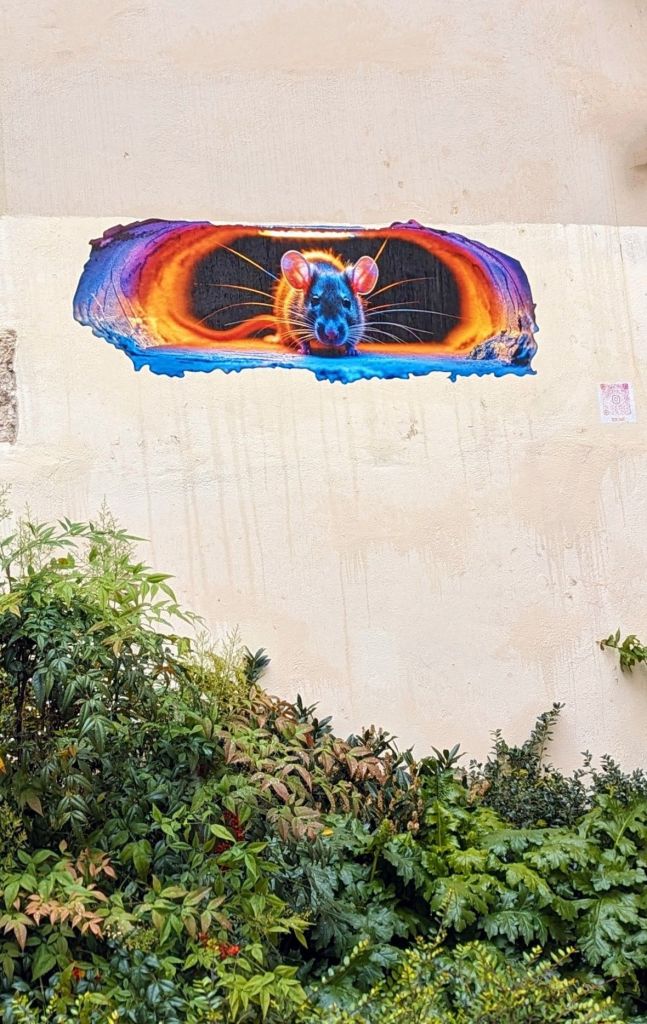
Here are just a few more scenes from our tour of the old city.
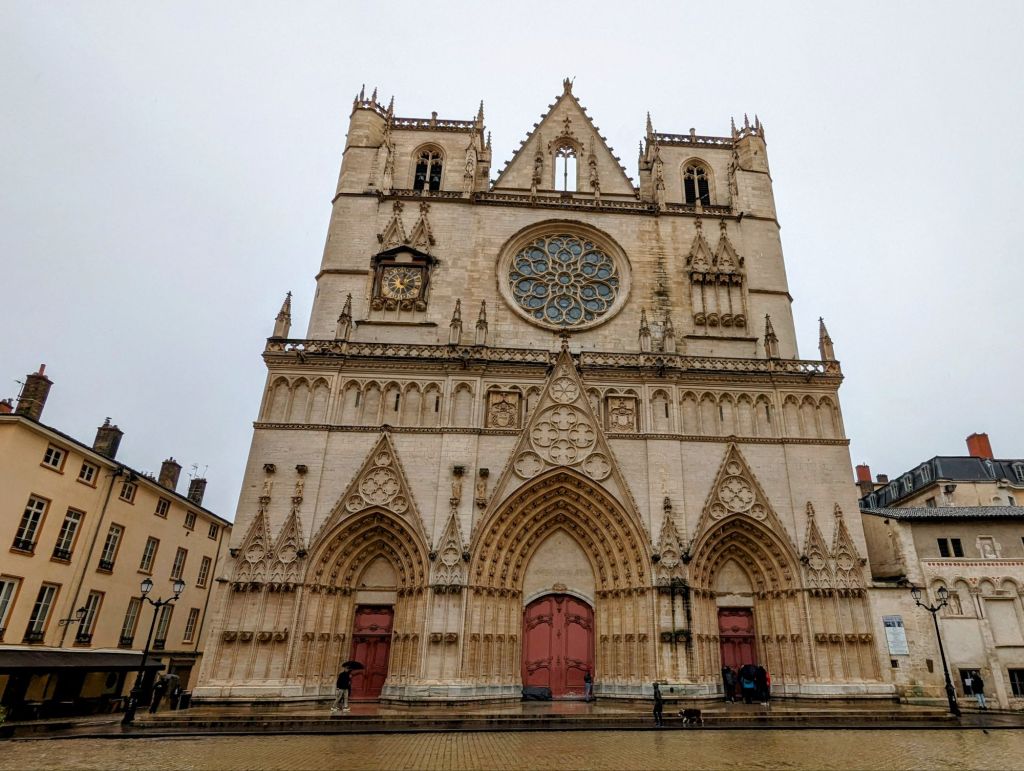
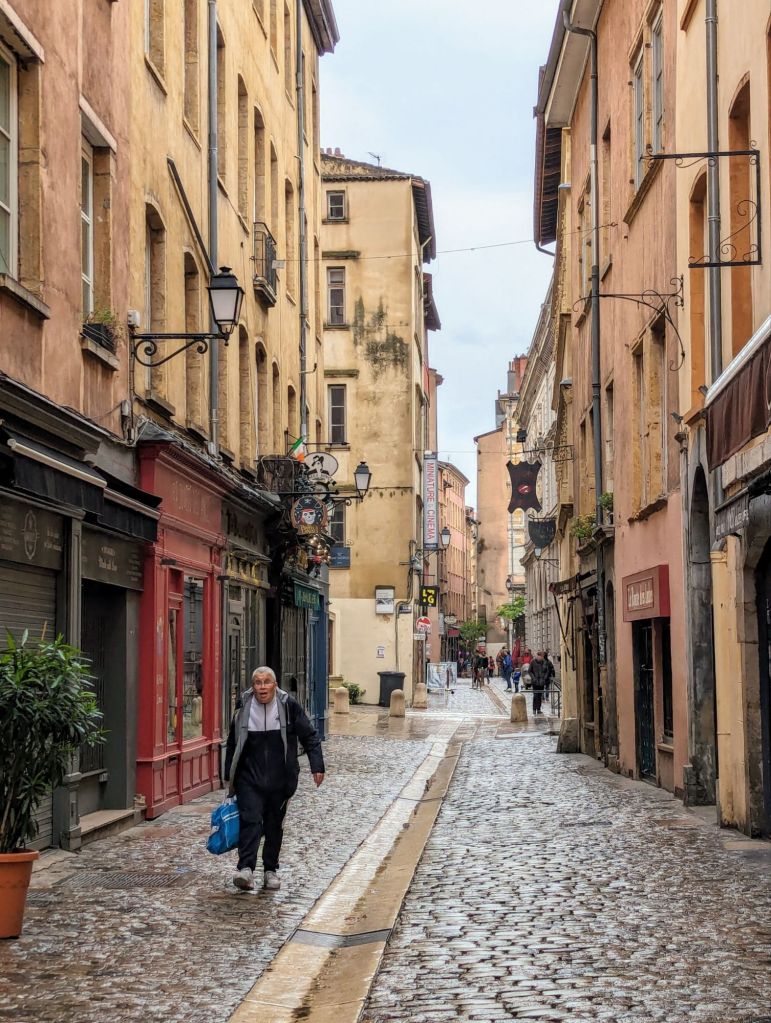

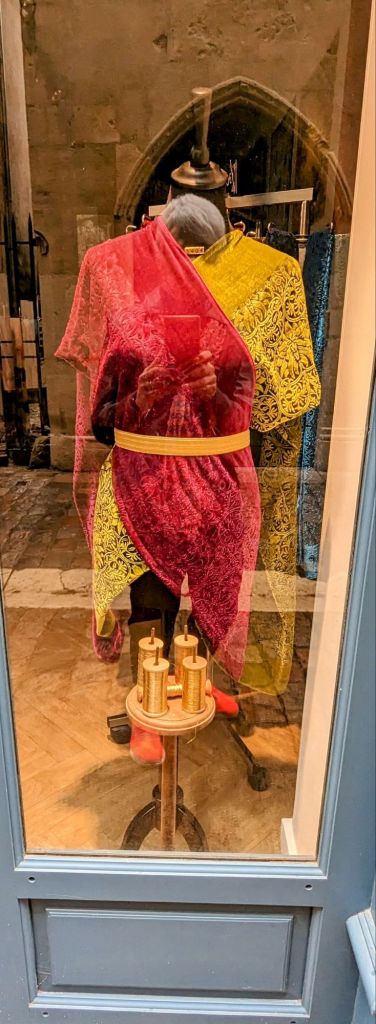


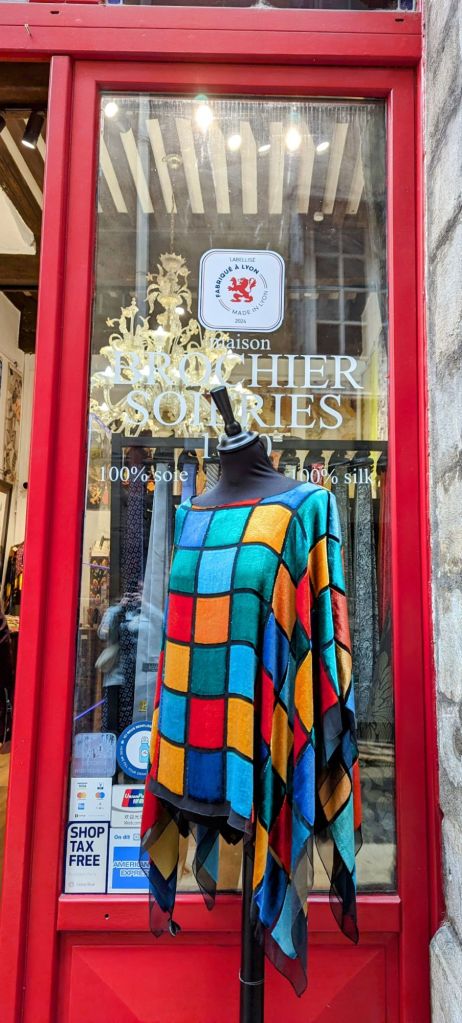

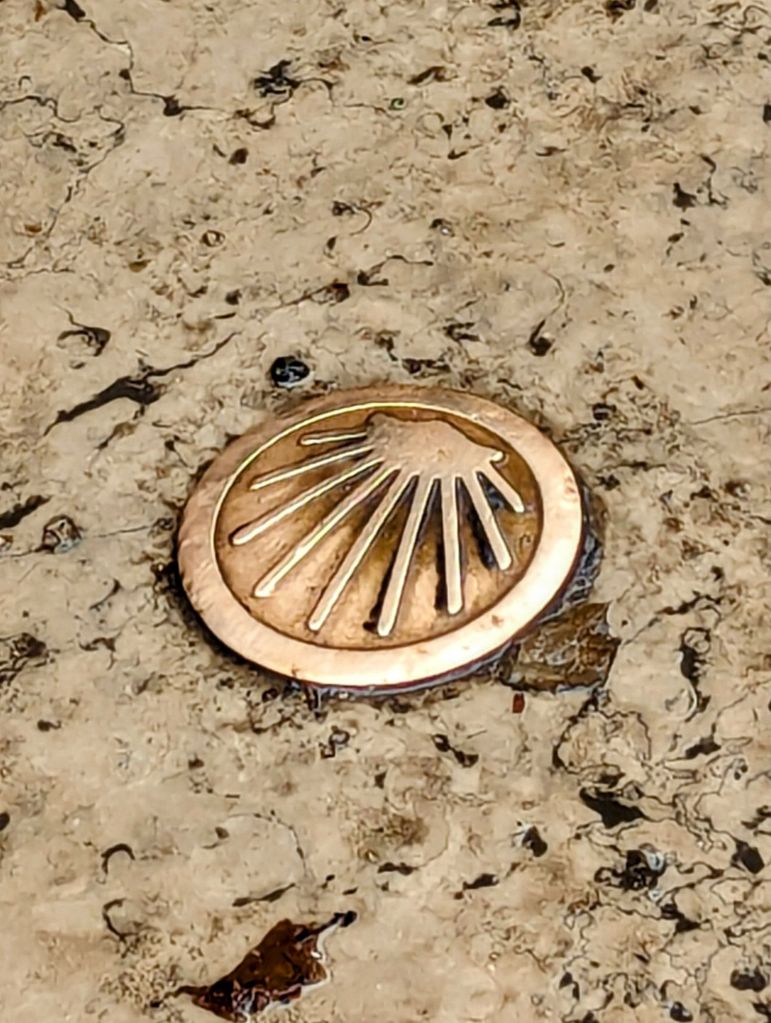



The trabules are historic covered passageways unique to the old town. Notable elements of Lyon’s rich architectural legacy, trabules are secret passages connecting courtyards and buildings. They typically consist of narrow corridors, spiral staircases, and inner courtyards. They were often used by the canuts (silk workers) to transport silk to and from tailors in the 19th century. They were also used during WW II by the Resistance to escape from the Nazis.



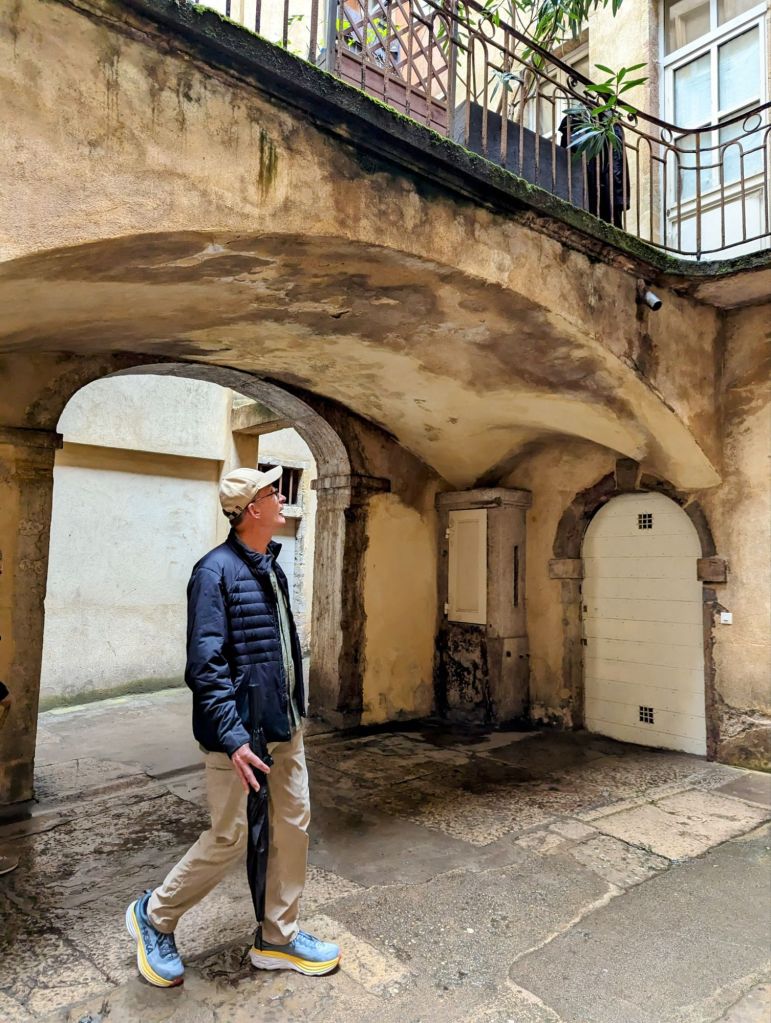


When the rain made it unbearable to be outdoors any longer (local news later reported that Lyon had a month’s worth of rain in a day!), we sought refuge at the Confluence Museum, an ultra modern structure housing fascinating natural historical and anthropological artifacts in interesting displays. The museum invites visitors to “look at and understand the world around us with curiosity and wonder.” It’s like a journey through time and across the world. One could easily spend several days here, and we all agreed that it was an excellent alternative to braving the elements.

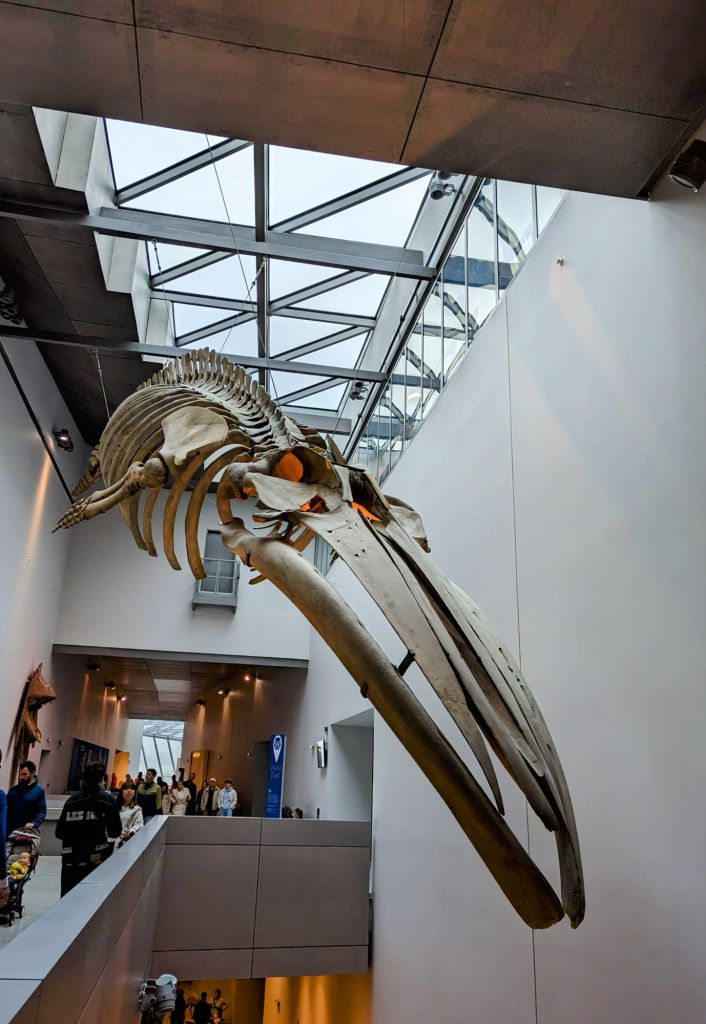



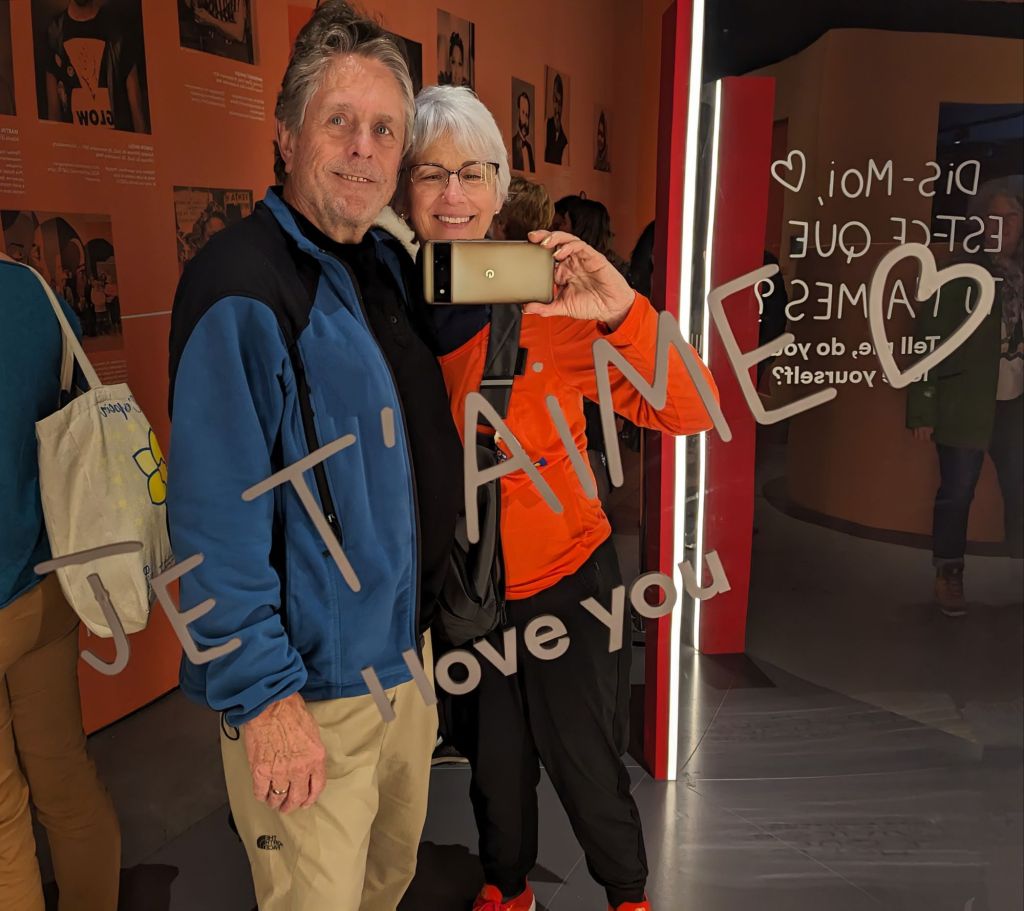
The weather improved tremendously the following day, so we decided to explore one of Lyon’s iconic monuments, the Basilique Notre-Dame de Fourviere. Located on the Fourviere hill, it provides a spectacular panorama of the city.


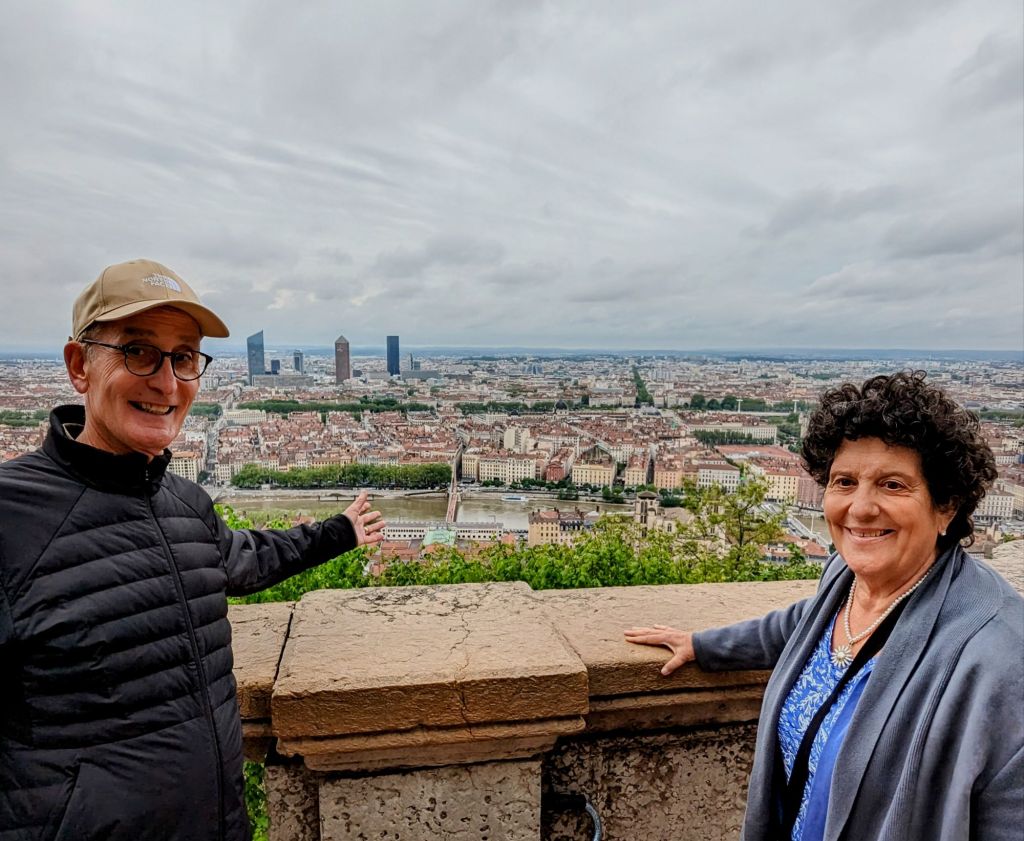


The basilica was built from 1872-1884 to thank the Virgin Mary for preserving Lyon during the 1870 Franco-Prussian War. Inside, magnificent frescoes, Byzantine mosaics and stained glass windows depict historic moments in Lyon’s rich history. The crypt contains small chapels dedicated to different significant saints.
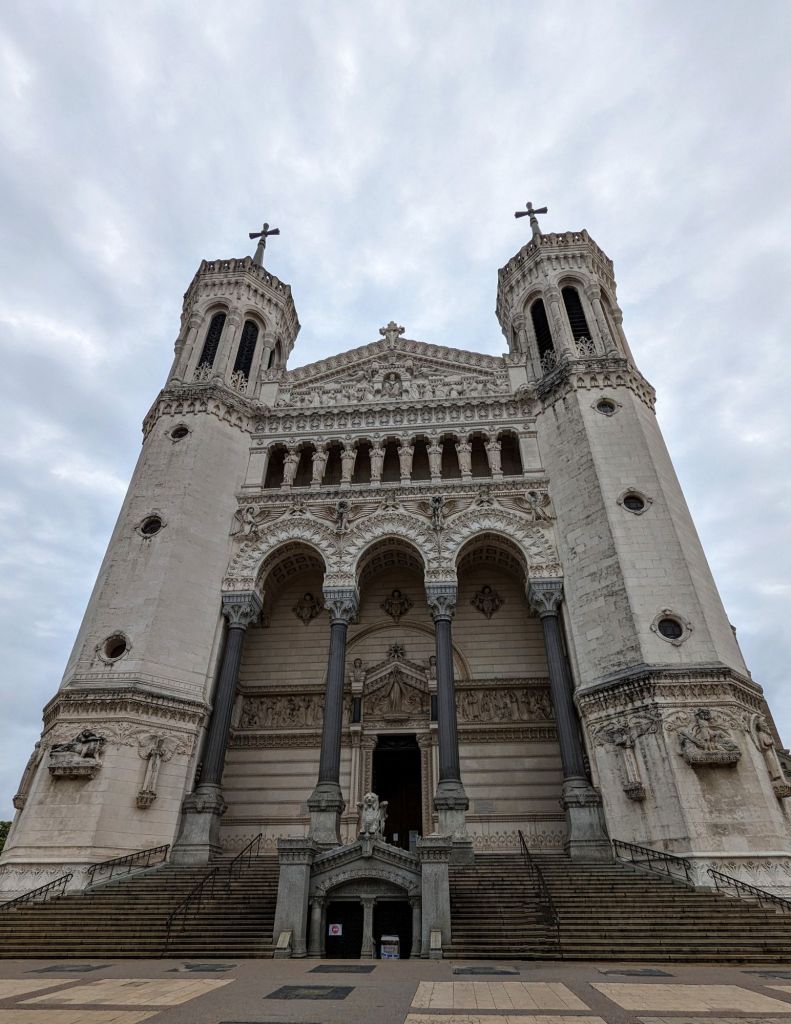

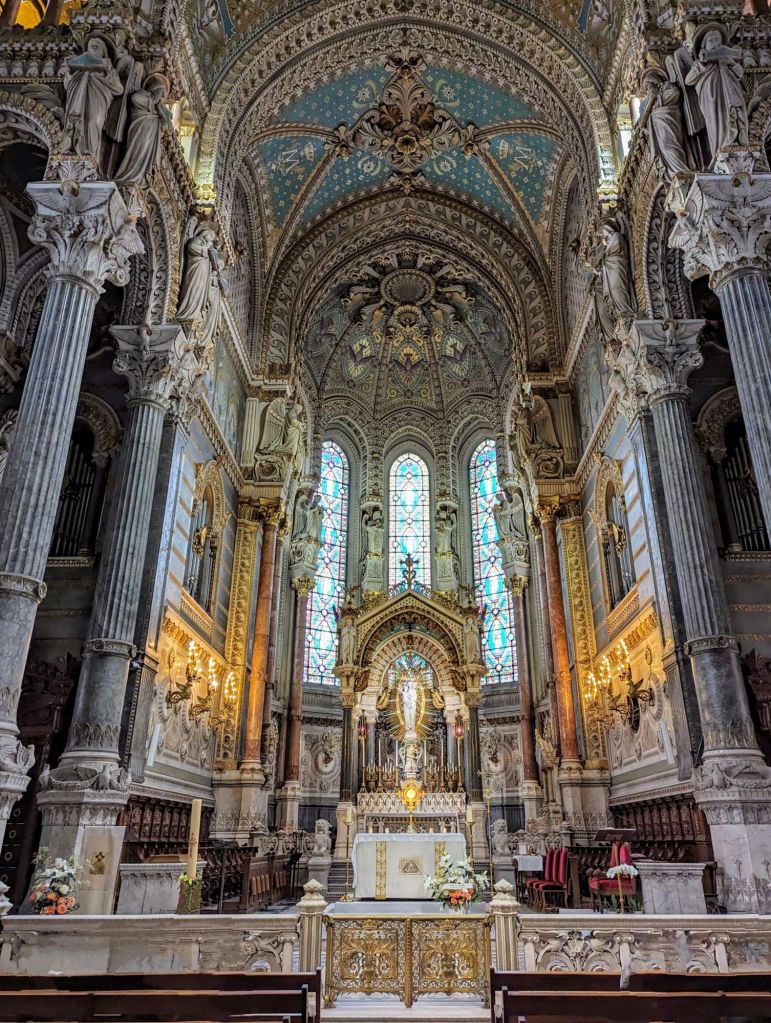




I’ve mentioned the food of Lyon indirectly throughout this post, and like all good meals, I’ve saved the sweetest for dessert. Lyon is known as the gastronomic capital of the world, a designation it wears proudly. Its origin rests with “The Lyon Mothers,” poor 19th century women who cooked simple, traditional food for their families using the cheaper cuts of meat and inferior produce available to them. But they cooked with skill in the style of the high quality food they prepared for wealthy aristocrats, and the results were incredibly delicious. One of the “meres” was Eugenie Brazier who, at age 19, became pregnant with the child of a married man. She was forced to leave home and cook to support herself and her child. Her culinary skills became widely known, and she opened a small bouchon, a type of traditional restaurant unique to Lyon. By the time she was 40, she owned two very popular bouchons. And in 1933, she earned the distinction of SIX Michelin stars, three for each of her restaurants! During this time, “The Mother of French Cuisine” was training a young apprentice to cook in her kitchen. Little did she know that this potato peeler would go on to become “The Father of Nouvelle Cuisine,” none other than Paul Bocuse himself.
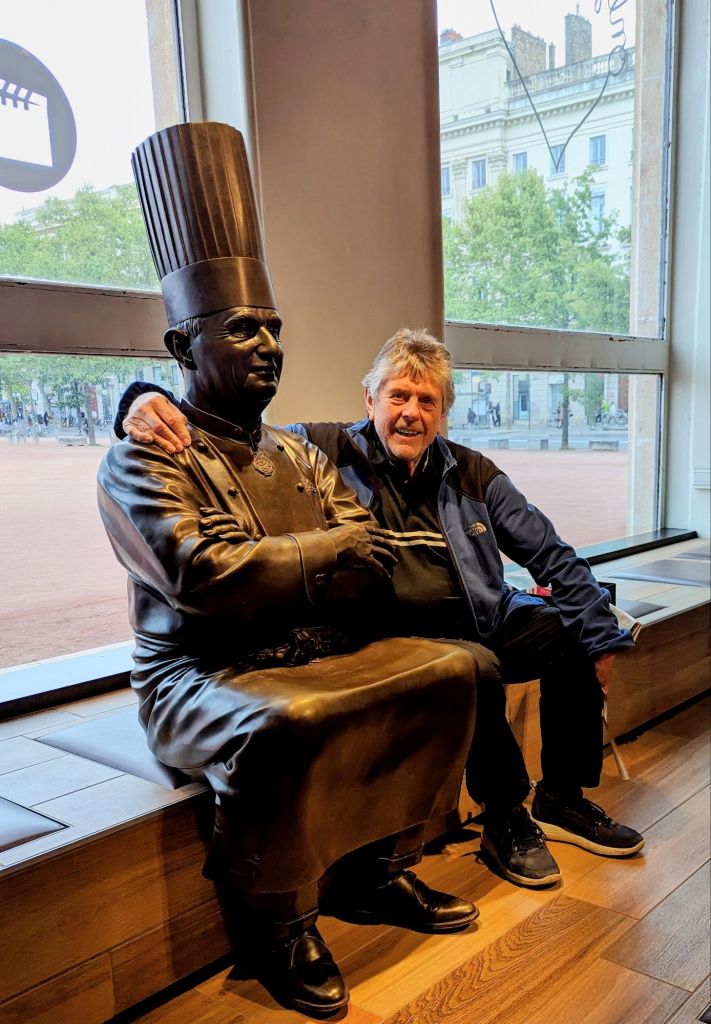
Our visit to the Halles de Lyon Paul Bocuse was a bit late to see local chefs carefully selecting ingredients for their next menus, but we got a feel for this incredible 56 vendor indoor market where the best of the best cheeses, breads, pastries, chocolates, fresh and dried meats and sausages, chickens from Bresse, and other gourmet delicacies are artfully displayed for the most discerning chefs. We also tasted some sweet treats and bought some chocolate to bring home.

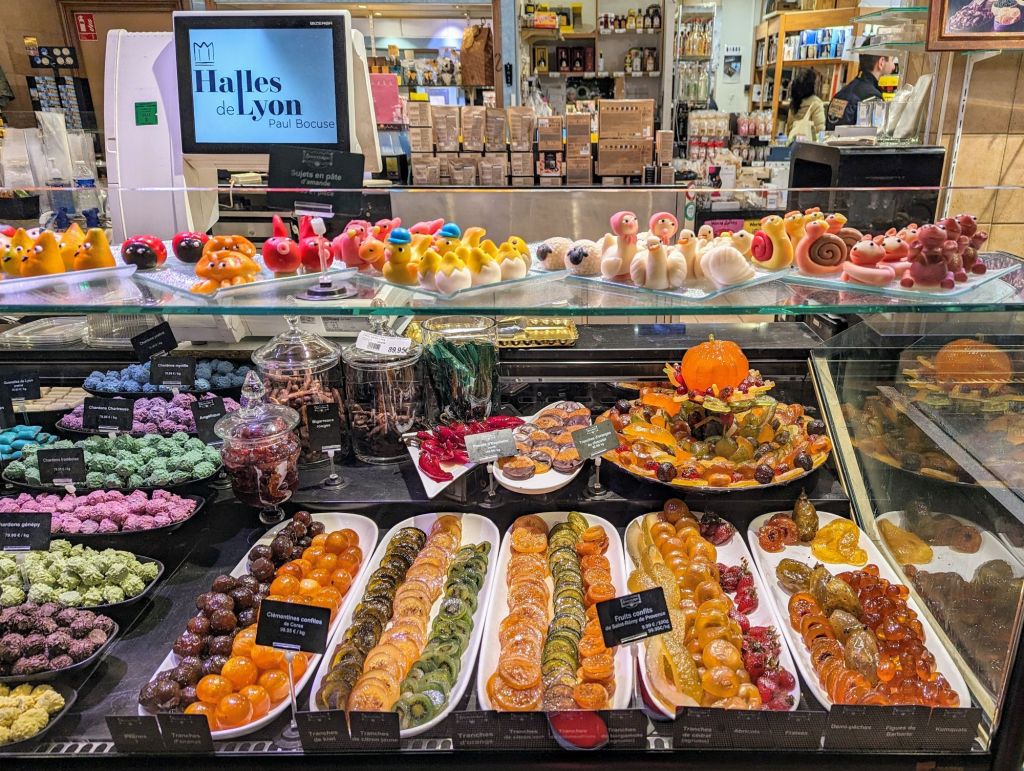

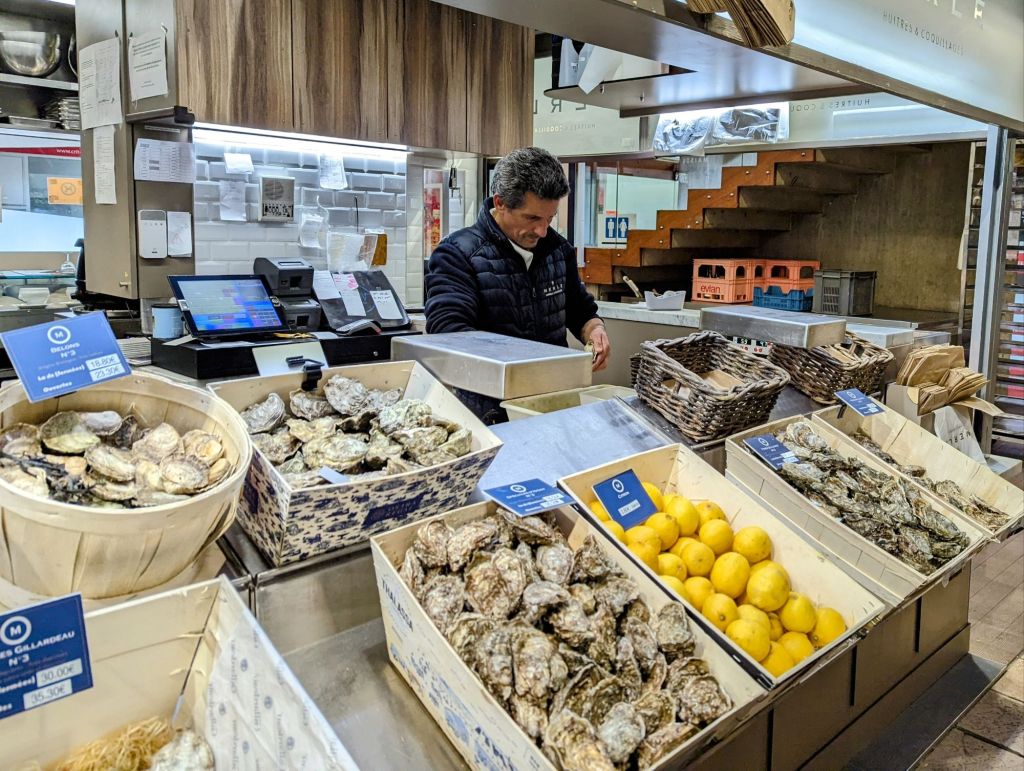
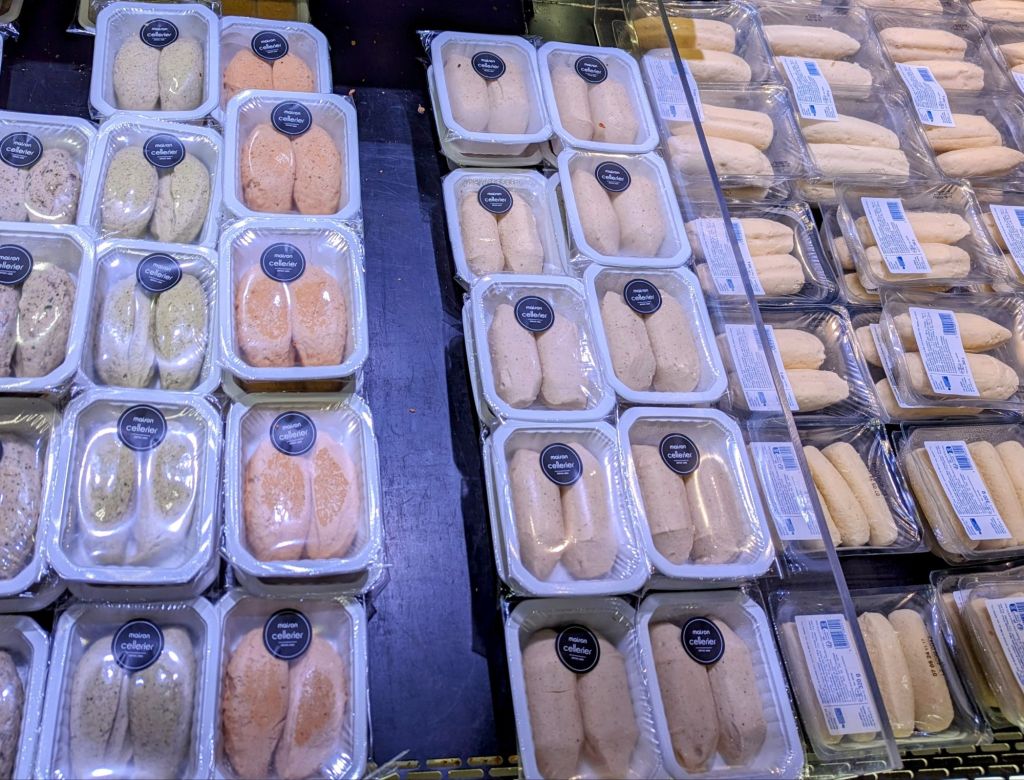


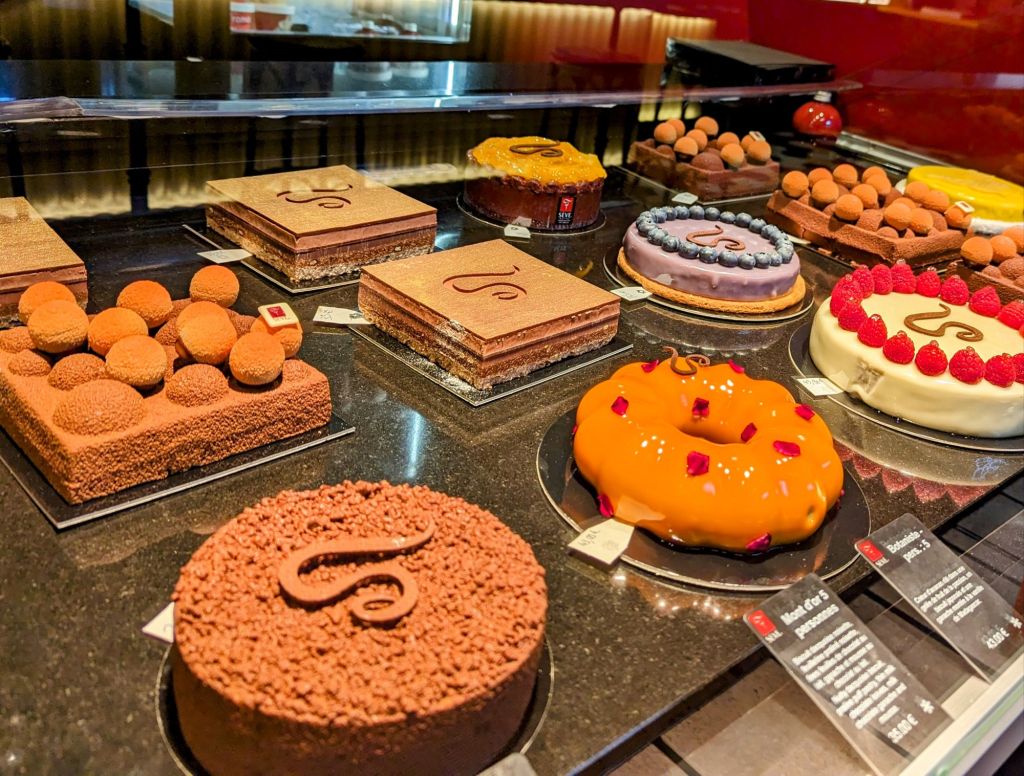
We really tried (and failed!) not to eat too much in Lyon, skipping the buffet breakfast offered at the hotel, but our carefully curated restaurant choices proved that there are few bad meals in Lyon. I’ll focus on our three dinners, because each reflects a different approach to culinary excellence.
First up is L’Etage.

The gps took us here, but the umbrellas belong to the ice cream store, and the address is for the tobacco store. You have to look carefully for the blue door, and then ascend two flights of old, broken winding stairs. An unlikely venue to be sure.


At the second floor, we took a long, dark hallway and were convinced that we couldn’t possibly be in the right place. Just then a door opened revealing a pleasant room with six tables and we were greeted warmly by a boy-faced young man in an apron and flowered shoes.

He turned out to be the 32 year-old Host-Chef-Server-Owner-Storyteller extrordinaire Guillaume Mallet. He and one kitchen helper do it all. He showed us to the best table in the house overlooking the Place des Terreaux, and we settled in for a truly memorable meal.
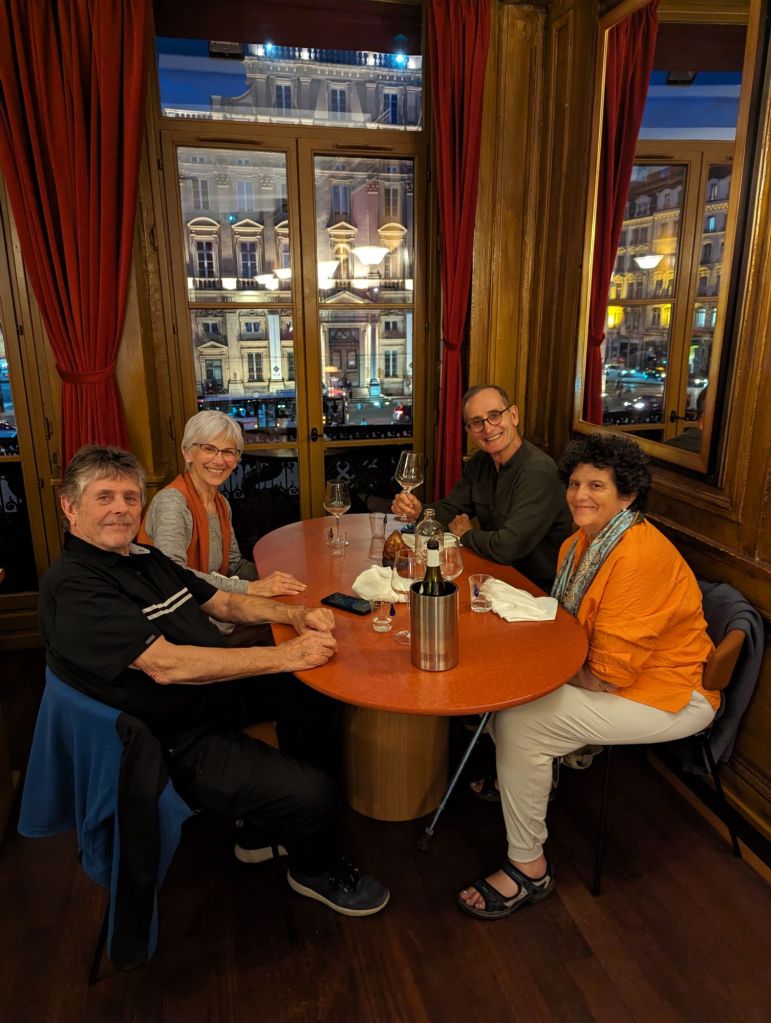
The young dad became only the 5th owner of restaurant 11 years ago. The space was a tailor shop before it was transformed into a restaurant almost 100 years ago. He develops three distinct menus daily based on his bicycle trip to the market, and everyone at the table must agree on the same choice. Fortunately we all wanted to try the tasting menu of 4 plats and 2 desserts. We were delighted with our choices.

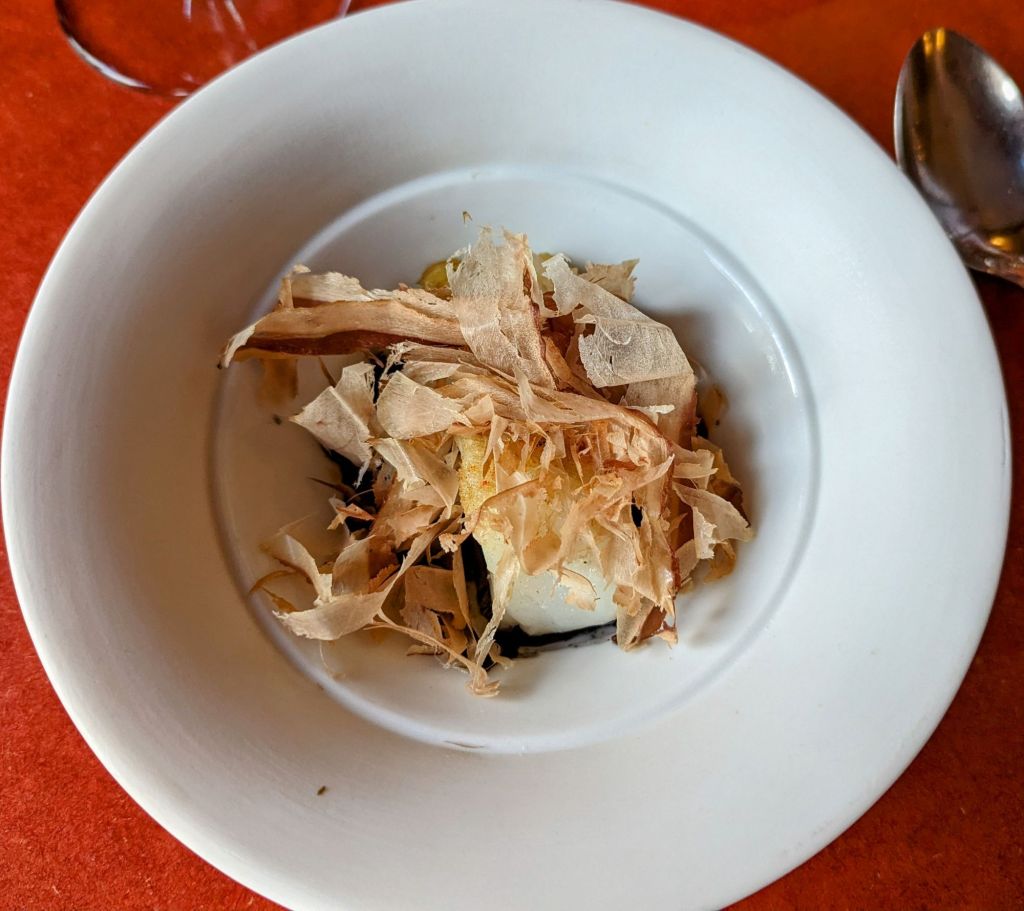






Each course was impeccably plated and graciously served. Every table was filled and all of the guests looked happy.
The next night we opted for a traditional bouchon, Cafe Comptoir Abel.


The hearty bouchon fare was surprisingly delicious. The affable service and French country decor combined to make us feel like we were dining in the home of old friends. Everything was delicious. And they even put a candle on Doug’s ice cream with warm chocolate sauce in celebration of his birthday.
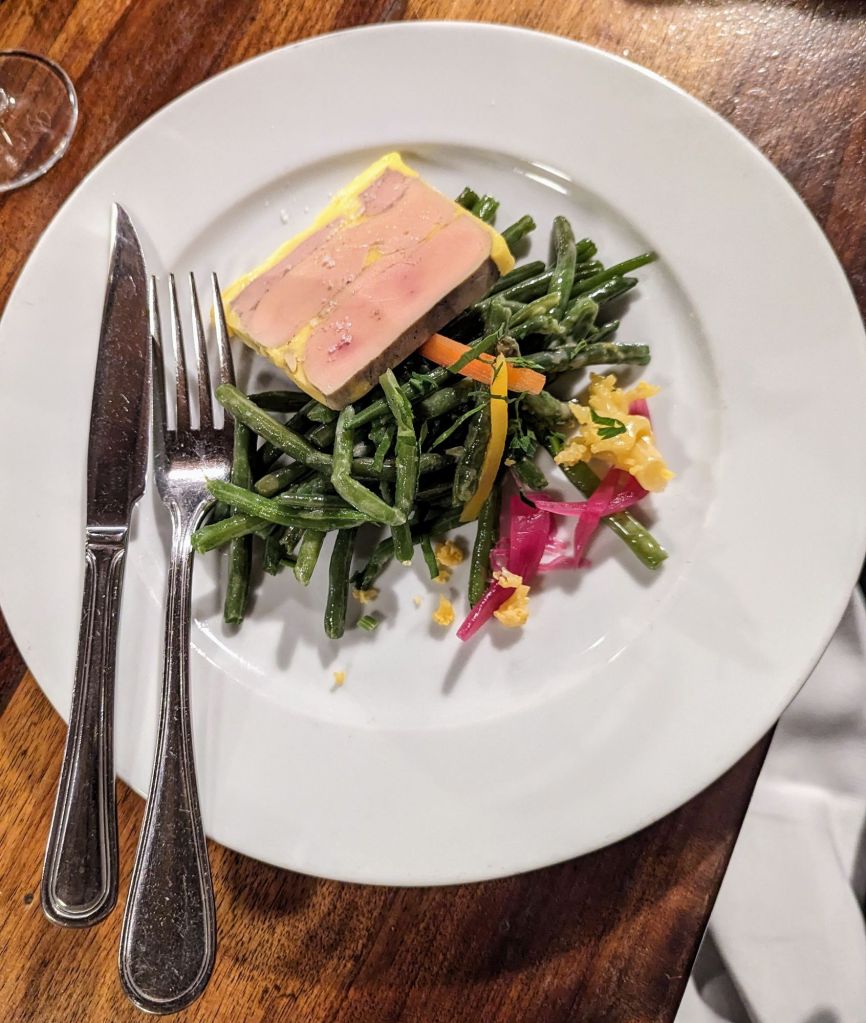

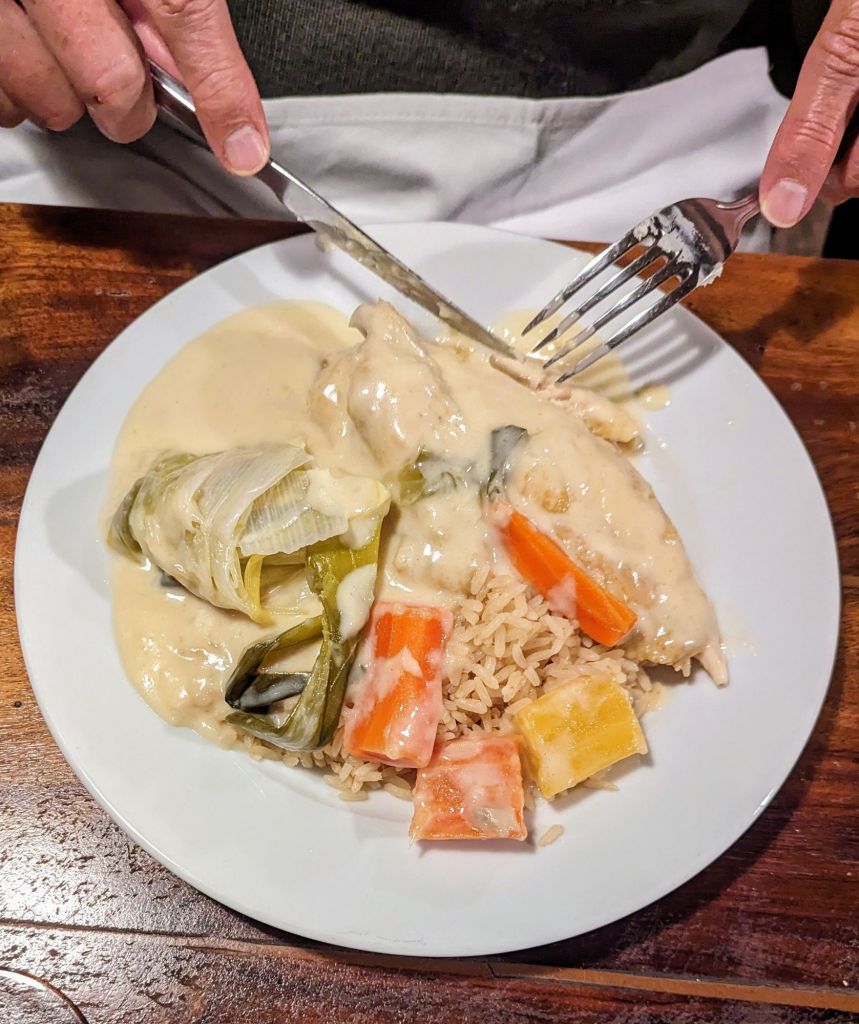
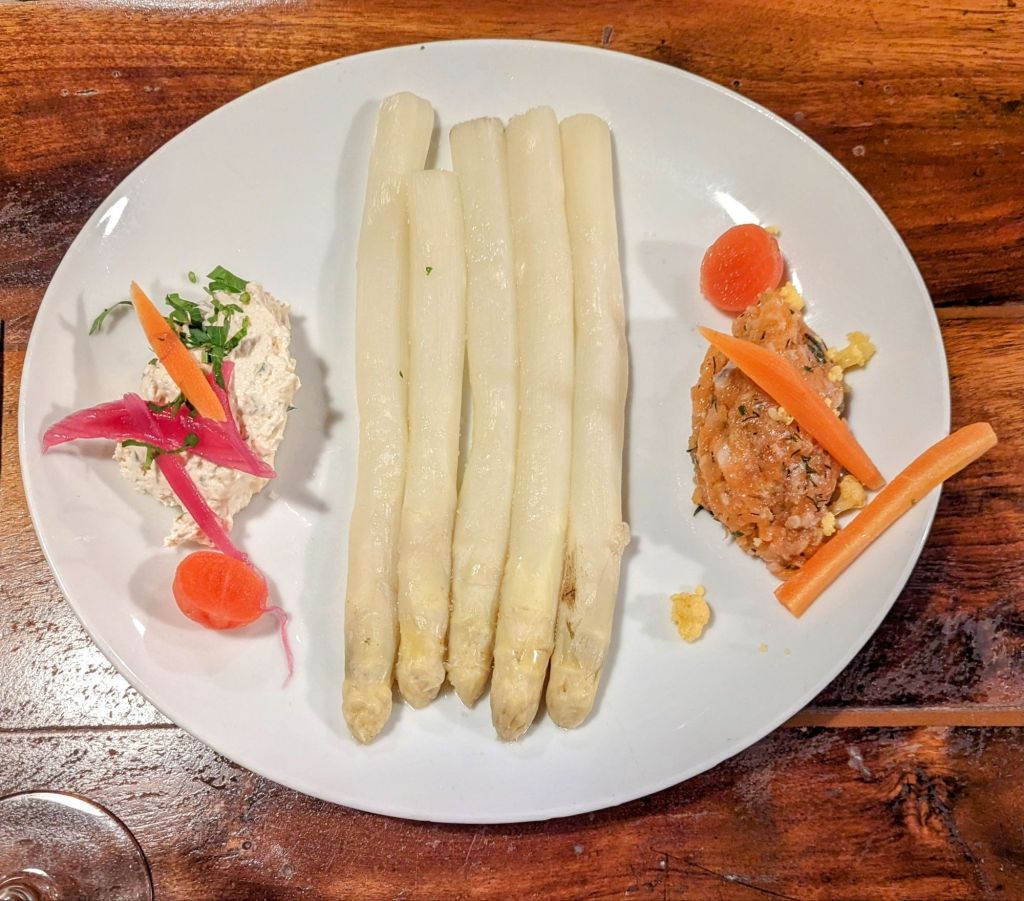

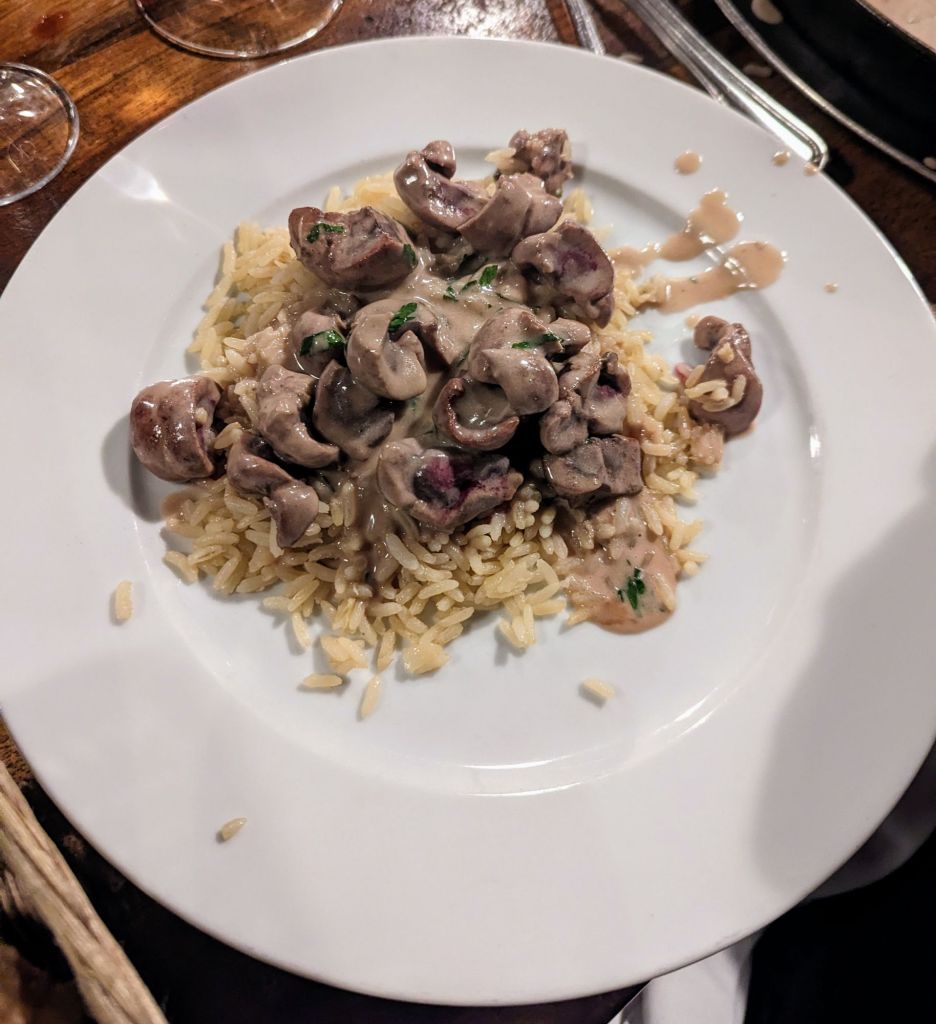
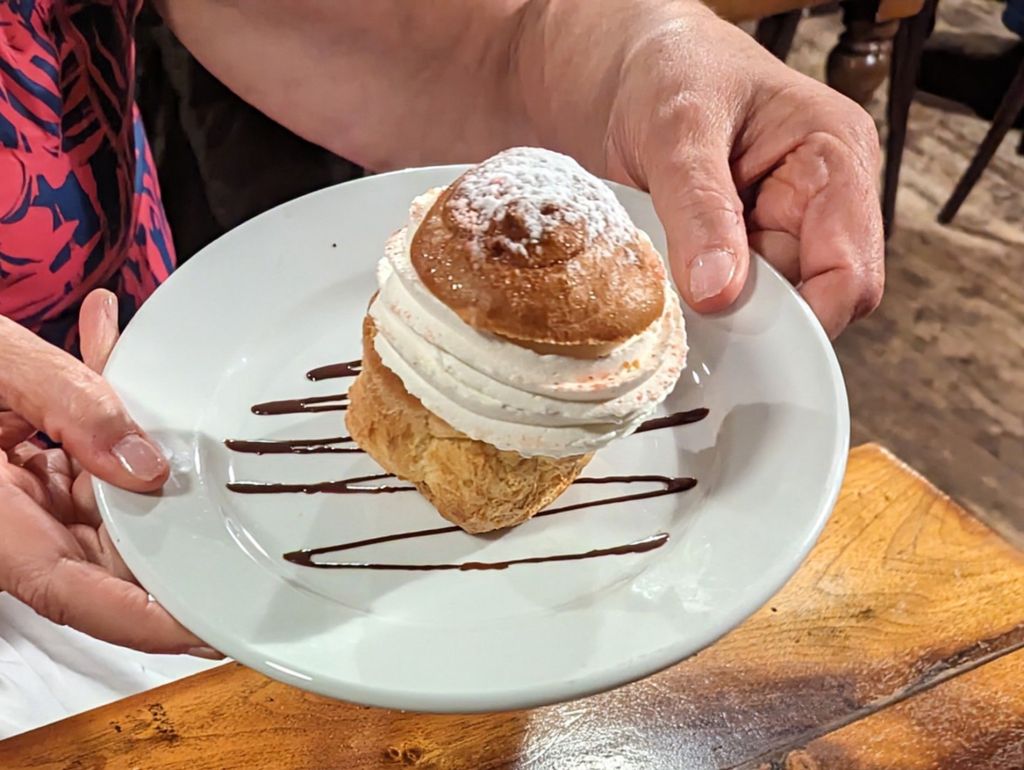


We enjoyed our final Lyon dinner at the chic Cafe Terroir just around the corner from our hotel.

Cafe Terroir describes itself as a “unique French tradition gastronomic table,” and we quite agree. Young Chef Jean-Francois Tetedoi, whose father has a Michelin star, sources the finest local ingredients to offer fresh, organic fare. Our kind, capable server brought a palate cleanser of clear broth and an amuse bouche of chicken heart mousse. The escargot with a garlicky pesto was extraordinary. A specialty of the house is a whole rotisserie Bresse chicken for two artfully carved tableside and served with a velvety yellow wine sauce with morel mushrooms.

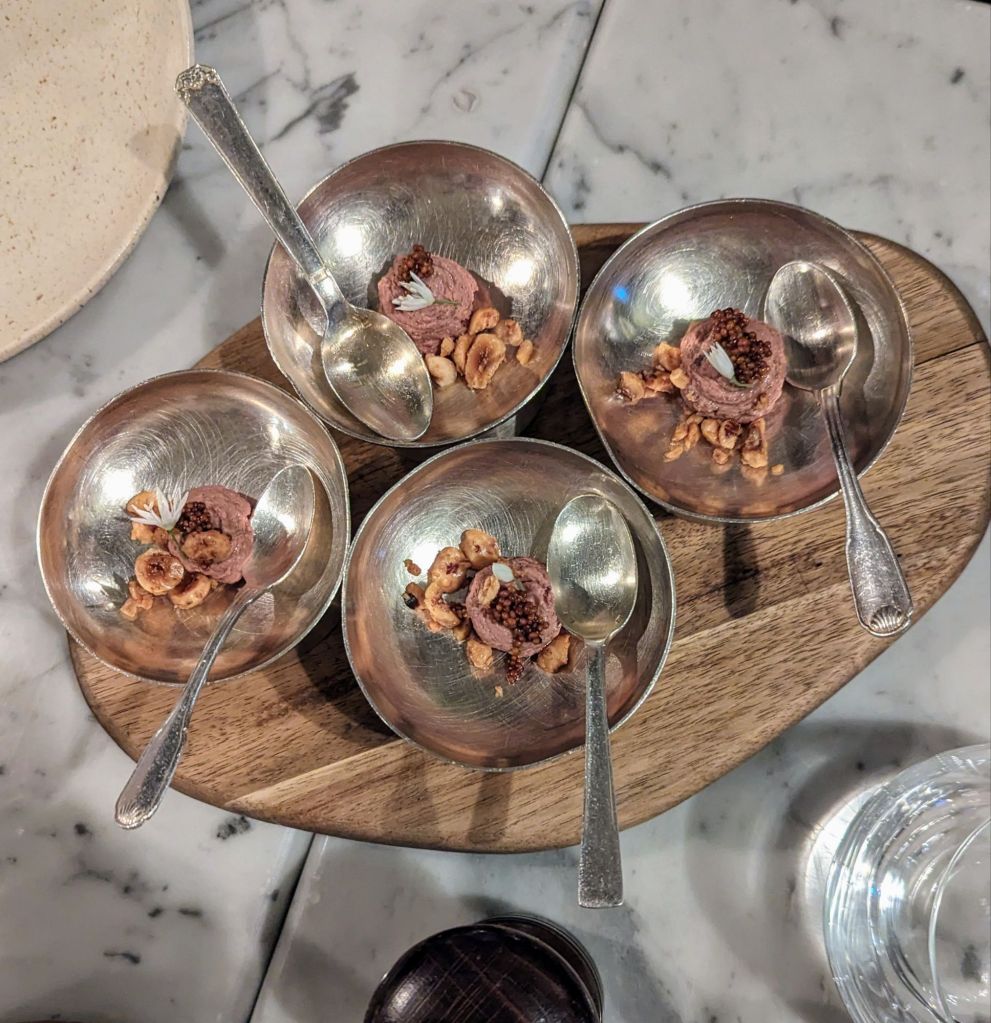


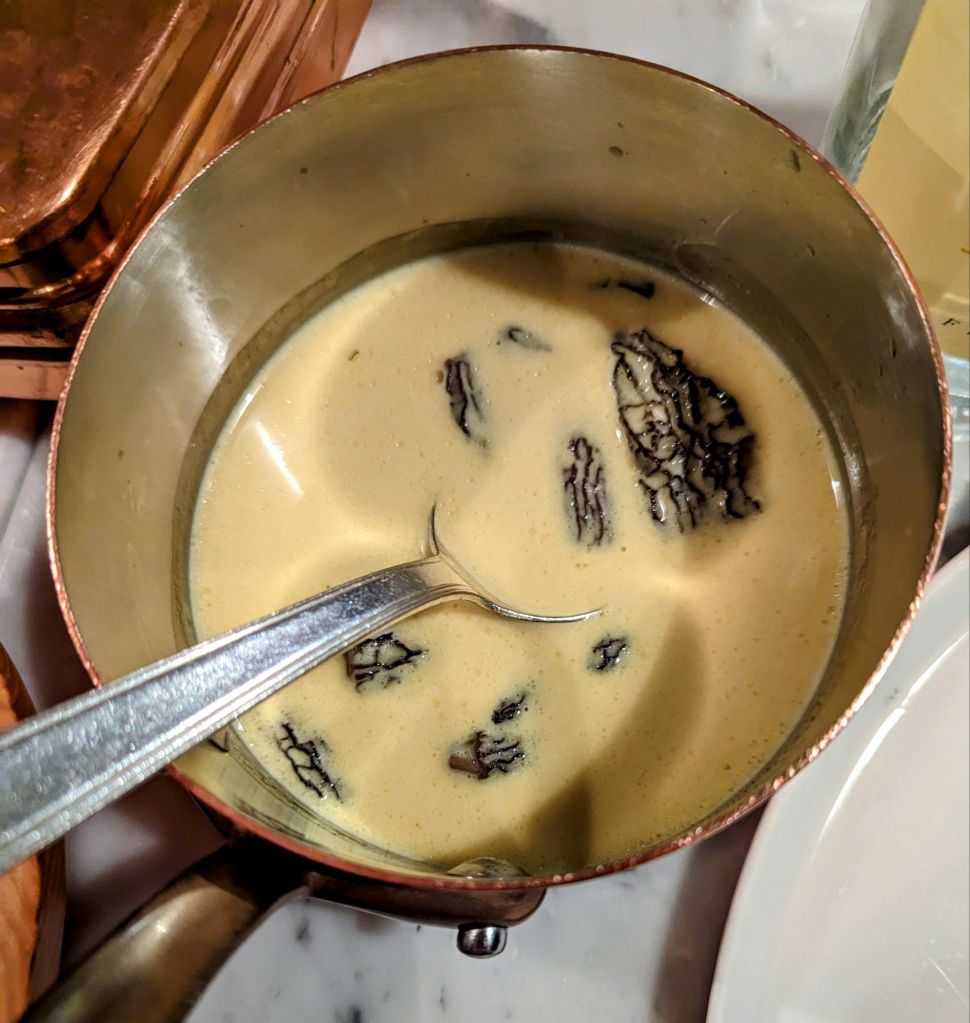

When it came time for dessert, the lights went out and the Theme from Star Wars came on through the speakers as a Happy Birthday for Darlene, who will celebrate a marker birthday with her Copenhagen family next week. She thought the power went out, but the whole room clapped for her!
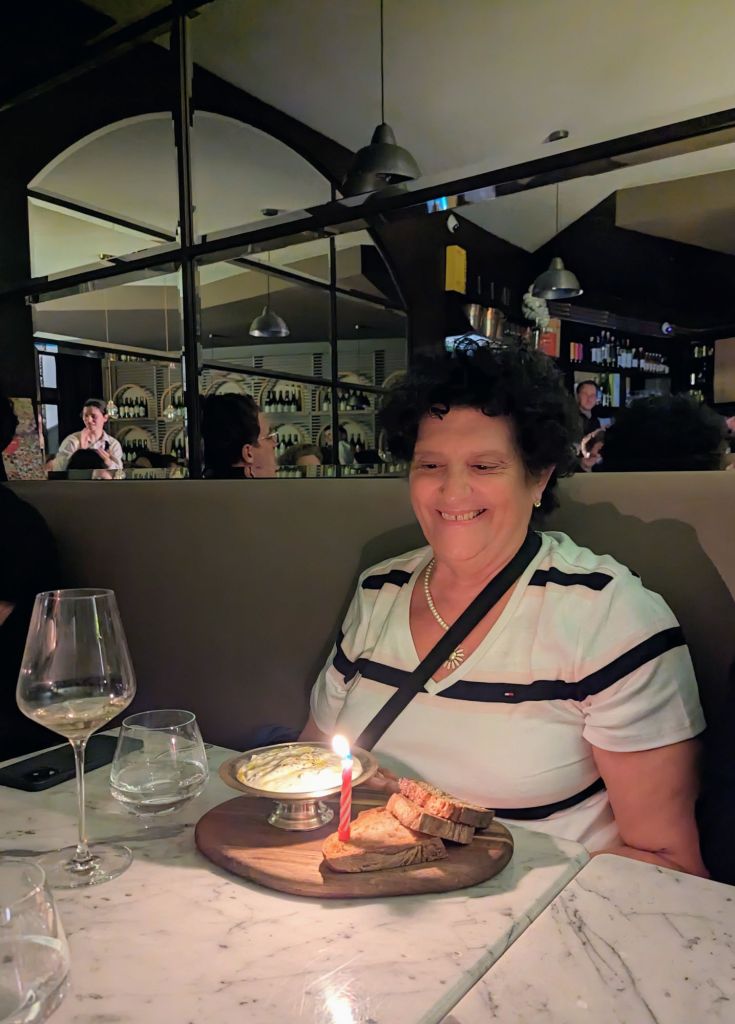
A short walk back to our hotel and we bid a fond farewell to our dear friends and intrepid traveling companions. After months of planning and itinerary-building, we had come to the end of our time together. We stayed healthy and happy and had a wonderful time together.
And life will go on. The Ziegenhagens will continue their journey to visit their Copenhagen family and the Zemans will make their way home to celebrate two family milestones: our son’s upcoming wedding and the birth of our other son’s second son. We’re blessed with relatively good health and doubly blessed with like minded friends.
Until next time …




